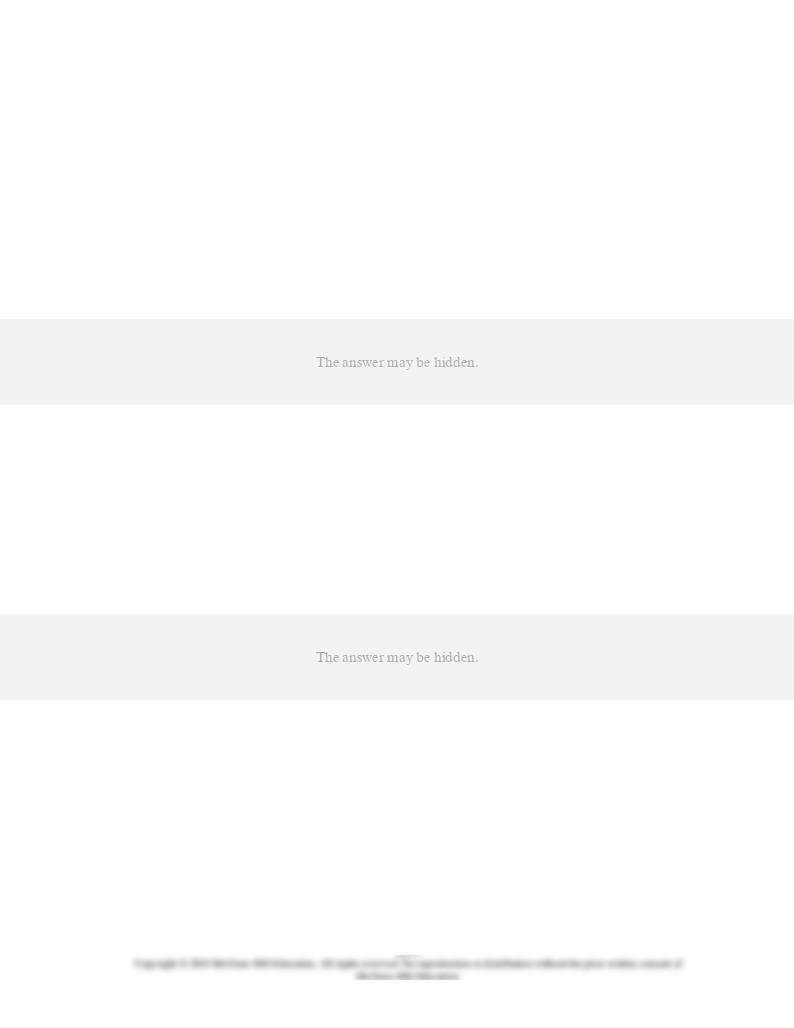
Chapter 29 The Aggregate Expenditures Model Answer Key
Multiple Choice Questions
1.
John Maynard Keynes created the aggregate expenditures model based primarily on what
historical event?
AACSB: Reflective Thinking
Accessibility: Keyboard Navigation
Blooms: Remember
Difficulty: 1 Easy
Learning Objective: 29-01 Explain how sticky prices relate to the aggregate expenditures model.
Topic: Assumptions and simplifications
2.
The aggregate expenditures model is built upon which of the following assumptions?
AACSB: Analytic
Accessibility: Keyboard Navigation
Blooms: Remember
Difficulty: 1 Easy
Learning Objective: 29-01 Explain how sticky prices relate to the aggregate expenditures model.
Topic: Assumptions and simplifications

3.
A private closed economy includes:
AACSB: Analytic
Accessibility: Keyboard Navigation
Blooms: Remember
Difficulty: 1 Easy
Learning Objective: 29-01 Explain how sticky prices relate to the aggregate expenditures model.
Topic: Assumptions and simplifications
4.
In the United States from 1929 to 1933, real GDP _____________ and the unemployment
rate ________________.
AACSB: Analytic
Accessibility: Keyboard Navigation
Blooms: Remember
Difficulty: 1 Easy
Learning Objective: 29-01 Explain how sticky prices relate to the aggregate expenditures model.
Topic: Assumptions and simplifications
5.
In the aggregate expenditures model, it is assumed that investment:
AACSB: Analytic
Accessibility: Keyboard Navigation
Blooms: Remember
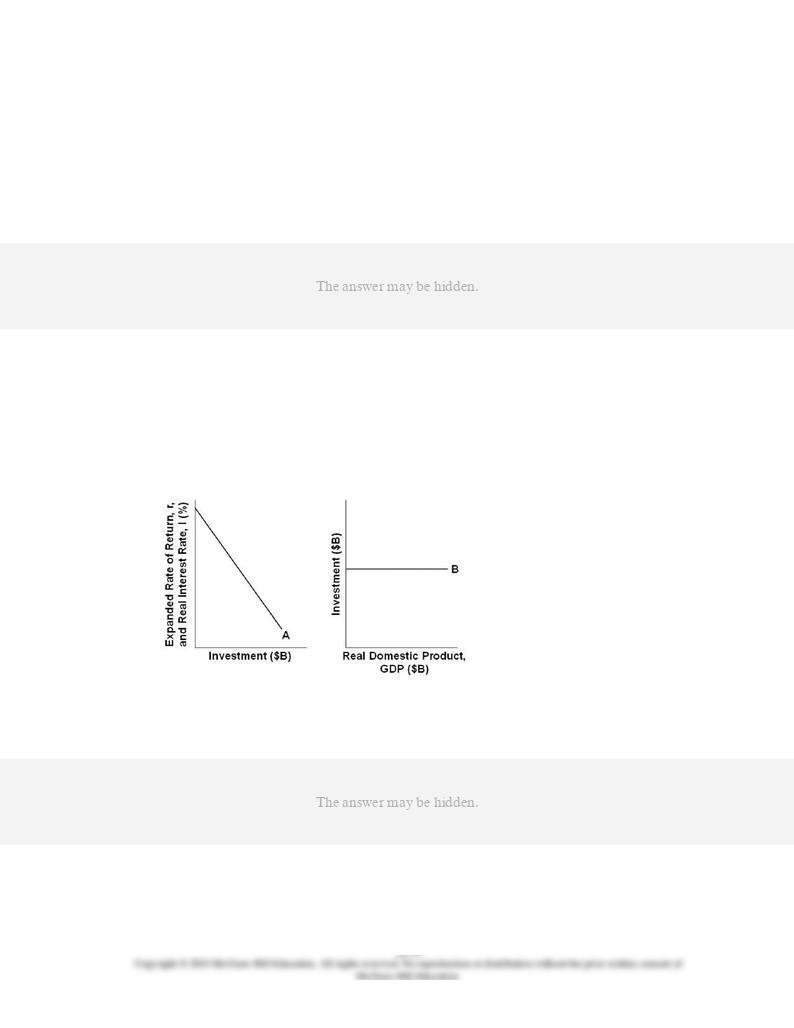
Difficulty: 1 Easy
Learning Objective: 29-02 Explain how an economy's investment schedule is derived from the investment demand curve
and an interest rate.
Topic: Consumption and investment schedules
6.
All else equal, a large decline in the real interest rate will shift the:
AACSB: Reflective Thinking
Accessibility: Keyboard Navigation
Blooms: Understand
Difficulty: 2 Medium
Learning Objective: 29-02 Explain how an economy's investment schedule is derived from the investment demand curve
and an interest rate.
Topic: Consumption and investment schedules
7.
Refer to the diagrams. Curve A:
AACSB: Analytic
Blooms: Remember
Difficulty: 1 Easy
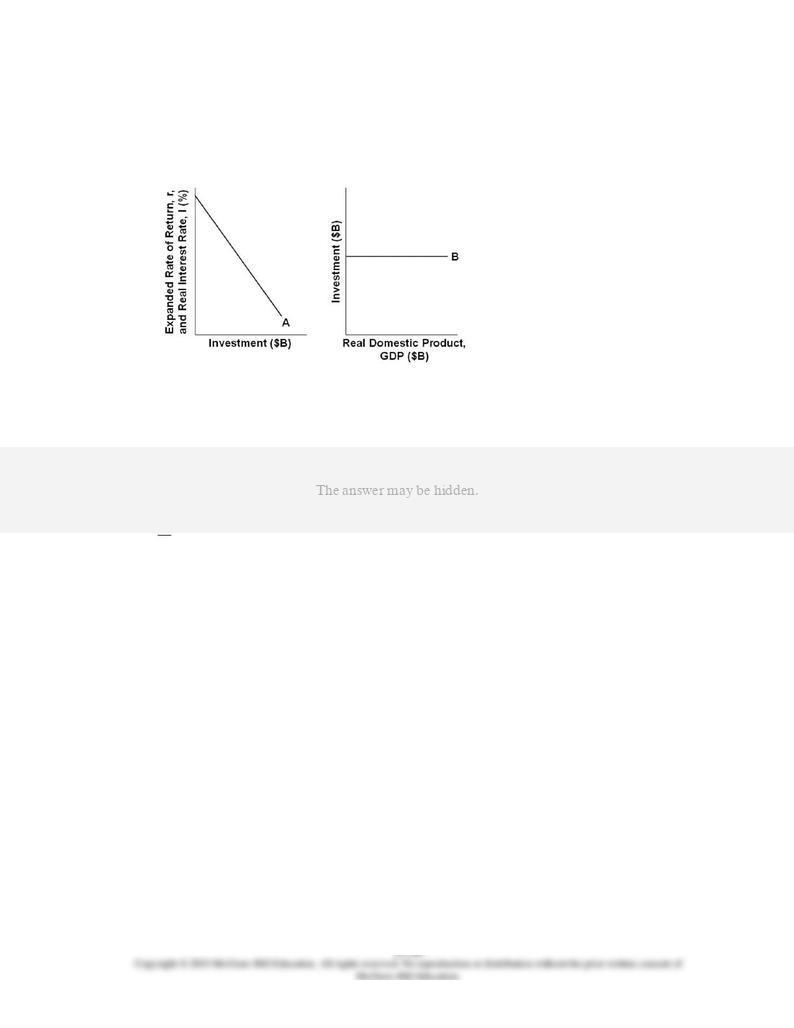
Learning Objective: 29-02 Explain how an economy's investment schedule is derived from the investment demand curve
and an interest rate.
Topic: Consumption and investment schedules
Type: Graph
8.
Refer to the diagrams. Other things equal, curve B will shift upward when:
AACSB: Reflective Thinking
Blooms: Understand
Difficulty: 2 Medium
Learning Objective: 29-02 Explain how an economy's investment schedule is derived from the investment demand curve
and an interest rate.
Topic: Consumption and investment schedules
Type: Graph

9.
Refer to the diagrams. Other things equal, an interest rate decrease will:
AACSB: Reflective Thinking
Blooms: Analyze
Difficulty: 3 Hard
Learning Objective: 29-02 Explain how an economy's investment schedule is derived from the investment demand curve
and an interest rate.
Topic: Consumption and investment schedules
Type: Graph
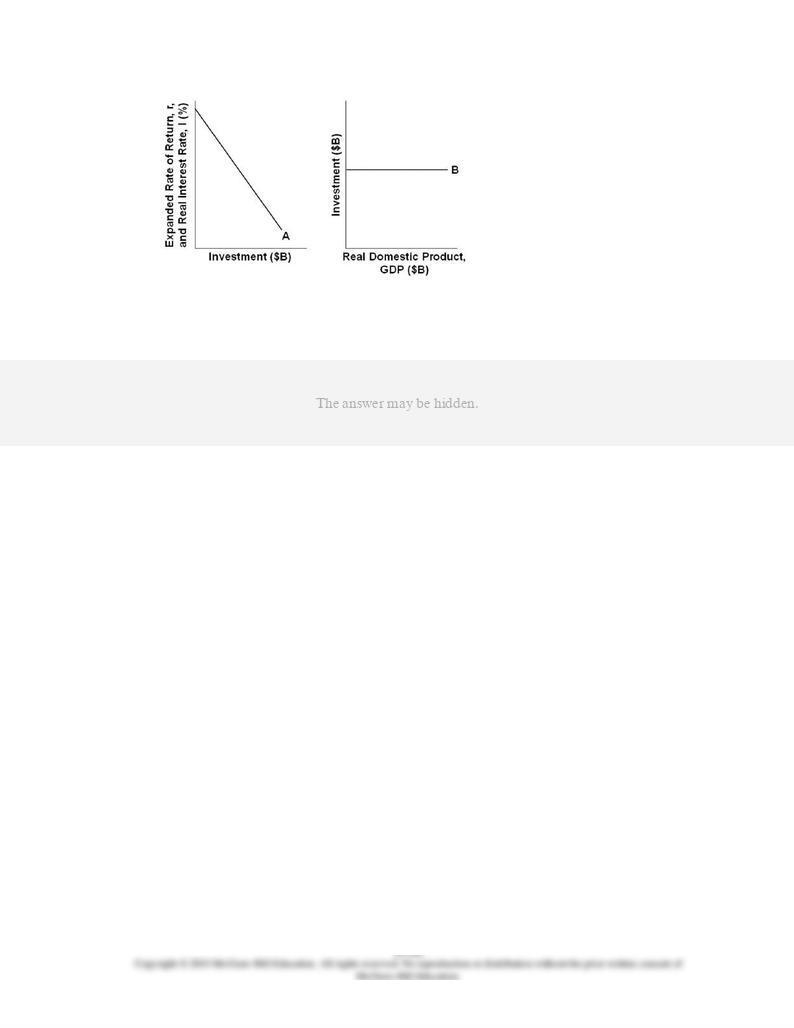
10.
Refer to the diagrams. Other things equal, an interest rate increase will:
AACSB: Reflective Thinking
Blooms: Analyze
Difficulty: 3 Hard
Learning Objective: 29-02 Explain how an economy's investment schedule is derived from the investment demand curve
and an interest rate.
Topic: Consumption and investment schedules
Type: Graph
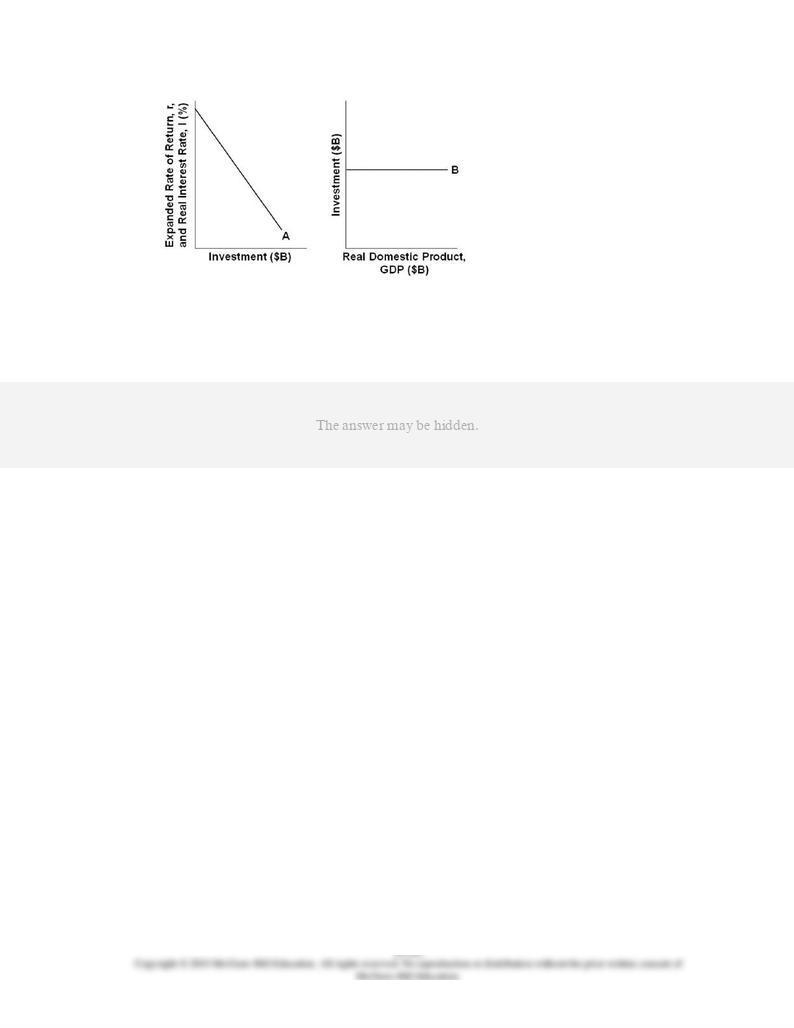
11.
Refer to the diagrams. Other things equal, an interest rate reduction coupled with a
rightward shift in curve A will:
AACSB: Reflective Thinking
Blooms: Analyze
Difficulty: 3 Hard
Learning Objective: 29-02 Explain how an economy's investment schedule is derived from the investment demand curve
and an interest rate.
Topic: Consumption and investment schedules
Type: Graph
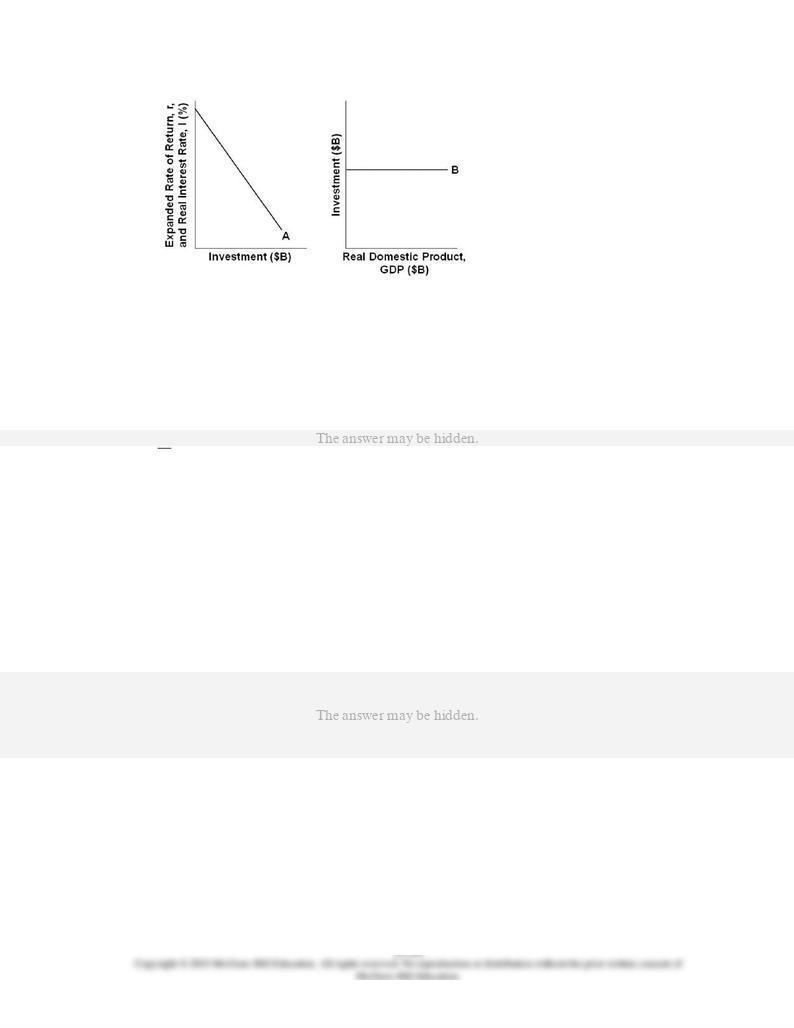
12.
Refer to the diagrams. The location of curve B depends on the:
A.
level of real GDP.
B.
location of curve A only.
C.
interest rate only.
AACSB: Reflective Thinking
Blooms: Understand
Difficulty: 2 Medium
Learning Objective: 29-02 Explain how an economy's investment schedule is derived from the investment demand curve
and an interest rate.
Topic: Consumption and investment schedules
Type: Graph
13.
The level of aggregate expenditures in the private closed economy is determined by the:
AACSB: Analytic
Accessibility: Keyboard Navigation
Blooms: Remember
Difficulty: 1 Easy
Learning Objective: 29-03 Illustrate how economists combine consumption and investment to depict an aggregate
expenditures schedule for a private closed economy and how that schedule can be used to demonstrate the economy's
equilibrium level of output (where the total quantity of goods produced equals the total quantity of goods purchased).
Topic: Equilibrium GDP: C + Ig = GDP
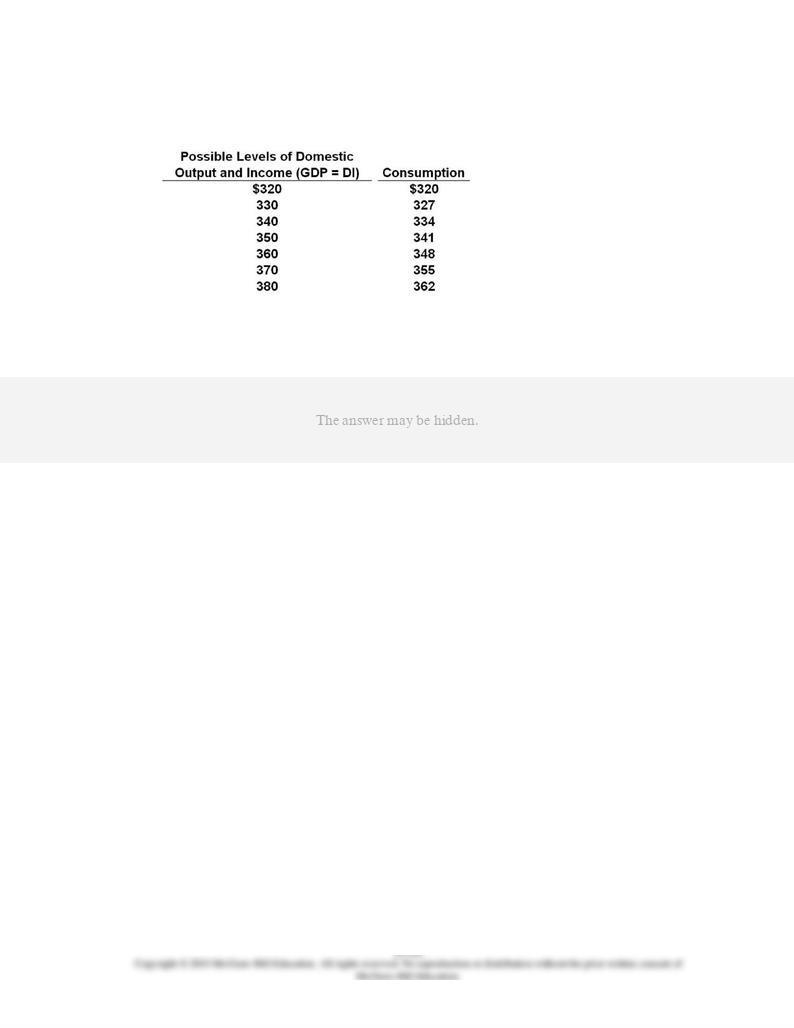
14.
Answer the question on the basis of the following data for a private closed economy.
Refer to the data. The MPS is:
AACSB: Analytic
Blooms: Apply
Difficulty: 2 Medium
Learning Objective: 29-03 Illustrate how economists combine consumption and investment to depict an aggregate
expenditures schedule for a private closed economy and how that schedule can be used to demonstrate the economy's
equilibrium level of output (where the total quantity of goods produced equals the total quantity of goods purchased).
Topic: Equilibrium GDP: C + Ig = GDP
Type: Table
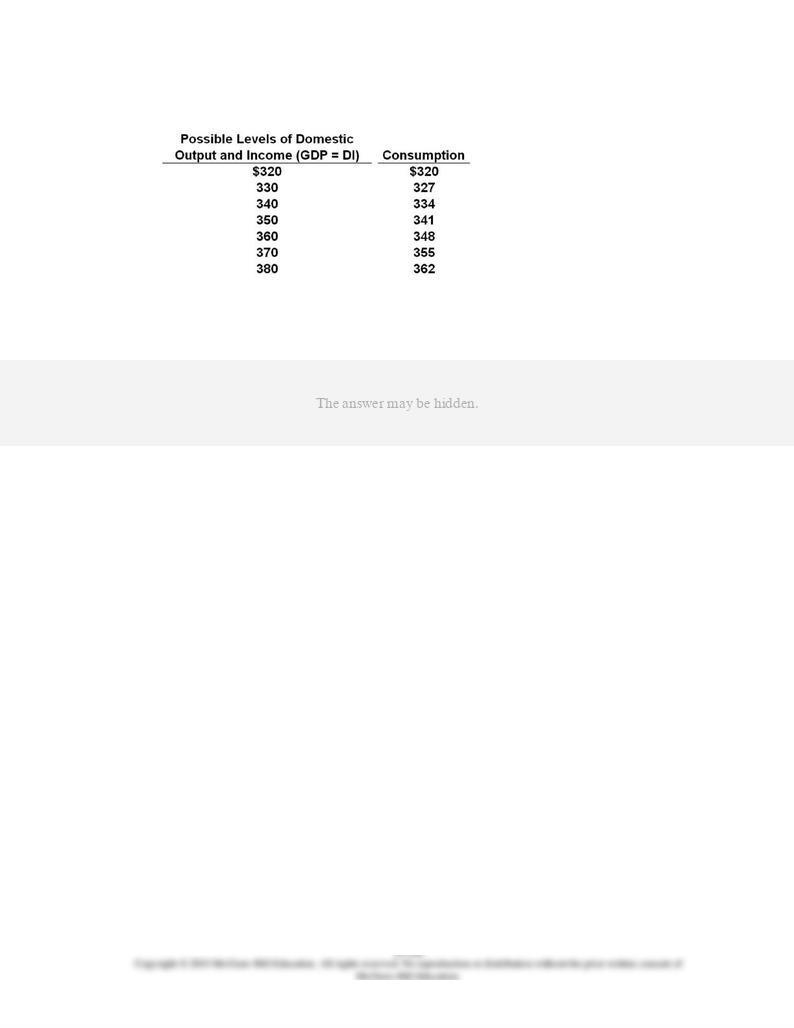
15.
Answer the question on the basis of the following data for a private closed economy.
Refer to the data. At the $370 billion level of DI, the APS is approximately:
AACSB: Analytic
Blooms: Apply
Difficulty: 2 Medium
Learning Objective: 29-03 Illustrate how economists combine consumption and investment to depict an aggregate
expenditures schedule for a private closed economy and how that schedule can be used to demonstrate the economy's
equilibrium level of output (where the total quantity of goods produced equals the total quantity of goods purchased).
Topic: Equilibrium GDP: C + Ig = GDP
Type: Table
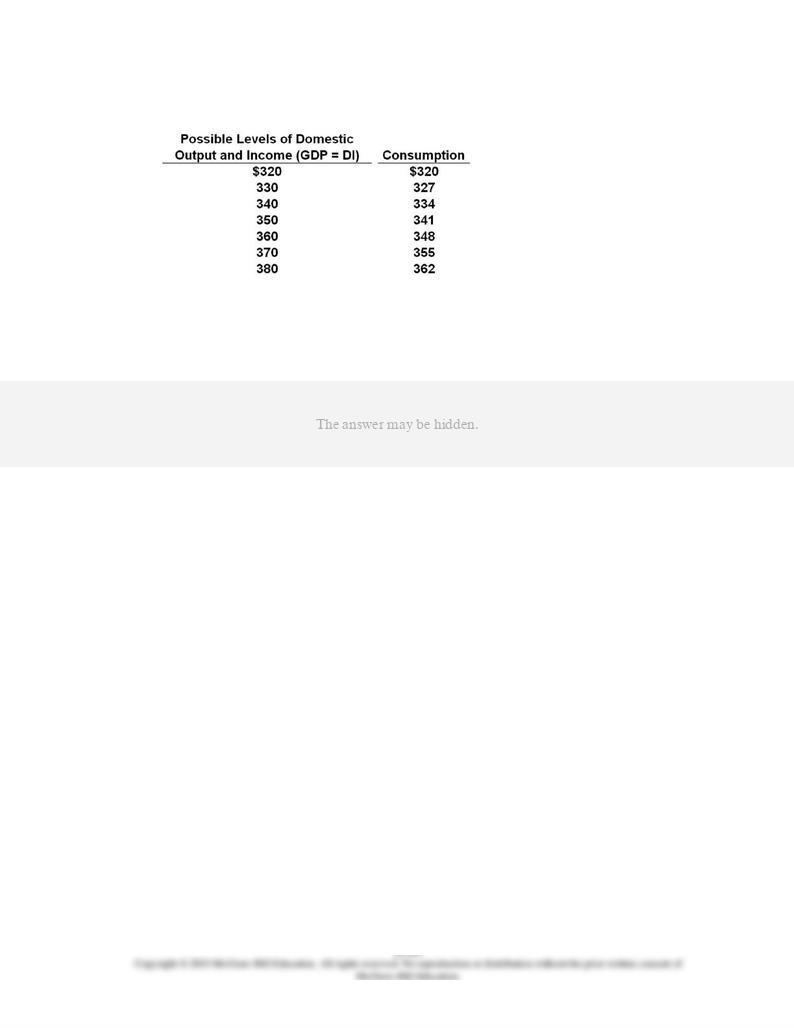
16.
Answer the question on the basis of the following data for a private closed economy.
Refer to the data for a private closed economy. If gross investment is $12 billion, the
equilibrium level of GDP will be:
AACSB: Analytic
Blooms: Analyze
Difficulty: 3 Hard
Learning Objective: 29-03 Illustrate how economists combine consumption and investment to depict an aggregate
expenditures schedule for a private closed economy and how that schedule can be used to demonstrate the economy's
equilibrium level of output (where the total quantity of goods produced equals the total quantity of goods purchased).
Topic: Equilibrium GDP: C + Ig = GDP
Type: Table

17.
Refer to the diagram for a private closed economy. The equilibrium level of GDP is:
AACSB: Analytic
Blooms: Analyze
Difficulty: 3 Hard
Learning Objective: 29-03 Illustrate how economists combine consumption and investment to depict an aggregate
expenditures schedule for a private closed economy and how that schedule can be used to demonstrate the economy's
equilibrium level of output (where the total quantity of goods produced equals the total quantity of goods purchased).
Topic: Equilibrium GDP: C + Ig = GDP
Type: Graph

18.
Refer to the diagram for a private closed economy. At the equilibrium level of GDP,
investment and saving are both:
AACSB: Analytic
Blooms: Analyze
Difficulty: 3 Hard
Learning Objective: 29-03 Illustrate how economists combine consumption and investment to depict an aggregate
expenditures schedule for a private closed economy and how that schedule can be used to demonstrate the economy's
equilibrium level of output (where the total quantity of goods produced equals the total quantity of goods purchased).
Topic: Equilibrium GDP: C + Ig = GDP
Type: Graph
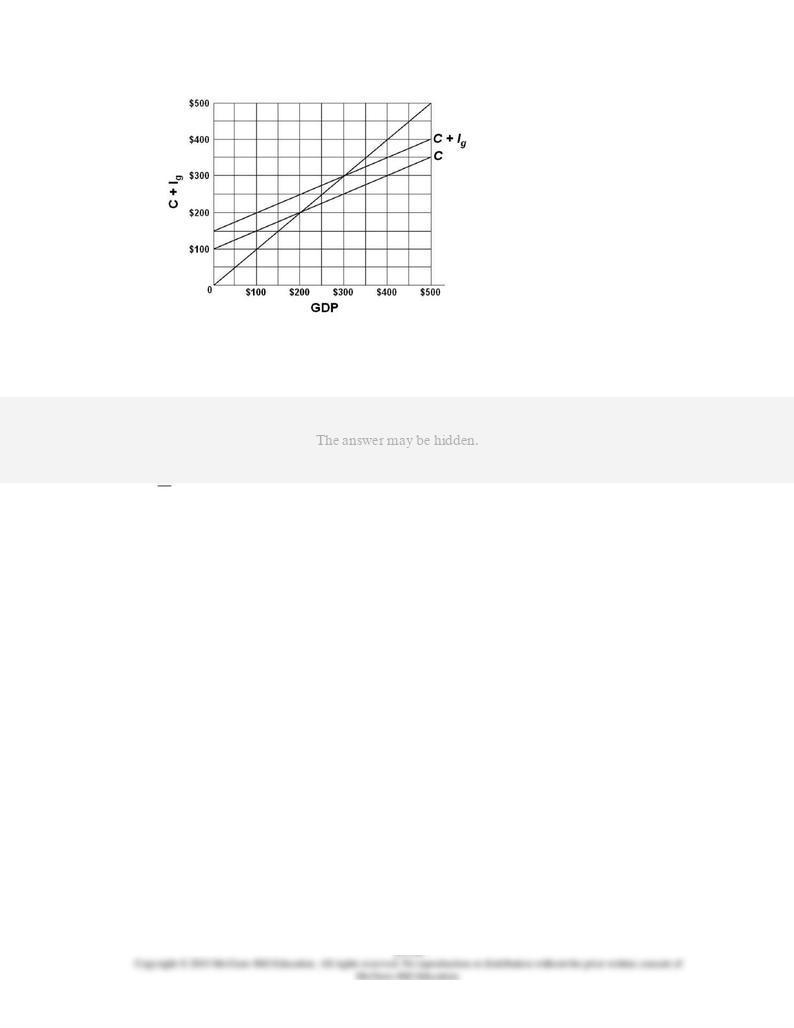
19.
Refer to the diagram for a private closed economy. The $400 level of GDP is:
AACSB: Analytic
Blooms: Analyze
Difficulty: 3 Hard
Learning Objective: 29-03 Illustrate how economists combine consumption and investment to depict an aggregate
expenditures schedule for a private closed economy and how that schedule can be used to demonstrate the economy's
equilibrium level of output (where the total quantity of goods produced equals the total quantity of goods purchased).
Topic: Equilibrium GDP: C + Ig = GDP
Type: Graph
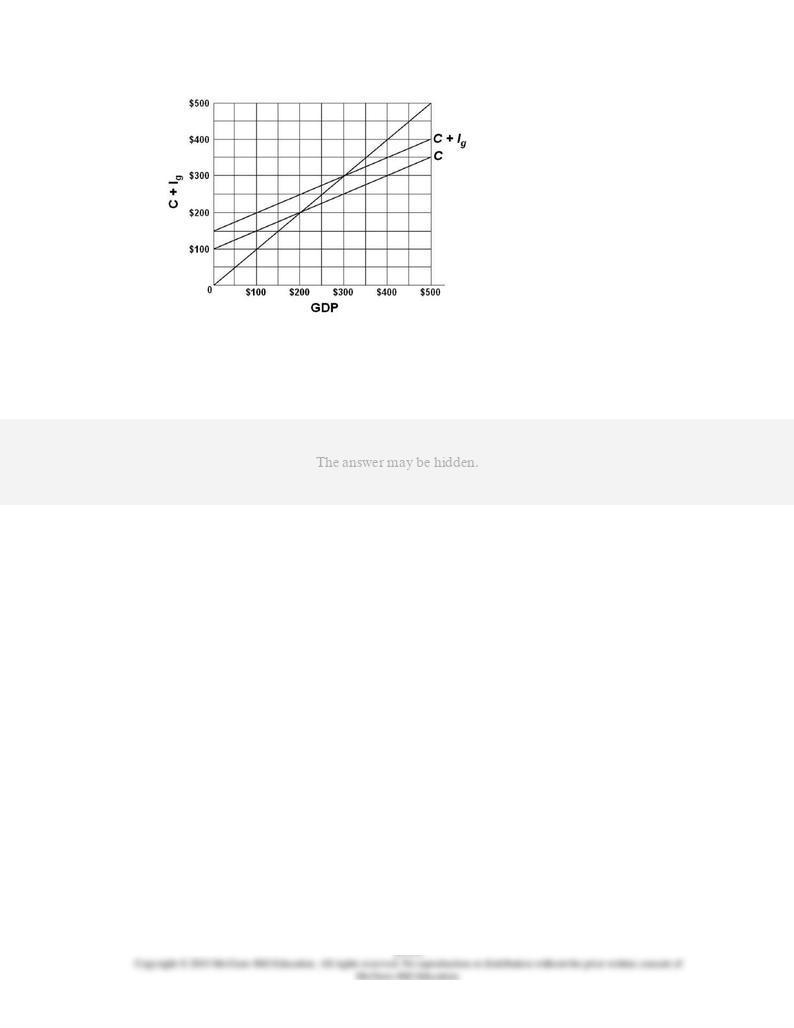
20.
Refer to the diagram for a private closed economy. Unplanned changes in inventories will
be zero:
AACSB: Analytic
Blooms: Analyze
Difficulty: 3 Hard
Learning Objective: 29-04 Discuss the two other ways to characterize the equilibrium level of real GDP in a private closed
economy: saving = investment; and no unplanned changes in inventories.
Topic: Other features of equilibrium GDP
Type: Graph
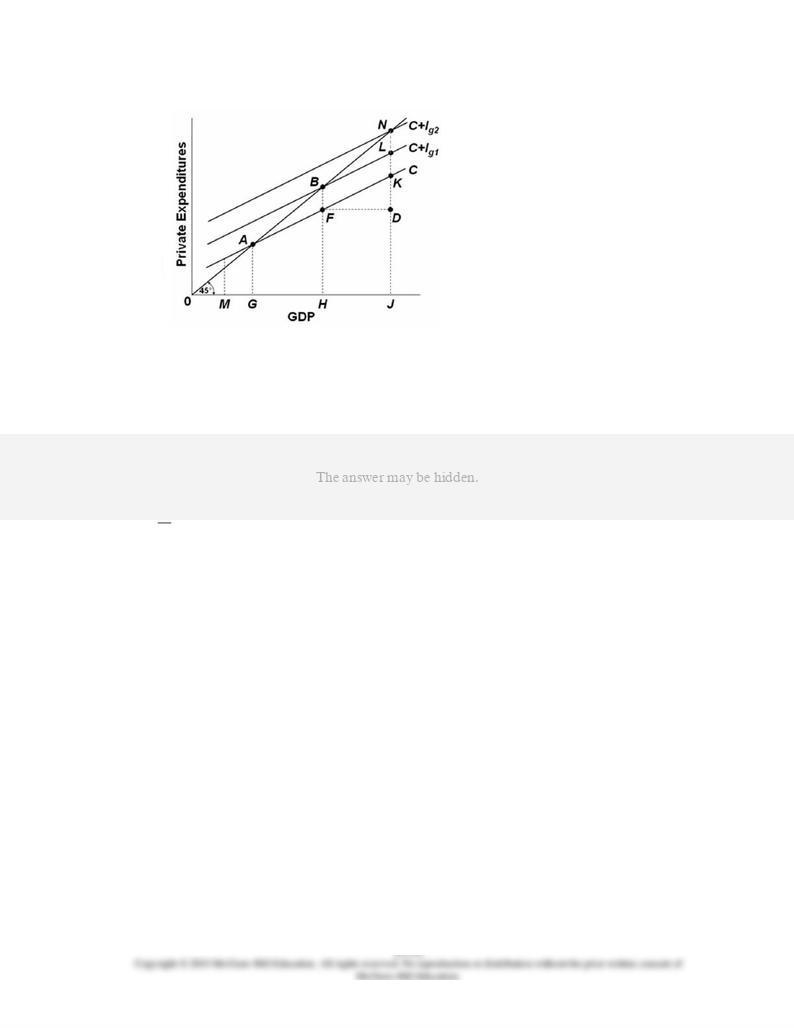
21.
Refer to the diagram that applies to a private closed economy. The APC is equal to 1 at
income level:
AACSB: Analytic
Blooms: Apply
Difficulty: 2 Medium
Learning Objective: 29-03 Illustrate how economists combine consumption and investment to depict an aggregate
expenditures schedule for a private closed economy and how that schedule can be used to demonstrate the economy's
equilibrium level of output (where the total quantity of goods produced equals the total quantity of goods purchased).
Topic: Equilibrium GDP: C + Ig = GDP
Type: Graph

22.
Refer to the diagram that applies to a private closed economy. If aggregate expenditures
are
C
+
Ig
2, the amount of saving at income level
J
is:
AACSB: Reflective Thinking
Blooms: Apply
Difficulty: 2 Medium
Learning Objective: 29-03 Illustrate how economists combine consumption and investment to depict an aggregate
expenditures schedule for a private closed economy and how that schedule can be used to demonstrate the economy's
equilibrium level of output (where the total quantity of goods produced equals the total quantity of goods purchased).
Topic: Equilibrium GDP: C + Ig = GDP
Type: Graph

23.
Refer to the diagram that applies to a private closed economy. If gross investment is
Ig
1,
the equilibrium GDP and the level of consumption will be:
AACSB: Reflective Thinking
Blooms: Analyze
Difficulty: 3 Hard
Learning Objective: 29-03 Illustrate how economists combine consumption and investment to depict an aggregate
expenditures schedule for a private closed economy and how that schedule can be used to demonstrate the economy's
equilibrium level of output (where the total quantity of goods produced equals the total quantity of goods purchased).
Topic: Equilibrium GDP: C + Ig = GDP
Type: Graph
24.
Other things equal, the slope of the aggregate expenditures schedule will increase as a
result of:
AACSB: Reflective Thinking
Accessibility: Keyboard Navigation

Blooms: Understand
Difficulty: 2 Medium
Learning Objective: 29-03 Illustrate how economists combine consumption and investment to depict an aggregate
expenditures schedule for a private closed economy and how that schedule can be used to demonstrate the economy's
equilibrium level of output (where the total quantity of goods produced equals the total quantity of goods purchased).
Topic: Equilibrium GDP: C + Ig = GDP
25.
In a private closed economy, when aggregate expenditures equal GDP:
AACSB: Analytic
Accessibility: Keyboard Navigation
Blooms: Understand
Difficulty: 2 Medium
Learning Objective: 29-04 Discuss the two other ways to characterize the equilibrium level of real GDP in a private closed
economy: saving = investment; and no unplanned changes in inventories.
Topic: Other features of equilibrium GDP
26.
In a private closed economy, when aggregate expenditures exceed GDP:
AACSB: Reflective Thinking
Accessibility: Keyboard Navigation
Blooms: Understand
Difficulty: 2 Medium
Learning Objective: 29-04 Discuss the two other ways to characterize the equilibrium level of real GDP in a private closed
economy: saving = investment; and no unplanned changes in inventories.
Topic: Other features of equilibrium GDP

27.
If an unintended increase in business inventories occurs at some level of GDP, then GDP:
AACSB: Reflective Thinking
Accessibility: Keyboard Navigation
Blooms: Understand
Difficulty: 2 Medium
Learning Objective: 29-04 Discuss the two other ways to characterize the equilibrium level of real GDP in a private closed
economy: saving = investment; and no unplanned changes in inventories.
Topic: Other features of equilibrium GDP
28.
The equilibrium level of GDP is associated with:
AACSB: Analytic
Accessibility: Keyboard Navigation
Blooms: Understand
Difficulty: 2 Medium
Learning Objective: 29-04 Discuss the two other ways to characterize the equilibrium level of real GDP in a private closed
economy: saving = investment; and no unplanned changes in inventories.
Topic: Other features of equilibrium GDP
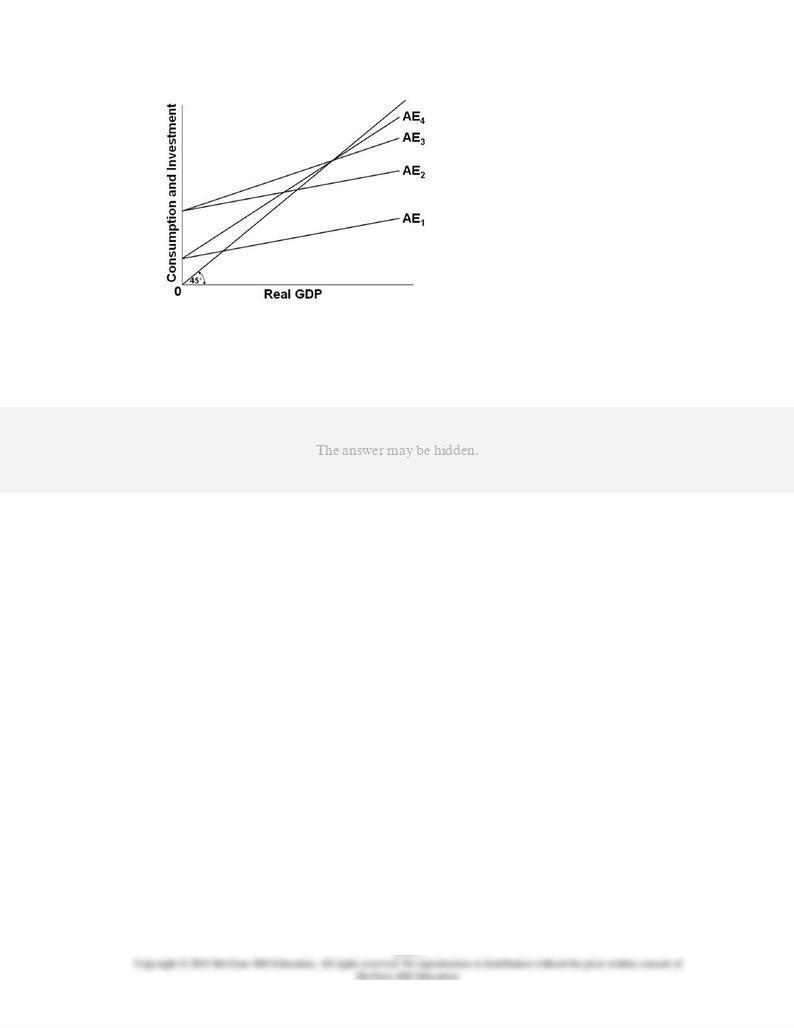
29.
Which aggregate expenditure schedule AE in the diagram for a private closed economy
implies the largest MPC, assuming investment is the same at each level of income?
AACSB: Reflective Thinking
Blooms: Apply
Difficulty: 2 Medium
Learning Objective: 29-03 Illustrate how economists combine consumption and investment to depict an aggregate
expenditures schedule for a private closed economy and how that schedule can be used to demonstrate the economy's
equilibrium level of output (where the total quantity of goods produced equals the total quantity of goods purchased).
Topic: Equilibrium GDP: C + Ig = GDP
Type: Graph

30.
Which two aggregate expenditure schedules AE in the diagram for a private closed
economy have the same MPC, assuming investment is the same at each level of income?
1 and
2.
2 and
3.
1 and
4.
3 and
4.
AACSB: Reflective Thinking
Blooms: Apply
Difficulty: 2 Medium
Learning Objective: 29-03 Illustrate how economists combine consumption and investment to depict an aggregate
expenditures schedule for a private closed economy and how that schedule can be used to demonstrate the economy's
equilibrium level of output (where the total quantity of goods produced equals the total quantity of goods purchased).
Topic: Equilibrium GDP: C + Ig = GDP
Type: Graph
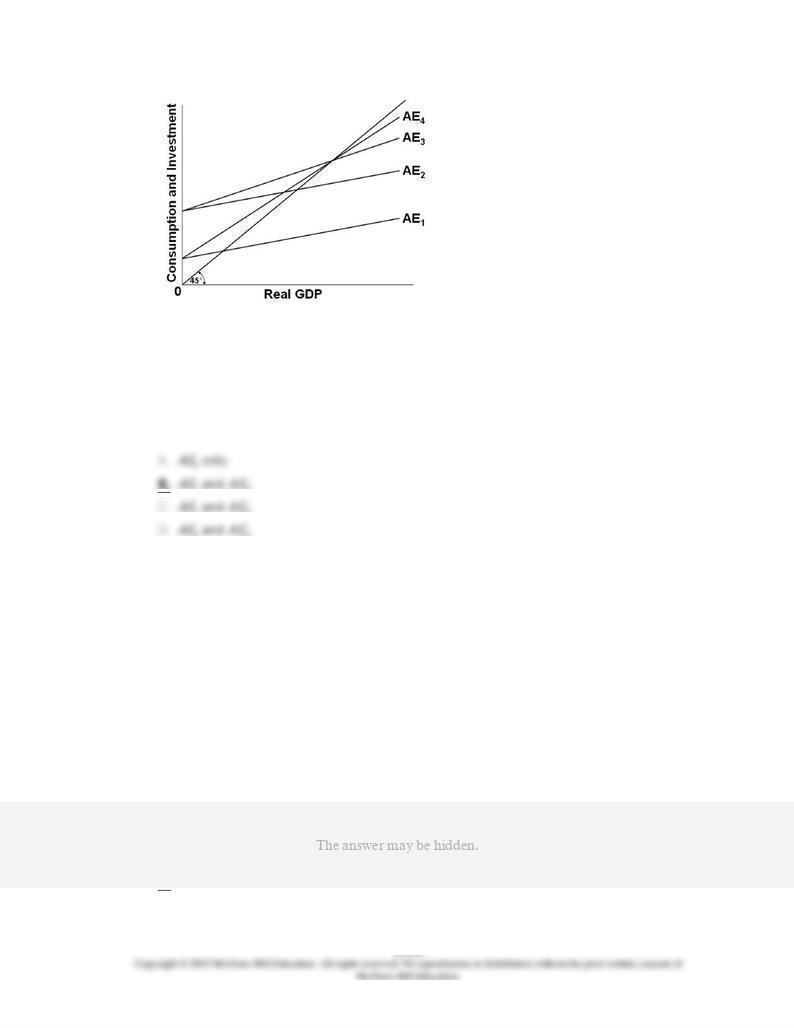
31.
Which aggregate expenditure schedule(s) AE in the diagram for a private closed economy
represent(s) the highest level of investment, assuming investment is the same at each
level of income and the level of consumption at zero income is the same for each
schedule?
2 and
3.
1 and
4.
3 and
4.
AACSB: Reflective Thinking
Blooms: Apply
Difficulty: 2 Medium
Learning Objective: 29-03 Illustrate how economists combine consumption and investment to depict an aggregate
expenditures schedule for a private closed economy and how that schedule can be used to demonstrate the economy's
equilibrium level of output (where the total quantity of goods produced equals the total quantity of goods purchased).
Topic: Equilibrium GDP: C + Ig = GDP
Type: Graph
32.
If at some level of GDP the economy is experiencing an unintended decrease in
inventories:
AACSB: Reflective Thinking

Accessibility: Keyboard Navigation
Blooms: Analyze
Difficulty: 3 Hard
Learning Objective: 29-04 Discuss the two other ways to characterize the equilibrium level of real GDP in a private closed
economy: saving = investment; and no unplanned changes in inventories.
Topic: Other features of equilibrium GDP
33.
If an unintended increase in business inventories occurs:
AACSB: Reflective Thinking
Accessibility: Keyboard Navigation
Blooms: Analyze
Difficulty: 3 Hard
Learning Objective: 29-04 Discuss the two other ways to characterize the equilibrium level of real GDP in a private closed
economy: saving = investment; and no unplanned changes in inventories.
Topic: Other features of equilibrium GDP
34.
Assume that in a private closed economy consumption is $240 billion and investment is
$50 billion, both at the $280 billion level of domestic output. Thus:
AACSB: Analytic
Accessibility: Keyboard Navigation
Blooms: Apply
Difficulty: 2 Medium
Learning Objective: 29-04 Discuss the two other ways to characterize the equilibrium level of real GDP in a private closed
economy: saving = investment; and no unplanned changes in inventories.
Topic: Other features of equilibrium GDP

35.
A private closed economy will expand when:
AACSB: Reflective Thinking
Accessibility: Keyboard Navigation
Blooms: Understand
Difficulty: 2 Medium
Learning Objective: 29-04 Discuss the two other ways to characterize the equilibrium level of real GDP in a private closed
economy: saving = investment; and no unplanned changes in inventories.
Topic: Other features of equilibrium GDP
36.
If aggregate expenditures exceed GDP in a private closed economy:
AACSB: Reflective Thinking
Accessibility: Keyboard Navigation
Blooms: Understand
Difficulty: 2 Medium
Learning Objective: 29-04 Discuss the two other ways to characterize the equilibrium level of real GDP in a private closed
economy: saving = investment; and no unplanned changes in inventories.
Topic: Other features of equilibrium GDP
37.
For a private closed economy, an unintended decline in inventories suggests that:
AACSB: Reflective Thinking
Accessibility: Keyboard Navigation
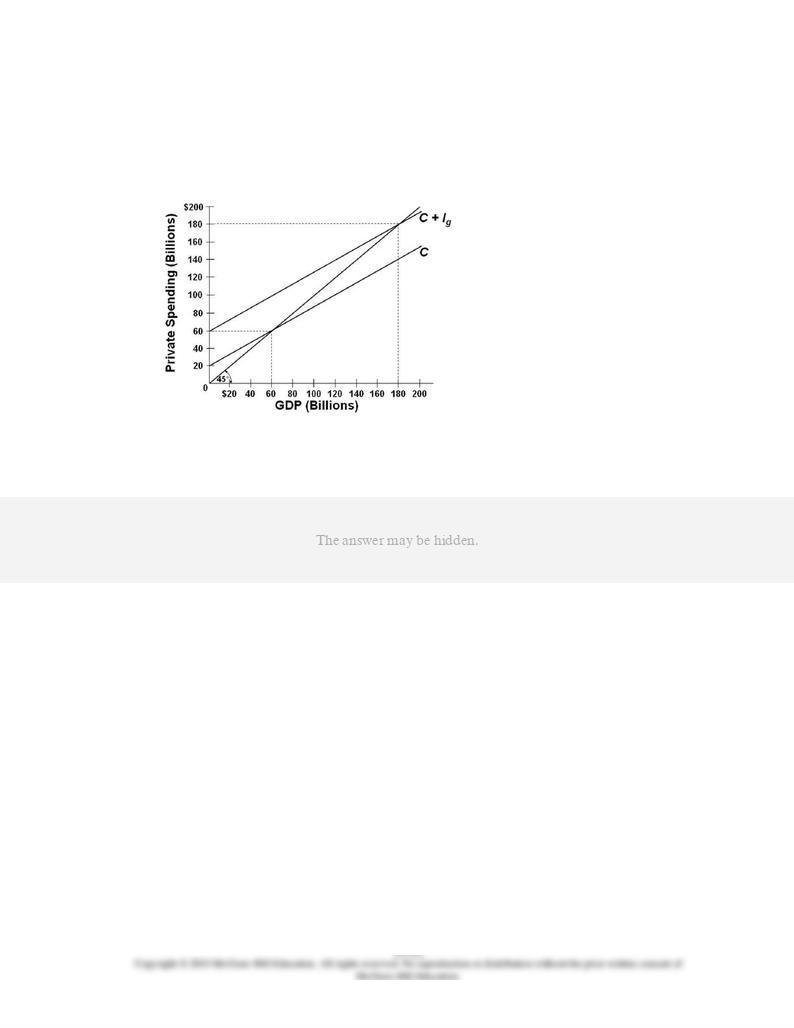
Blooms: Understand
Difficulty: 2 Medium
Learning Objective: 29-04 Discuss the two other ways to characterize the equilibrium level of real GDP in a private closed
economy: saving = investment; and no unplanned changes in inventories.
Topic: Other features of equilibrium GDP
38.
Refer to the diagram for a private closed economy. The equilibrium GDP is:
AACSB: Analytic
Blooms: Analyze
Difficulty: 3 Hard
Learning Objective: 29-03 Illustrate how economists combine consumption and investment to depict an aggregate
expenditures schedule for a private closed economy and how that schedule can be used to demonstrate the economy's
equilibrium level of output (where the total quantity of goods produced equals the total quantity of goods purchased).
Topic: Equilibrium GDP: C + Ig = GDP
Type: Graph

39.
Refer to the diagram for a private closed economy. In this economy, investment:
AACSB: Analytic
Blooms: Apply
Difficulty: 2 Medium
Learning Objective: 29-03 Illustrate how economists combine consumption and investment to depict an aggregate
expenditures schedule for a private closed economy and how that schedule can be used to demonstrate the economy's
equilibrium level of output (where the total quantity of goods produced equals the total quantity of goods purchased).
Topic: Equilibrium GDP: C + Ig = GDP
Type: Graph

40.
Refer to the diagram for a private closed economy. In this economy, aggregate
expenditures:
AACSB: Analytic
Blooms: Apply
Difficulty: 2 Medium
Learning Objective: 29-03 Illustrate how economists combine consumption and investment to depict an aggregate
expenditures schedule for a private closed economy and how that schedule can be used to demonstrate the economy's
equilibrium level of output (where the total quantity of goods produced equals the total quantity of goods purchased).
Topic: Equilibrium GDP: C + Ig = GDP
Type: Graph
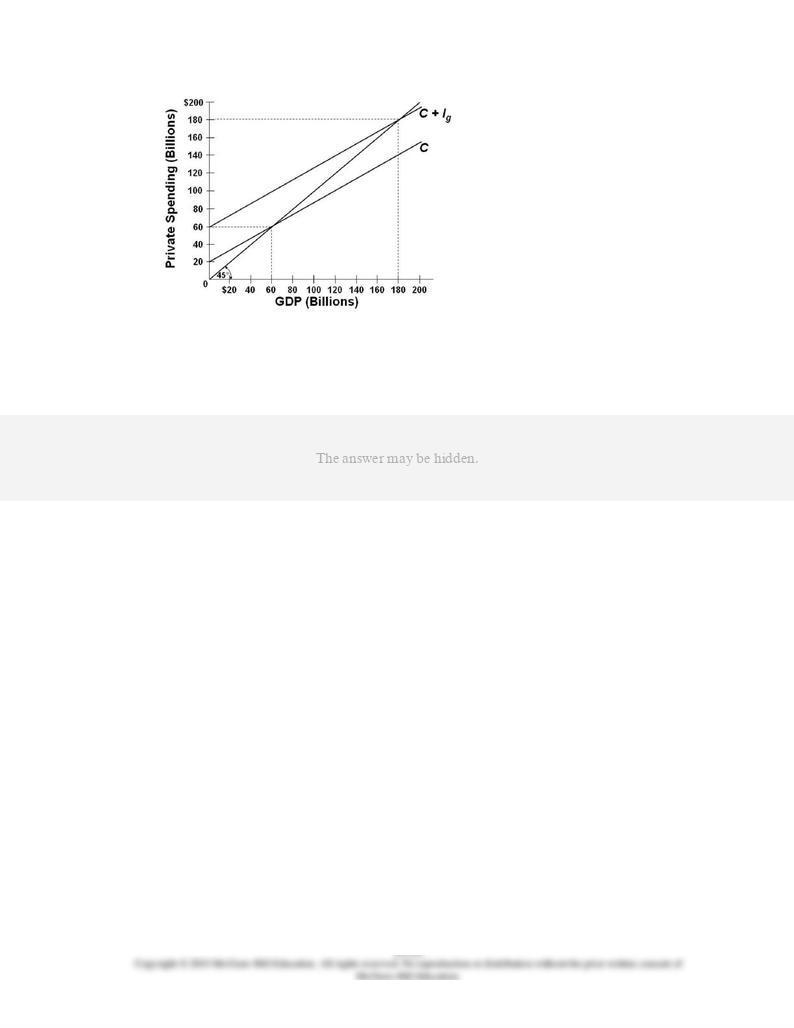
41.
Refer to the diagram for a private closed economy. Aggregate saving in this economy will
be zero when:
AACSB: Analytic
Blooms: Apply
Difficulty: 2 Medium
Learning Objective: 29-03 Illustrate how economists combine consumption and investment to depict an aggregate
expenditures schedule for a private closed economy and how that schedule can be used to demonstrate the economy's
equilibrium level of output (where the total quantity of goods produced equals the total quantity of goods purchased).
Topic: Equilibrium GDP: C + Ig = GDP
Type: Graph

42.
(Advanced analysis) Answer the question on the basis of the following consumption and
investment data for a private closed economy. Figures are in billions of dollars.
A.
360.
C.
200.
D.
135.
AACSB: Analytic
Accessibility: Keyboard Navigation
Blooms: Analyze
Difficulty: 3 Hard
Learning Objective: 29-03 Illustrate how economists combine consumption and investment to depict an aggregate
expenditures schedule for a private closed economy and how that schedule can be used to demonstrate the economy's
equilibrium level of output (where the total quantity of goods produced equals the total quantity of goods purchased).
Topic: Equilibrium GDP: C + Ig = GDP
43.
(Advanced analysis) Answer the question on the basis of the following consumption and
investment data for a private closed economy. Figures are in billions of dollars.
A.
170.
B.
270.
C.
160.
AACSB: Analytic
Accessibility: Keyboard Navigation
Blooms: Analyze
Difficulty: 3 Hard
Learning Objective: 29-03 Illustrate how economists combine consumption and investment to depict an aggregate
expenditures schedule for a private closed economy and how that schedule can be used to demonstrate the economy's
equilibrium level of output (where the total quantity of goods produced equals the total quantity of goods purchased).
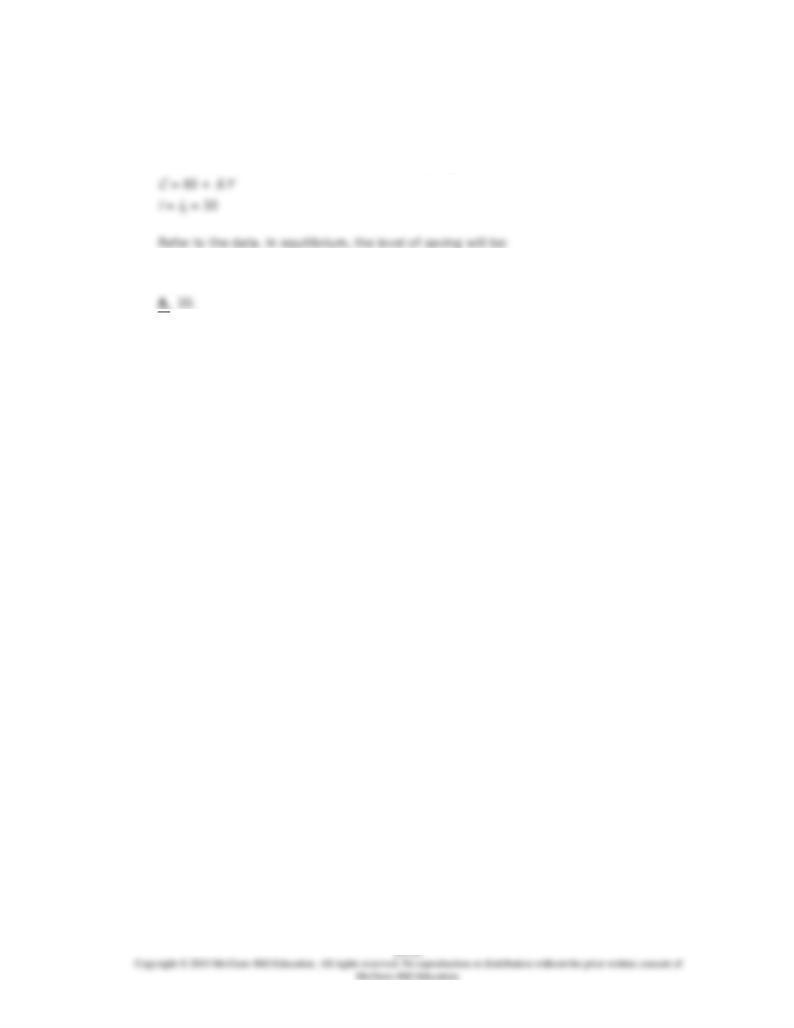
Topic: Equilibrium GDP: C + Ig = GDP
44.
(Advanced analysis) Answer the question on the basis of the following consumption and
investment data for a private closed economy. Figures are in billions of dollars.
B.
26.
C.
25.
D.
60.
AACSB: Analytic
Blooms: Analyze
Difficulty: 3 Hard
Learning Objective: 29-03 Illustrate how economists combine consumption and investment to depict an aggregate
expenditures schedule for a private closed economy and how that schedule can be used to demonstrate the economy's
equilibrium level of output (where the total quantity of goods produced equals the total quantity of goods purchased).
Topic: Equilibrium GDP: C + Ig = GDP
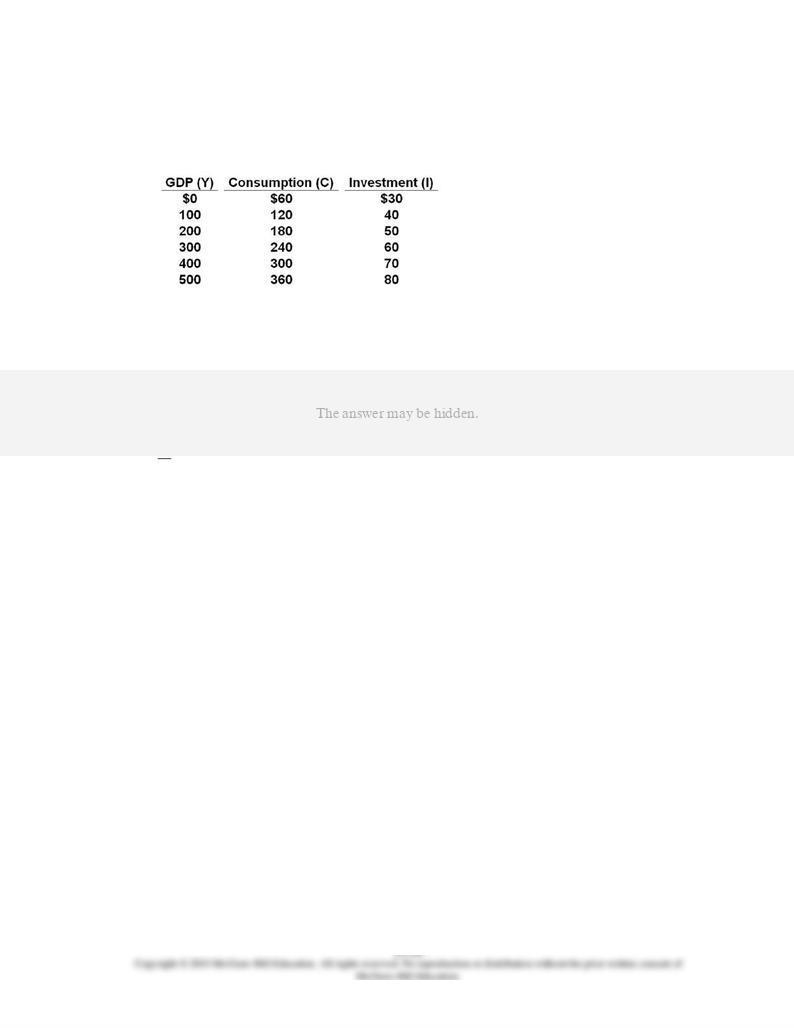
45.
(Advanced analysis) Answer the question on the basis of the following data for a private
closed economy. The letters
Y
,
C
,
S
, and
I
are used to represent real GDP, consumption,
saving, and investment respectively.
The equation representing the consumption schedule for the economy is:
AACSB: Analytic
Blooms: Apply
Difficulty: 2 Medium
Learning Objective: 29-03 Illustrate how economists combine consumption and investment to depict an aggregate
expenditures schedule for a private closed economy and how that schedule can be used to demonstrate the economy's
equilibrium level of output (where the total quantity of goods produced equals the total quantity of goods purchased).
Topic: Equilibrium GDP: C + Ig = GDP
Type: Table
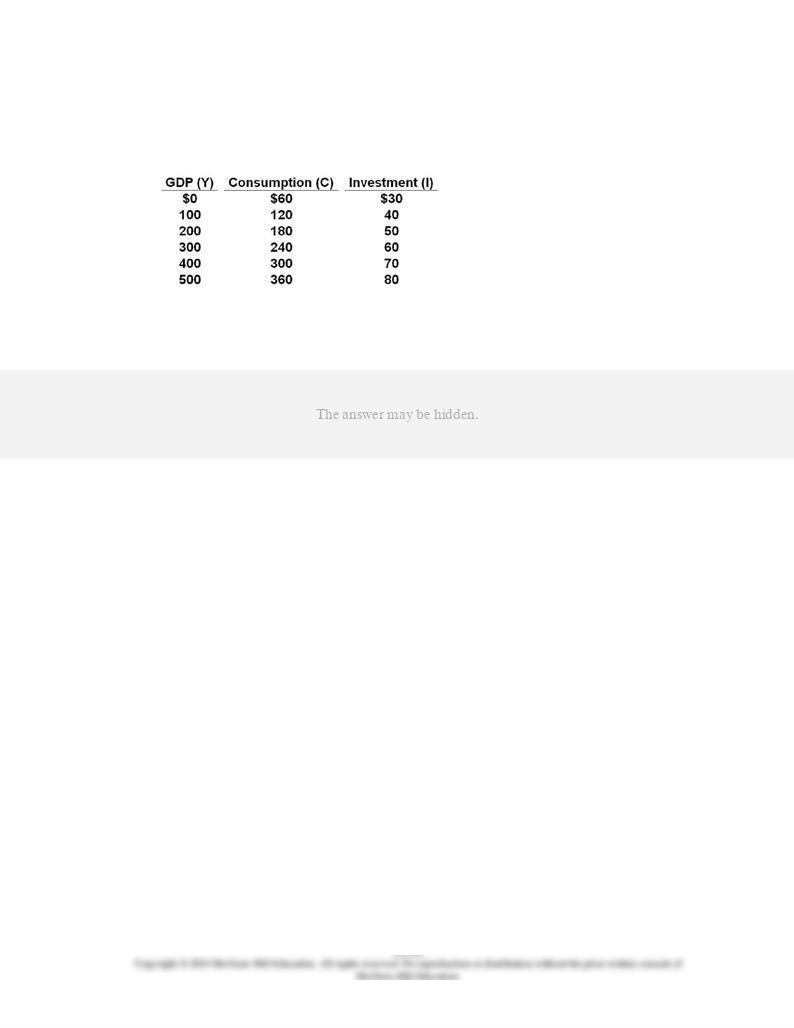
46.
(Advanced analysis) Answer the question on the basis of the following data for a private
closed economy. The letters
Y
,
C
,
S
, and
I
are used to represent real GDP, consumption,
saving, and investment respectively.
The equation representing the investment schedule for the economy is:
AACSB: Analytic
Blooms: Apply
Difficulty: 2 Medium
Learning Objective: 29-03 Illustrate how economists combine consumption and investment to depict an aggregate
expenditures schedule for a private closed economy and how that schedule can be used to demonstrate the economy's
equilibrium level of output (where the total quantity of goods produced equals the total quantity of goods purchased).
Topic: Equilibrium GDP: C + Ig = GDP
Type: Table
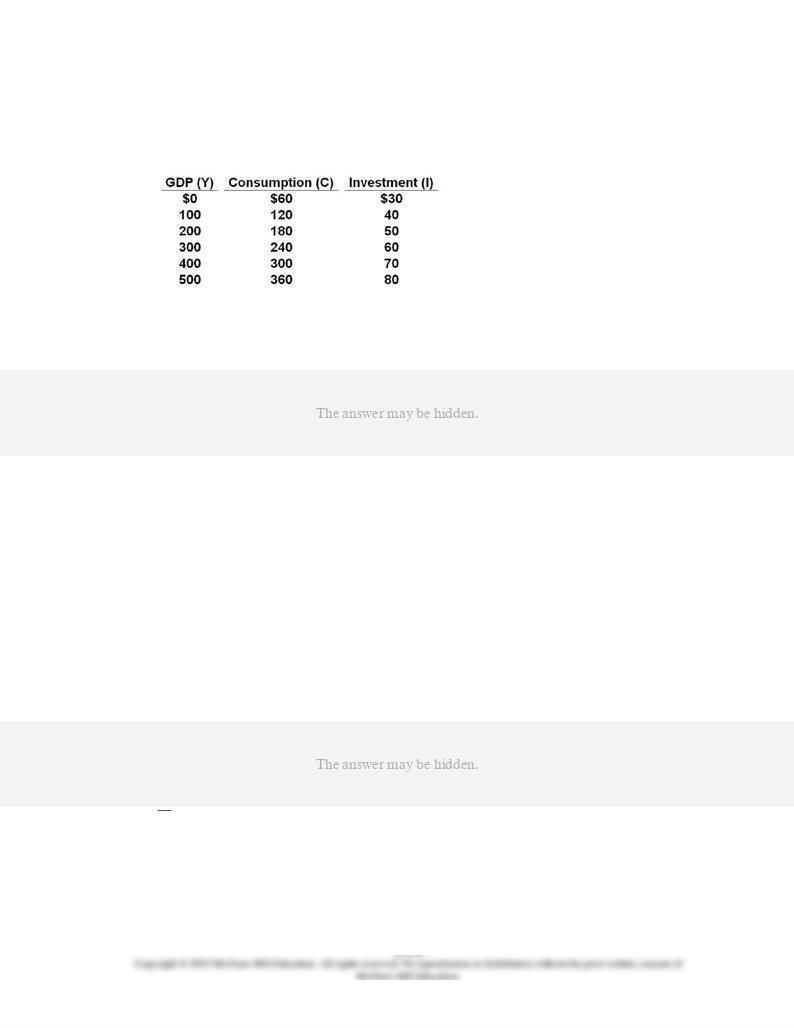
47.
(Advanced analysis) Answer the question on the basis of the following data for a private
closed economy. The letters
Y
,
C
,
S
, and
I
are used to represent real GDP, consumption,
saving, and investment respectively.
Refer to the data. Equilibrium
Y
(= GDP) is:
AACSB: Analytic
Blooms: Analyze
Difficulty: 3 Hard
Learning Objective: 29-03 Illustrate how economists combine consumption and investment to depict an aggregate
expenditures schedule for a private closed economy and how that schedule can be used to demonstrate the economy's
equilibrium level of output (where the total quantity of goods produced equals the total quantity of goods purchased).
Topic: Equilibrium GDP: C + Ig = GDP
Type: Table
48.
When investment remains the same at each level of GDP in a private closed economy, the
slope of the aggregate expenditures schedule:
AACSB: Reflective Thinking
Accessibility: Keyboard Navigation
Blooms: Understand
Difficulty: 2 Medium
Learning Objective: 29-03 Illustrate how economists combine consumption and investment to depict an aggregate
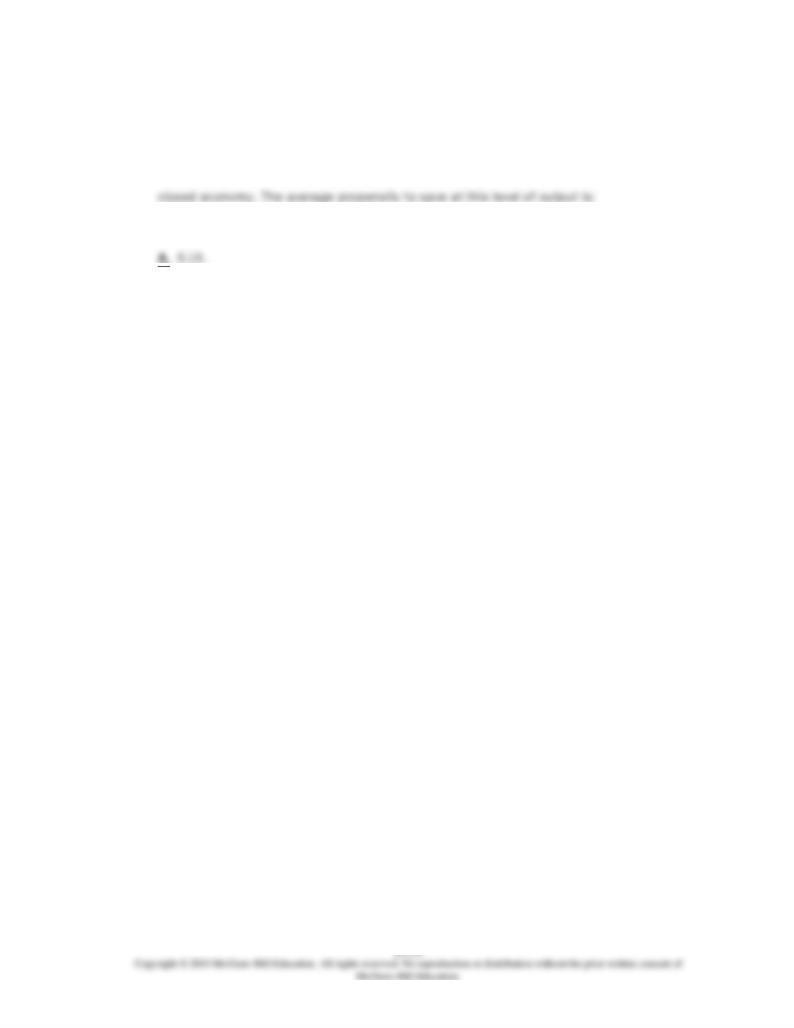
expenditures schedule for a private closed economy and how that schedule can be used to demonstrate the economy's
equilibrium level of output (where the total quantity of goods produced equals the total quantity of goods purchased).
Topic: Equilibrium GDP: C + Ig = GDP
49.
Actual investment is $62 billion at an equilibrium output level of $620 billion in a private
B.
10.0.
C.
0.62.
D.
0.84.
AACSB: Analytic
Accessibility: Keyboard Navigation
Blooms: Apply
Difficulty: 2 Medium
Learning Objective: 29-03 Illustrate how economists combine consumption and investment to depict an aggregate
expenditures schedule for a private closed economy and how that schedule can be used to demonstrate the economy's
equilibrium level of output (where the total quantity of goods produced equals the total quantity of goods purchased).
Topic: Equilibrium GDP: C + Ig = GDP
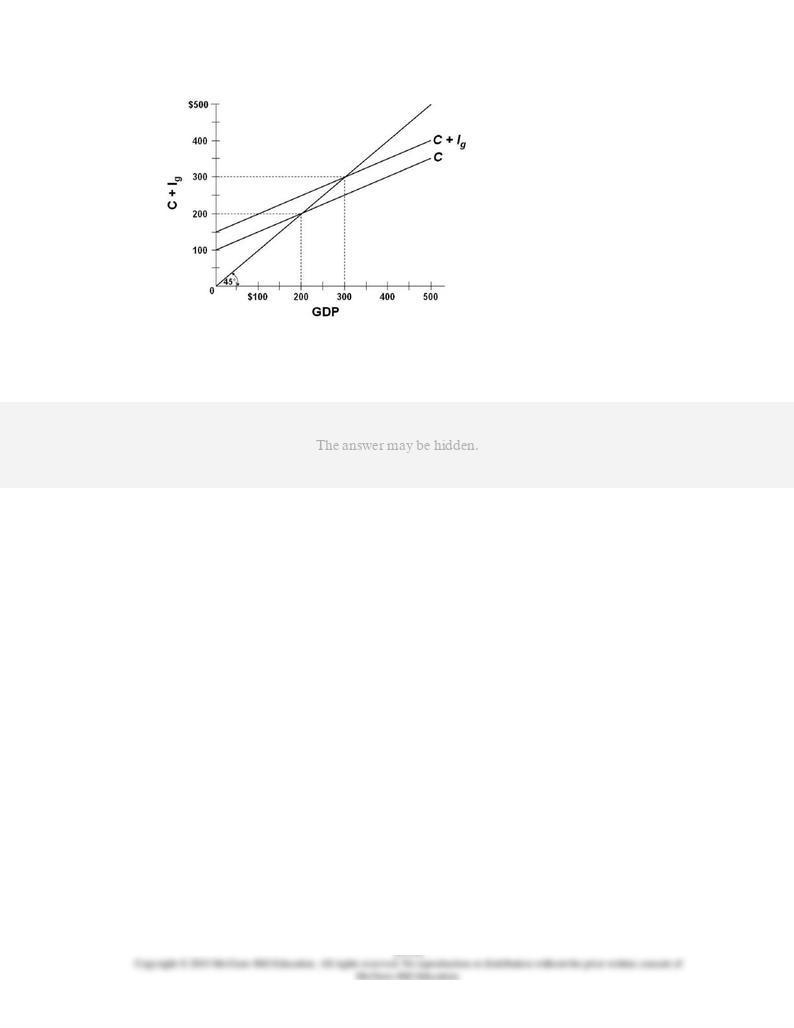
50.
Refer to the diagram for a private closed economy. The MPC and MPS are:
AACSB: Analytic
Blooms: Apply
Difficulty: 2 Medium
Learning Objective: 29-03 Illustrate how economists combine consumption and investment to depict an aggregate
expenditures schedule for a private closed economy and how that schedule can be used to demonstrate the economy's
equilibrium level of output (where the total quantity of goods produced equals the total quantity of goods purchased).
Topic: Equilibrium GDP: C + Ig = GDP
Type: Graph
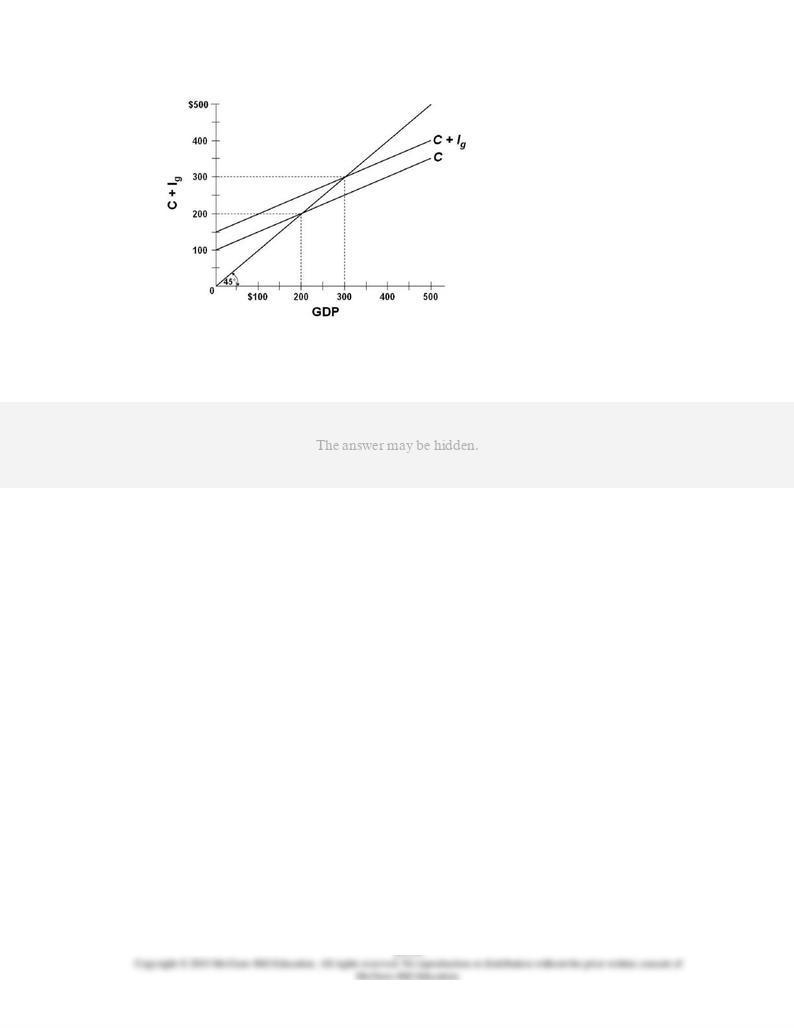
51.
Refer to the diagram for a private closed economy. Gross investment:
AACSB: Reflective Thinking
Blooms: Apply
Difficulty: 2 Medium
Learning Objective: 29-03 Illustrate how economists combine consumption and investment to depict an aggregate
expenditures schedule for a private closed economy and how that schedule can be used to demonstrate the economy's
equilibrium level of output (where the total quantity of goods produced equals the total quantity of goods purchased).
Topic: Equilibrium GDP: C + Ig = GDP
Type: Graph
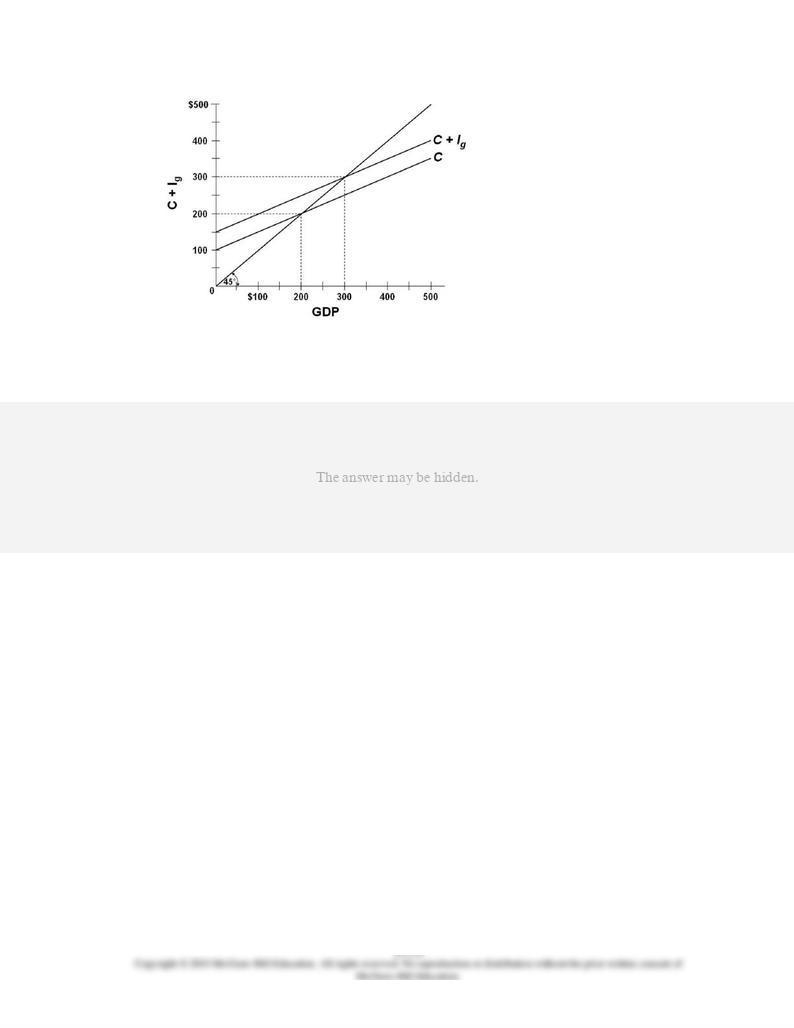
52.
Refer to the diagram for a private closed economy. At the $200 level of GDP:
AACSB: Analytic
Blooms: Apply
Difficulty: 2 Medium
Learning Objective: 29-03 Illustrate how economists combine consumption and investment to depict an aggregate
expenditures schedule for a private closed economy and how that schedule can be used to demonstrate the economy's
equilibrium level of output (where the total quantity of goods produced equals the total quantity of goods purchased).
Topic: Equilibrium GDP: C + Ig = GDP
Type: Graph
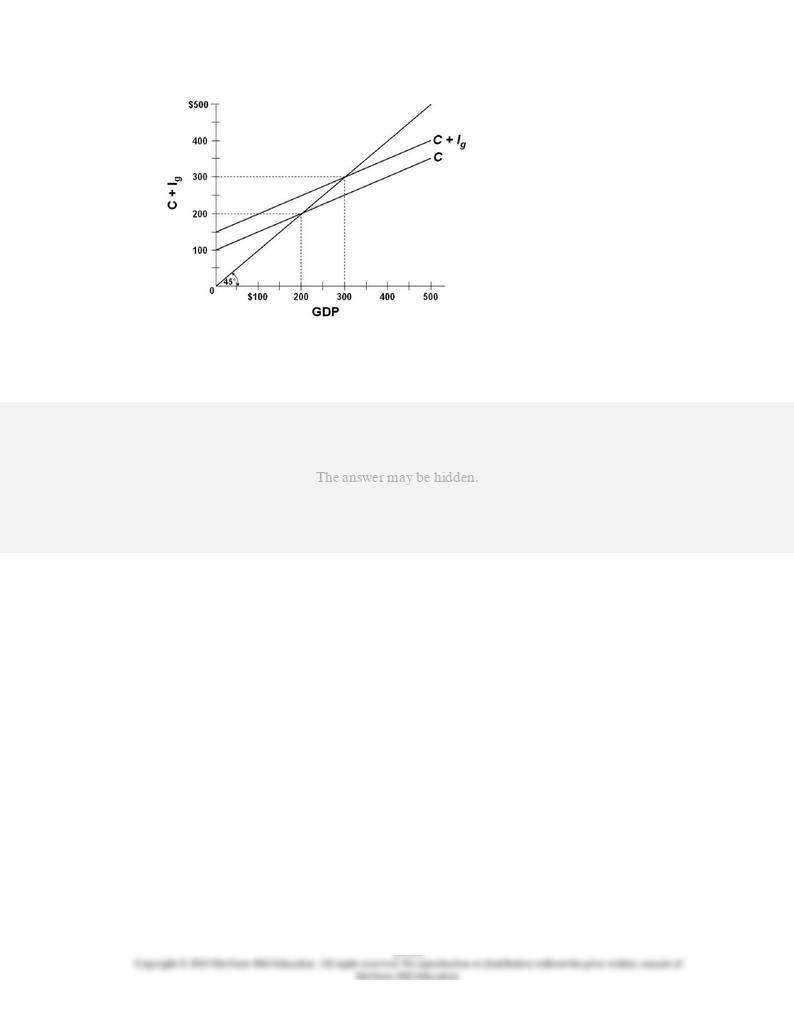
53.
Refer to the diagram for a private closed economy. At the $400 level of GDP:
AACSB: Analytic
Blooms: Apply
Difficulty: 2 Medium
Learning Objective: 29-03 Illustrate how economists combine consumption and investment to depict an aggregate
expenditures schedule for a private closed economy and how that schedule can be used to demonstrate the economy's
equilibrium level of output (where the total quantity of goods produced equals the total quantity of goods purchased).
Topic: Equilibrium GDP: C + Ig = GDP
Type: Graph

54.
Refer to the diagram for a private closed economy. At the $300 level of GDP:
AACSB: Analytic
Blooms: Apply
Difficulty: 2 Medium
Learning Objective: 29-03 Illustrate how economists combine consumption and investment to depict an aggregate
expenditures schedule for a private closed economy and how that schedule can be used to demonstrate the economy's
equilibrium level of output (where the total quantity of goods produced equals the total quantity of goods purchased).
Topic: Equilibrium GDP: C + Ig = GDP
Type: Graph
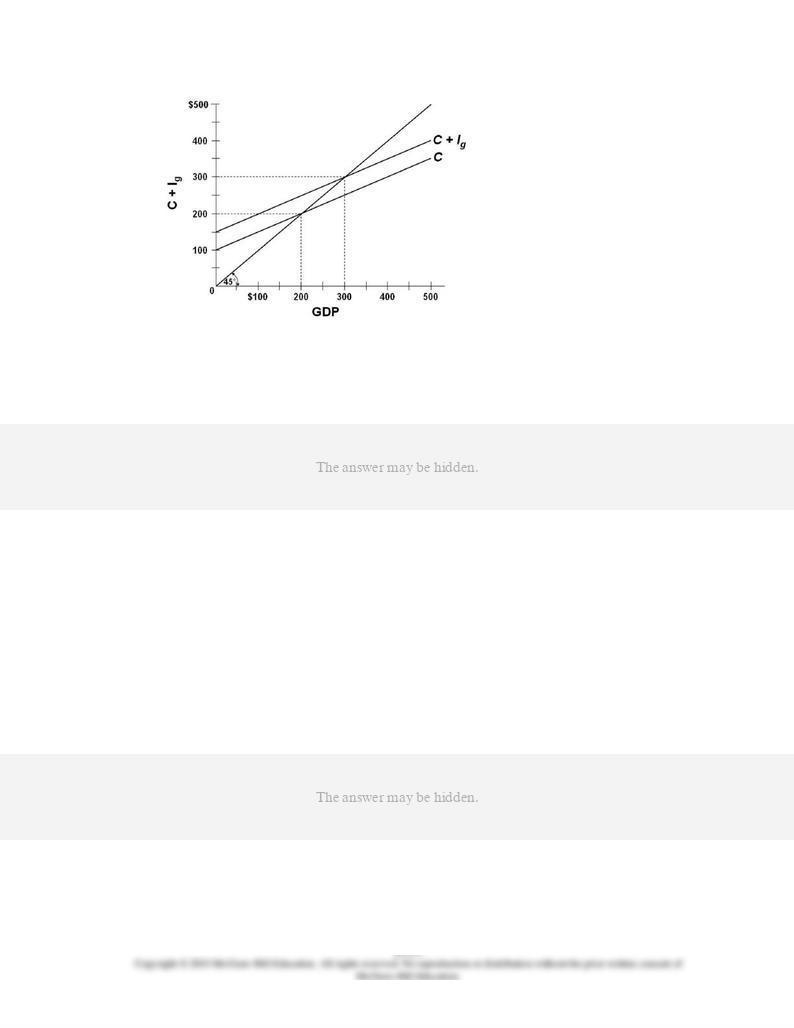
55.
Refer to the diagram for a private closed economy. At the equilibrium level of GDP, the
APC and APS:
AACSB: Analytic
Blooms: Apply
Difficulty: 2 Medium
Learning Objective: 29-03 Illustrate how economists combine consumption and investment to depict an aggregate
expenditures schedule for a private closed economy and how that schedule can be used to demonstrate the economy's
equilibrium level of output (where the total quantity of goods produced equals the total quantity of goods purchased).
Topic: Equilibrium GDP: C + Ig = GDP
Type: Graph
56.
If unintended increases in business inventories occur, we can expect:
AACSB: Reflective Thinking
Accessibility: Keyboard Navigation
Blooms: Analyze
Difficulty: 3 Hard
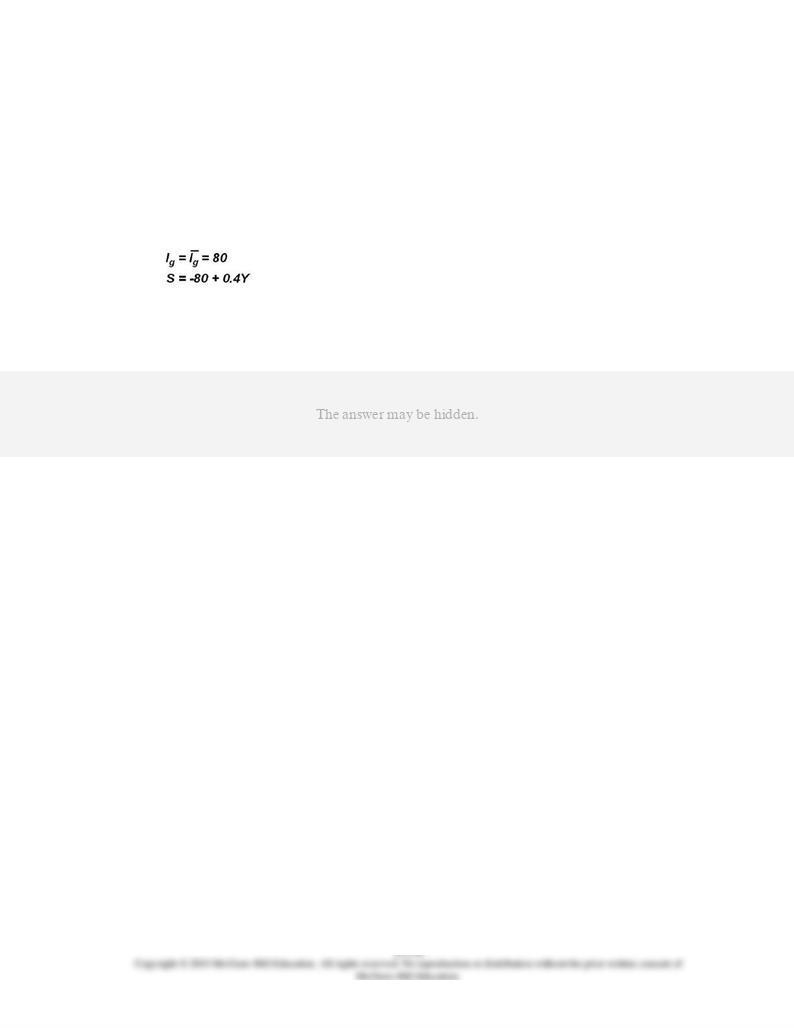
Learning Objective: 29-04 Discuss the two other ways to characterize the equilibrium level of real GDP in a private closed
economy: saving = investment; and no unplanned changes in inventories.
Topic: Other features of equilibrium GDP
57.
(Advanced analysis) Answer the question on the basis of the following information for a
private closed economy, where
Ig
is gross investment,
S
is saving, and
Y
is gross domestic
product (GDP).
Refer to the information. The equilibrium GDP will be:
AACSB: Analytic
Blooms: Analyze
Difficulty: 3 Hard
Learning Objective: 29-04 Discuss the two other ways to characterize the equilibrium level of real GDP in a private closed
economy: saving = investment; and no unplanned changes in inventories.
Topic: Other features of equilibrium GDP
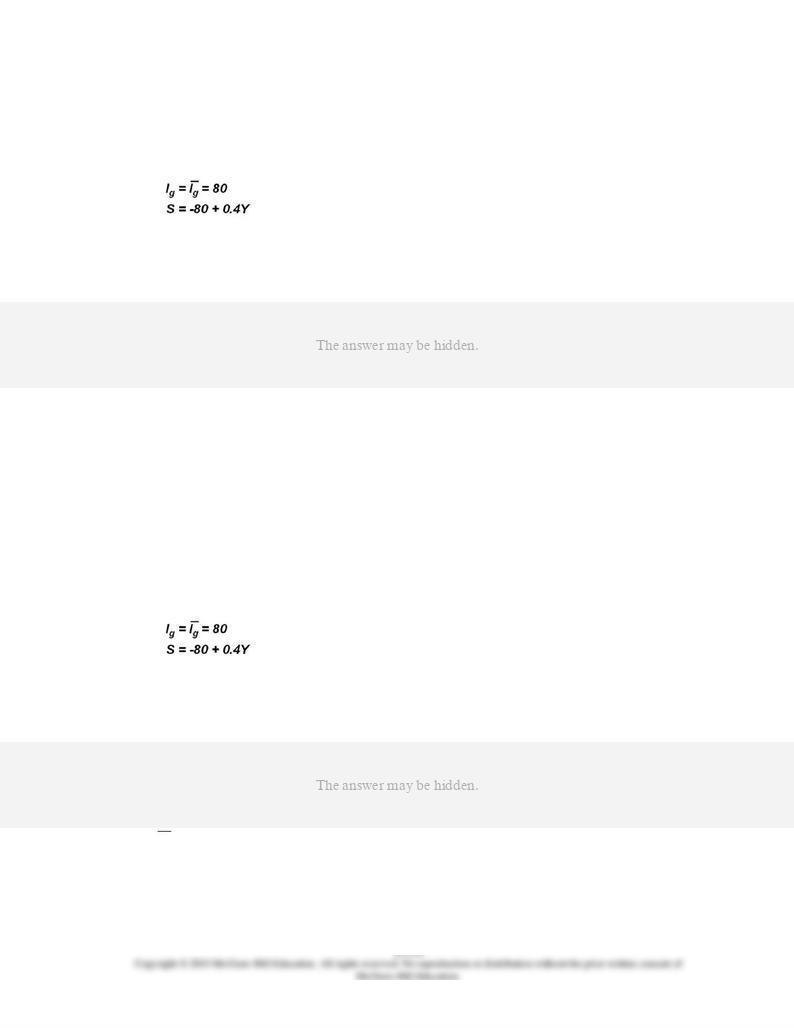
58.
(Advanced analysis) Answer the question on the basis of the following information for a
private closed economy, where
Ig
is gross investment,
S
is saving, and
Y
is gross domestic
product (GDP).
Refer to the information. In equilibrium, consumption will be:
AACSB: Analytic
Blooms: Analyze
Difficulty: 3 Hard
Learning Objective: 29-04 Discuss the two other ways to characterize the equilibrium level of real GDP in a private closed
economy: saving = investment; and no unplanned changes in inventories.
Topic: Other features of equilibrium GDP
59.
(Advanced analysis) Answer the question on the basis of the following information for a
private closed economy, where
Ig
is gross investment,
S
is saving, and
Y
is gross domestic
product (GDP).
Refer to the information. In equilibrium saving will be:
AACSB: Analytic
Blooms: Analyze
Difficulty: 3 Hard
Learning Objective: 29-04 Discuss the two other ways to characterize the equilibrium level of real GDP in a private closed

economy: saving = investment; and no unplanned changes in inventories.
Topic: Other features of equilibrium GDP
60.
(Advanced analysis) Answer the question on the basis of the following information for a
private closed economy.
where
S
is saving,
Ig
is gross investment,
i
is the real interest rate, and
Y
is GDP.
Refer to the information. If the real interest rate is 5 (percent), investment will be:
AACSB: Analytic
Blooms: Analyze
Difficulty: 3 Hard
Learning Objective: 29-04 Discuss the two other ways to characterize the equilibrium level of real GDP in a private closed
economy: saving = investment; and no unplanned changes in inventories.
Topic: Other features of equilibrium GDP
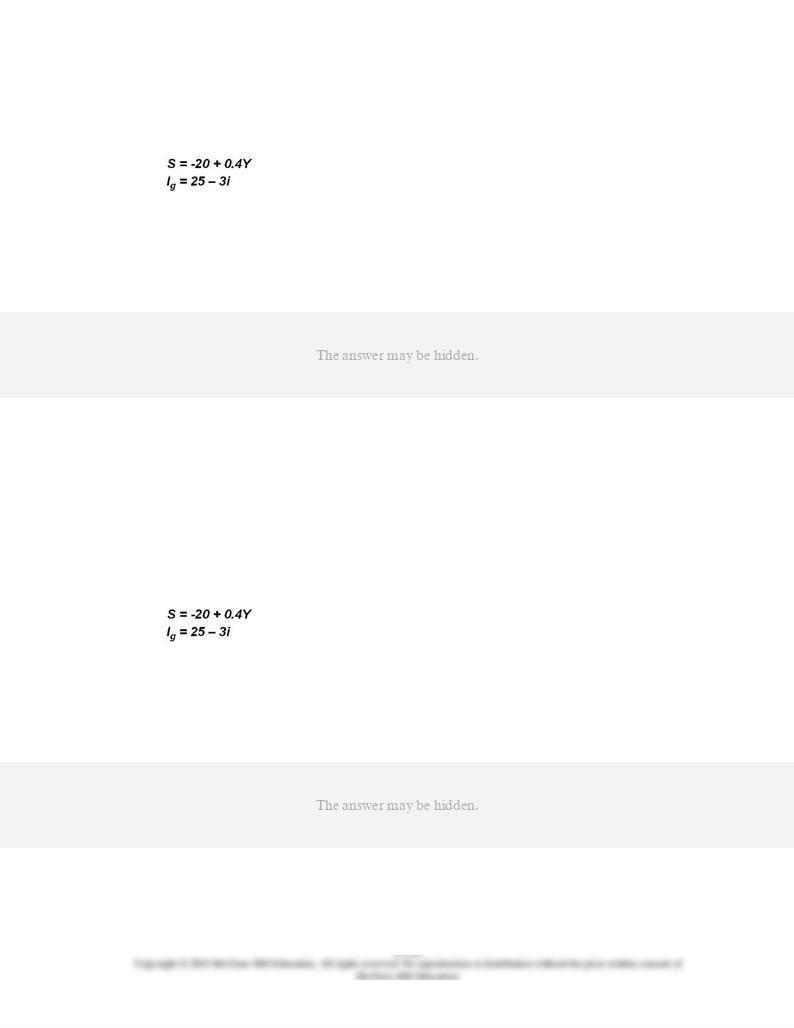
61.
(Advanced analysis) Answer the question on the basis of the following information for a
private closed economy.
where
S
is saving,
Ig
is gross investment,
i
is the real interest rate, and
Y
is GDP.
Refer to the information. In equilibrium, the level of saving will be:
AACSB: Analytic
Blooms: Analyze
Difficulty: 3 Hard
Learning Objective: 29-04 Discuss the two other ways to characterize the equilibrium level of real GDP in a private closed
economy: saving = investment; and no unplanned changes in inventories.
Topic: Other features of equilibrium GDP
62.
(Advanced analysis) Answer the question on the basis of the following information for a
private closed economy.
where
S
is saving,
Ig
is gross investment,
i
is the real interest rate, and
Y
is GDP.
Refer to the information. In equilibrium, the level of consumption will be:
AACSB: Analytic
Blooms: Analyze
Difficulty: 3 Hard
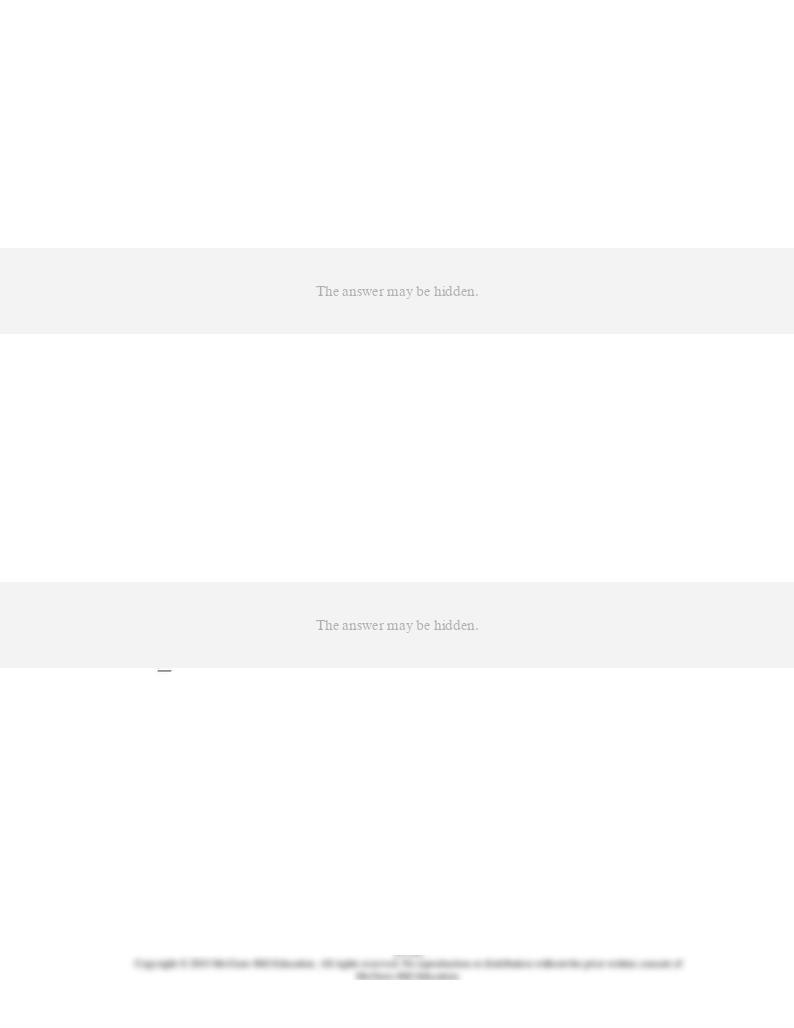
Learning Objective: 29-04 Discuss the two other ways to characterize the equilibrium level of real GDP in a private closed
economy: saving = investment; and no unplanned changes in inventories.
Topic: Other features of equilibrium GDP
63.
In a private closed economy _____ investment is equal to saving at all levels of GDP and
equilibrium occurs only at that level of GDP where _____ investment is equal to saving.
AACSB: Analytic
Accessibility: Keyboard Navigation
Blooms: Understand
Difficulty: 2 Medium
Learning Objective: 29-04 Discuss the two other ways to characterize the equilibrium level of real GDP in a private closed
economy: saving = investment; and no unplanned changes in inventories.
Topic: Other features of equilibrium GDP
64.
(Advanced analysis) If
S
= -60 + .25
Y
and
Ig
= 60, where
S
is saving,
Ig
is gross investment,
and
Y
is gross domestic product (GDP), then the equilibrium level of GDP is:
AACSB: Analytic
Accessibility: Keyboard Navigation
Blooms: Analyze
Difficulty: 3 Hard
Learning Objective: 29-04 Discuss the two other ways to characterize the equilibrium level of real GDP in a private closed
economy: saving = investment; and no unplanned changes in inventories.
Topic: Other features of equilibrium GDP

65.
In the aggregate expenditures model, technological progress will shift the investment
schedule:
AACSB: Reflective Thinking
Accessibility: Keyboard Navigation
Blooms: Understand
Difficulty: 2 Medium
Learning Objective: 29-05 Analyze how changes in equilibrium real GDP can occur in the aggregate expenditures model
and describe how those changes relate to the multiplier.
Topic: Changes in equilibrium GDP and the multiplier
66.
At equilibrium real GDP in a private closed economy:
AACSB: Analytic
Accessibility: Keyboard Navigation
Blooms: Understand
Difficulty: 2 Medium
Learning Objective: 29-03 Illustrate how economists combine consumption and investment to depict an aggregate
expenditures schedule for a private closed economy and how that schedule can be used to demonstrate the economy's
equilibrium level of output (where the total quantity of goods produced equals the total quantity of goods purchased).
Topic: Equilibrium GDP: C + Ig = GDP
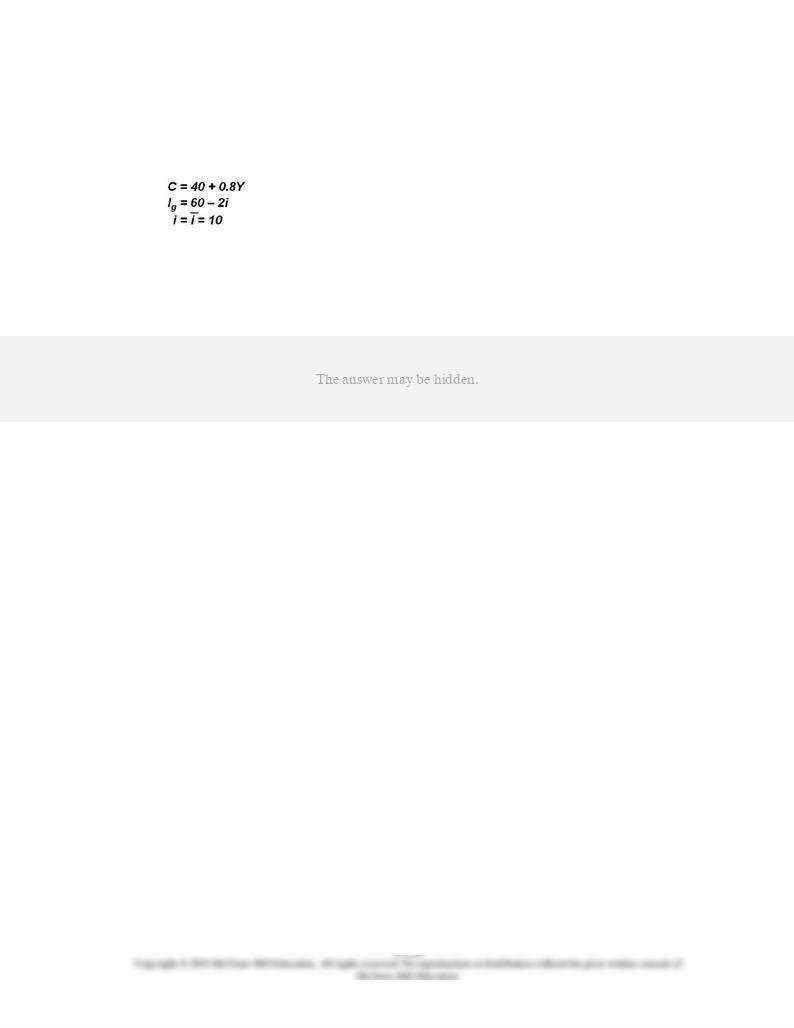
67.
(Advanced analysis) Answer the question on the basis of the following information for a
private closed economy where
C
is consumption,
Y
is the gross domestic product,
Ig
is
gross investment, and
i
is the interest rate:
Refer to the information. Given that the interest rate is 10 (percent), the amount that
businesses will want to invest will be:
AACSB: Analytic
Blooms: Apply
Difficulty: 2 Medium
Learning Objective: 29-03 Illustrate how economists combine consumption and investment to depict an aggregate
expenditures schedule for a private closed economy and how that schedule can be used to demonstrate the economy's
equilibrium level of output (where the total quantity of goods produced equals the total quantity of goods purchased).
Topic: Equilibrium GDP: C + Ig = GDP
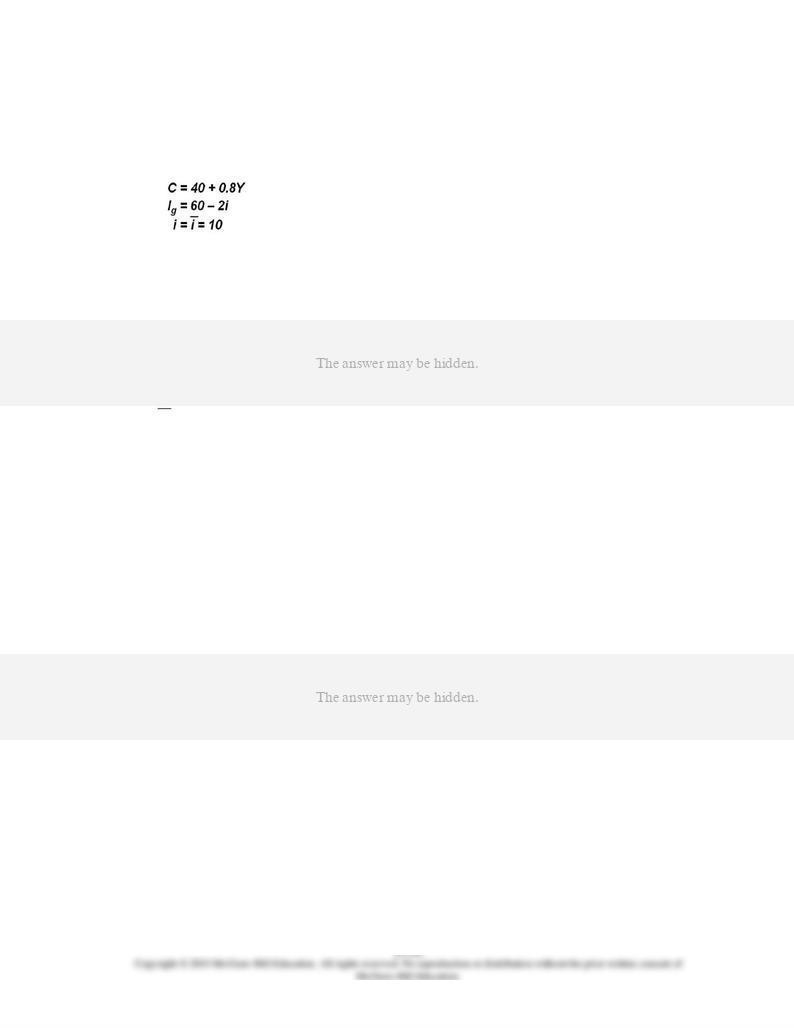
68.
(Advanced analysis) Answer the question on the basis of the following information for a
private closed economy where
C
is consumption,
Y
is the gross domestic product,
Ig
is
gross investment, and
i
is the interest rate:
Refer to the information. The equilibrium level of GDP in this economy is:
AACSB: Analytic
Blooms: Analyze
Difficulty: 3 Hard
Learning Objective: 29-03 Illustrate how economists combine consumption and investment to depict an aggregate
expenditures schedule for a private closed economy and how that schedule can be used to demonstrate the economy's
equilibrium level of output (where the total quantity of goods produced equals the total quantity of goods purchased).
Topic: Equilibrium GDP: C + Ig = GDP
69.
What will be the effect of an excess of planned investment over saving in a private closed
economy with unemployed resources?
AACSB: Reflective Thinking
Accessibility: Keyboard Navigation
Blooms: Analyze
Difficulty: 3 Hard
Learning Objective: 29-04 Discuss the two other ways to characterize the equilibrium level of real GDP in a private closed
economy: saving = investment; and no unplanned changes in inventories.
Topic: Other features of equilibrium GDP

70.
Which of the following statements is
correct
for a private closed economy?
AACSB: Reflective Thinking
Accessibility: Keyboard Navigation
Blooms: Understand
Difficulty: 2 Medium
Learning Objective: 29-04 Discuss the two other ways to characterize the equilibrium level of real GDP in a private closed
economy: saving = investment; and no unplanned changes in inventories.
Topic: Other features of equilibrium GDP
71.
At the $180 billion equilibrium level of income, saving is $38 billion in a private closed
economy. Planned investment must be:
AACSB: Analytic
Accessibility: Keyboard Navigation
Blooms: Understand
Difficulty: 2 Medium
Learning Objective: 29-04 Discuss the two other ways to characterize the equilibrium level of real GDP in a private closed
economy: saving = investment; and no unplanned changes in inventories.
Topic: Other features of equilibrium GDP

72.
Planned investment
plus
unintended increases in inventories equals:
AACSB: Analytic
Accessibility: Keyboard Navigation
Blooms: Remember
Difficulty: 1 Easy
Learning Objective: 29-04 Discuss the two other ways to characterize the equilibrium level of real GDP in a private closed
economy: saving = investment; and no unplanned changes in inventories.
Topic: Other features of equilibrium GDP
73.
Saving is always equal to:
AACSB: Analytic
Accessibility: Keyboard Navigation
Blooms: Remember
Difficulty: 1 Easy
Learning Objective: 29-04 Discuss the two other ways to characterize the equilibrium level of real GDP in a private closed
economy: saving = investment; and no unplanned changes in inventories.
Topic: Other features of equilibrium GDP
74.
Actual investment equals saving:
AACSB: Analytic
Accessibility: Keyboard Navigation

Blooms: Remember
Difficulty: 1 Easy
Learning Objective: 29-04 Discuss the two other ways to characterize the equilibrium level of real GDP in a private closed
economy: saving = investment; and no unplanned changes in inventories.
Topic: Other features of equilibrium GDP
75.
Unintended changes in inventories:
AACSB: Analytic
Accessibility: Keyboard Navigation
Blooms: Understand
Difficulty: 2 Medium
Learning Objective: 29-04 Discuss the two other ways to characterize the equilibrium level of real GDP in a private closed
economy: saving = investment; and no unplanned changes in inventories.
Topic: Other features of equilibrium GDP
76.
Investment and saving are, respectively:
AACSB: Analytic
Accessibility: Keyboard Navigation
Blooms: Remember
Difficulty: 1 Easy
Learning Objective: 29-04 Discuss the two other ways to characterize the equilibrium level of real GDP in a private closed
economy: saving = investment; and no unplanned changes in inventories.
Topic: Other features of equilibrium GDP

77.
(Advanced analysis) In a private closed economy, (a) the marginal propensity to save is
0.25, (b) consumption equals income at $120 billion, and (c) the level of investment is $40
billion. What is the equilibrium level of income?
AACSB: Analytic
Accessibility: Keyboard Navigation
Blooms: Analyze
Difficulty: 3 Hard
Learning Objective: 29-03 Illustrate how economists combine consumption and investment to depict an aggregate
expenditures schedule for a private closed economy and how that schedule can be used to demonstrate the economy's
equilibrium level of output (where the total quantity of goods produced equals the total quantity of goods purchased).
Topic: Equilibrium GDP: C + Ig = GDP
78.
If the marginal propensity to consume is .9 in a private closed economy, a $20 billion
decline in investment spending will decrease:
AACSB: Analytic
Accessibility: Keyboard Navigation
Blooms: Apply
Difficulty: 2 Medium
Learning Objective: 29-05 Analyze how changes in equilibrium real GDP can occur in the aggregate expenditures model
and describe how those changes relate to the multiplier.
Topic: Changes in equilibrium GDP and the multiplier
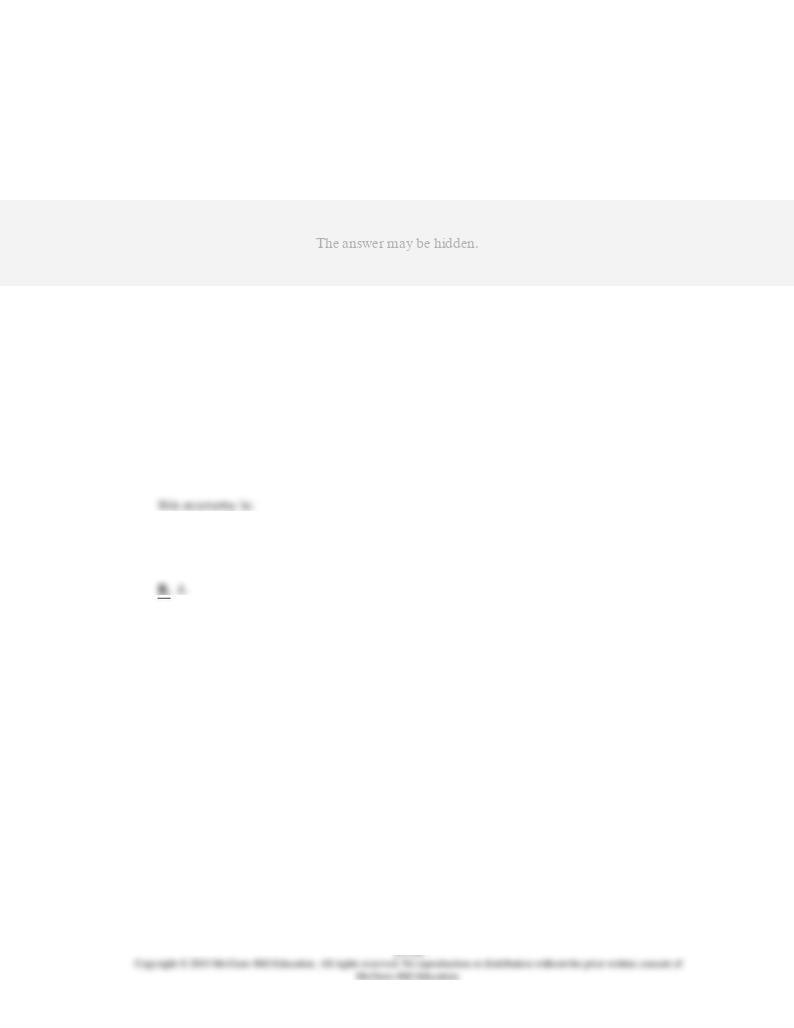
79.
Suppose that the level of GDP increased by $100 billion in a private closed economy
where the marginal propensity to consume is .5. Aggregate expenditures must have
increased by:
AACSB: Analytic
Accessibility: Keyboard Navigation
Blooms: Analyze
Difficulty: 3 Hard
Learning Objective: 29-05 Analyze how changes in equilibrium real GDP can occur in the aggregate expenditures model
and describe how those changes relate to the multiplier.
Topic: Changes in equilibrium GDP and the multiplier
80.
(Advanced analysis) Assume the consumption schedule for a private closed economy is
C
= 40 + .75
Y
, where
C
is consumption and
Y
is gross domestic product. The multiplier for
A.
3.
C.
5.
D.
10.
AACSB: Analytic
Accessibility: Keyboard Navigation
Blooms: Apply
Difficulty: 2 Medium
Learning Objective: 29-05 Analyze how changes in equilibrium real GDP can occur in the aggregate expenditures model
and describe how those changes relate to the multiplier.
Topic: Changes in equilibrium GDP and the multiplier
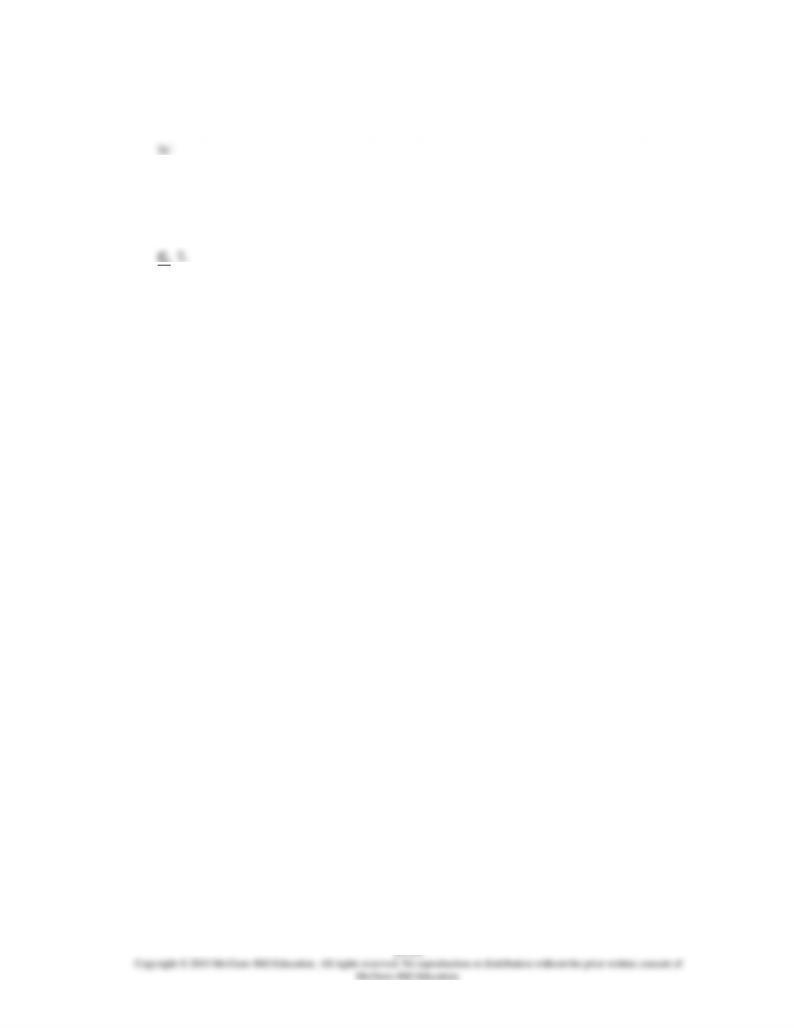
81.
(Advanced analysis) Assume the saving schedule for a private closed economy is
S
= -20
+ .2
Y
, where
S
is saving and
Y
is gross domestic product. The multiplier for this economy
A.
3.
B.
4.
D.
10.
AACSB: Analytic
Accessibility: Keyboard Navigation
Blooms: Apply
Difficulty: 2 Medium
Learning Objective: 29-05 Analyze how changes in equilibrium real GDP can occur in the aggregate expenditures model
and describe how those changes relate to the multiplier.
Topic: Changes in equilibrium GDP and the multiplier

82.
Answer the question below on the basis of the following information for a private closed
economy:
Refer to the information. If the real interest rate is 20 percent, the equilibrium GDP will
be:
AACSB: Analytic
Blooms: Analyze
Difficulty: 3 Hard
Learning Objective: 29-03 Illustrate how economists combine consumption and investment to depict an aggregate
expenditures schedule for a private closed economy and how that schedule can be used to demonstrate the economy's
equilibrium level of output (where the total quantity of goods produced equals the total quantity of goods purchased).
Topic: Equilibrium GDP: C + Ig = GDP
Type: Table

83.
Answer the question below on the basis of the following information for a private closed
economy:
Refer to the information. If the real interest rate is 10 percent, the equilibrium GDP will
be:
AACSB: Analytic
Blooms: Analyze
Difficulty: 3 Hard
Learning Objective: 29-03 Illustrate how economists combine consumption and investment to depict an aggregate
expenditures schedule for a private closed economy and how that schedule can be used to demonstrate the economy's
equilibrium level of output (where the total quantity of goods produced equals the total quantity of goods purchased).
Topic: Equilibrium GDP: C + Ig = GDP
Type: Table
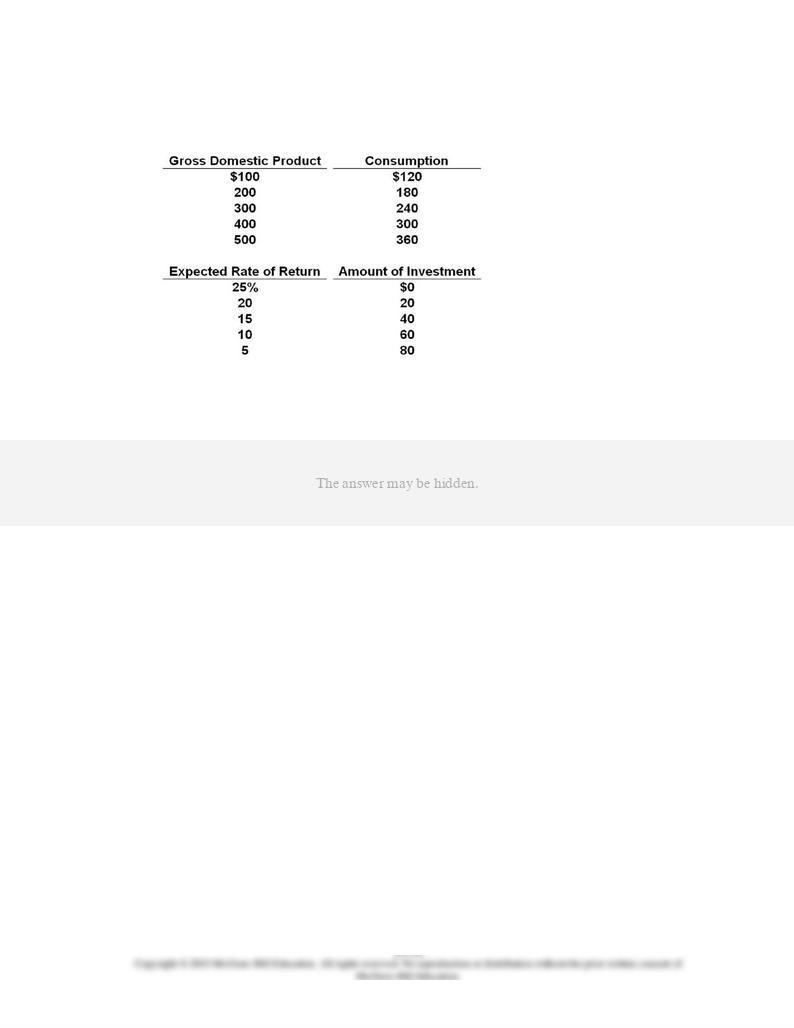
84.
Answer the question below on the basis of the following information for a private closed
economy:
Refer to the information. The data suggest that:
AACSB: Analytic
Blooms: Analyze
Difficulty: 3 Hard
Learning Objective: 29-03 Illustrate how economists combine consumption and investment to depict an aggregate
expenditures schedule for a private closed economy and how that schedule can be used to demonstrate the economy's
equilibrium level of output (where the total quantity of goods produced equals the total quantity of goods purchased).
Topic: Equilibrium GDP: C + Ig = GDP
Type: Table

85.
Answer the question below on the basis of the following information for a private closed
economy:
A.
2.
C.
3.
D.
4.
AACSB: Analytic
Blooms: Apply
Difficulty: 2 Medium
Learning Objective: 29-05 Analyze how changes in equilibrium real GDP can occur in the aggregate expenditures model
and describe how those changes relate to the multiplier.
Topic: Changes in equilibrium GDP and the multiplier
Type: Table
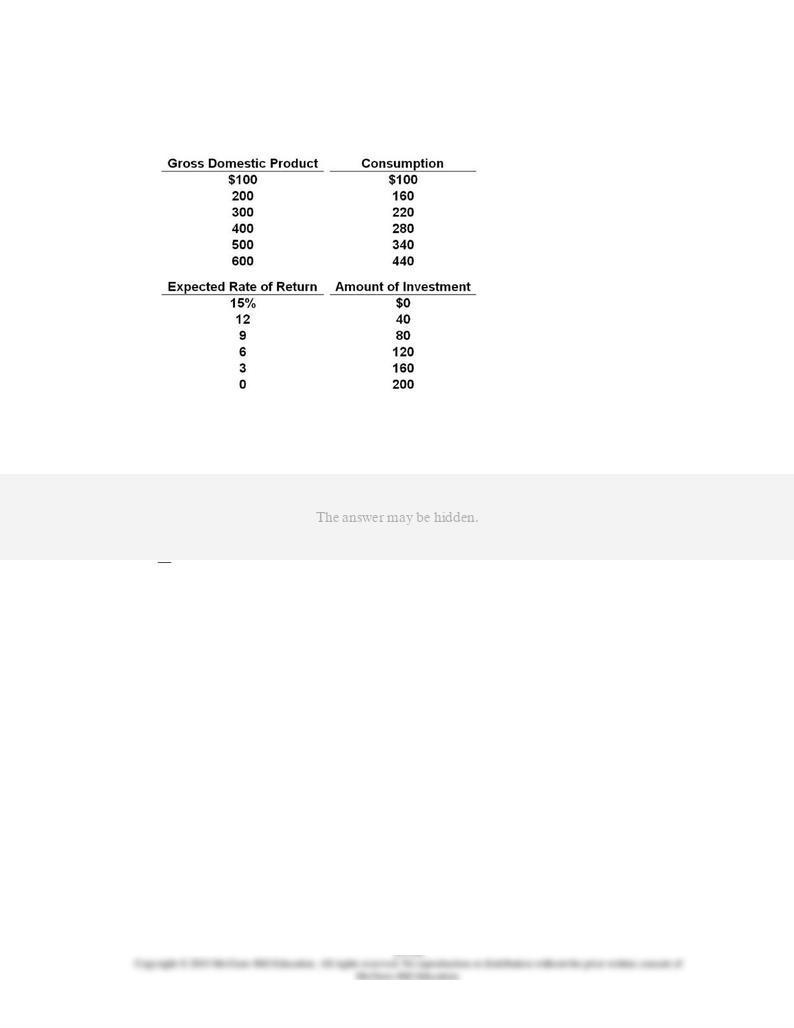
86.
Answer the question on the basis of the following information for a private closed
economy:
Refer to the information. If the real interest rate is 9 percent, the equilibrium GDP will be:
AACSB: Analytic
Blooms: Analyze
Difficulty: 3 Hard
Learning Objective: 29-03 Illustrate how economists combine consumption and investment to depict an aggregate
expenditures schedule for a private closed economy and how that schedule can be used to demonstrate the economy's
equilibrium level of output (where the total quantity of goods produced equals the total quantity of goods purchased).
Topic: Equilibrium GDP: C + Ig = GDP
Type: Table
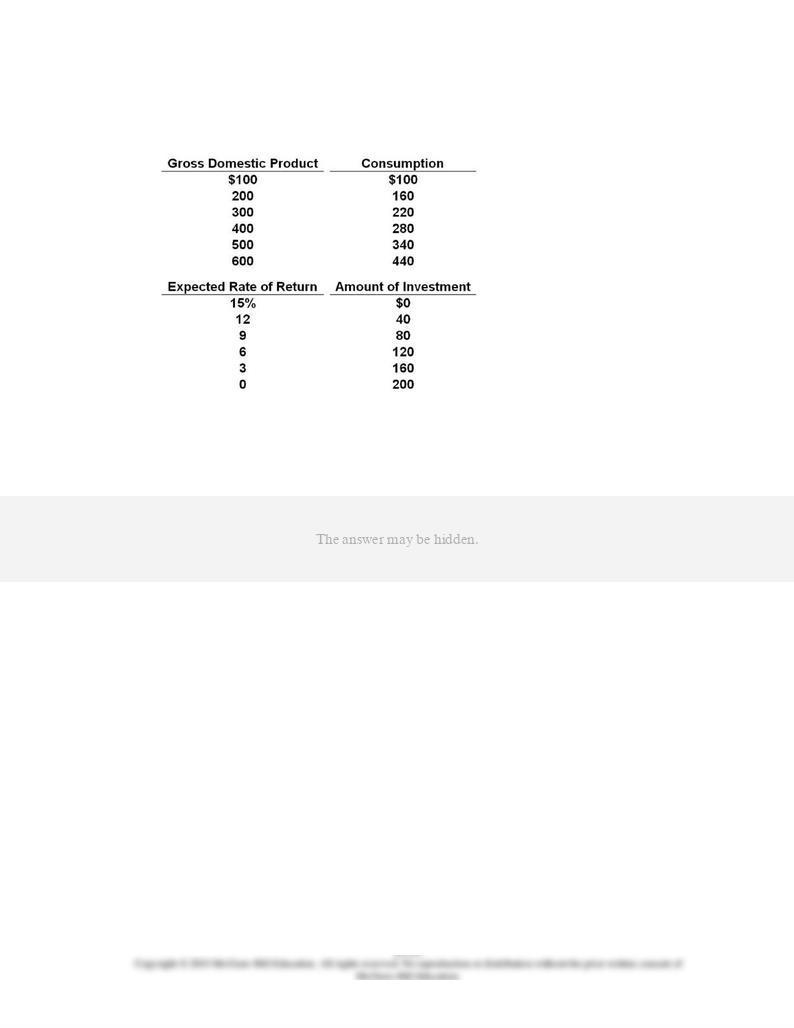
87.
Answer the question on the basis of the following information for a private closed
economy:
Refer to the information. In this economy, a 3 percentage point decrease in the interest
rate will:
AACSB: Analytic
Blooms: Analyze
Difficulty: 3 Hard
Learning Objective: 29-05 Analyze how changes in equilibrium real GDP can occur in the aggregate expenditures model
and describe how those changes relate to the multiplier.
Topic: Changes in equilibrium GDP and the multiplier
Type: Table

88.
Answer the question on the basis of the following information for a private closed
economy:
A.
4.
B.
5.
D.
3.5.
AACSB: Analytic
Blooms: Apply
Difficulty: 2 Medium
Learning Objective: 29-05 Analyze how changes in equilibrium real GDP can occur in the aggregate expenditures model
and describe how those changes relate to the multiplier.
Topic: Changes in equilibrium GDP and the multiplier
Type: Table
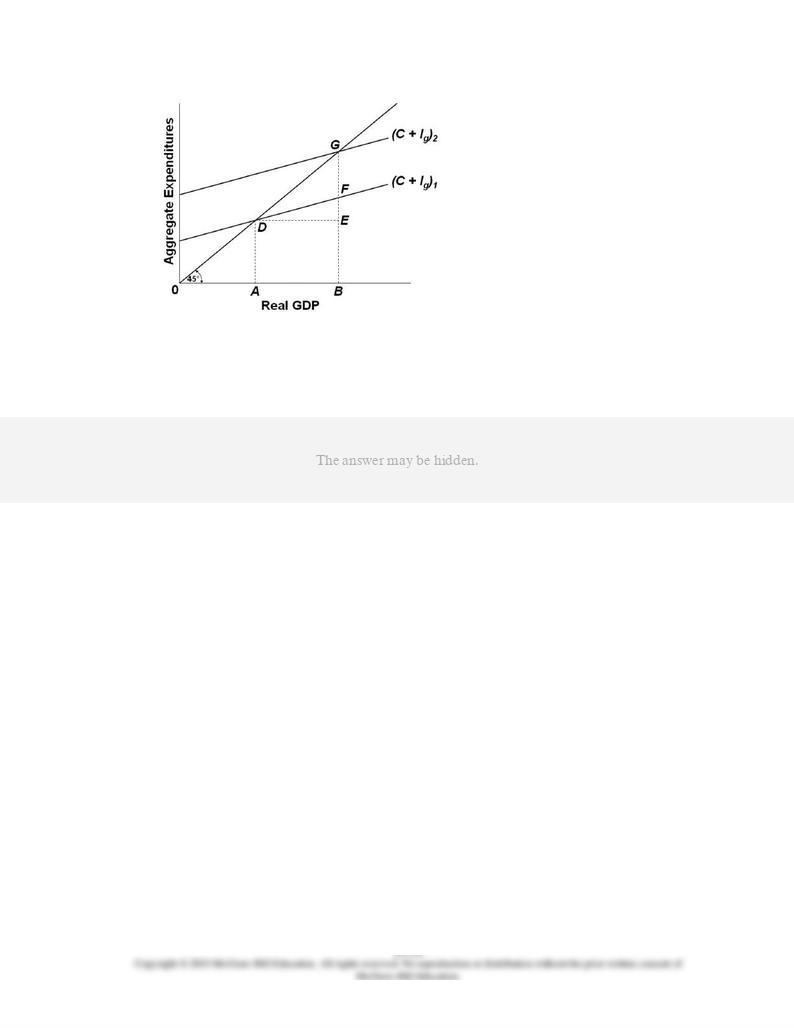
89.
Refer to the diagram for a private closed economy. The marginal propensity to consume
is:
AACSB: Reflective Thinking
Blooms: Apply
Difficulty: 2 Medium
Learning Objective: 29-03 Illustrate how economists combine consumption and investment to depict an aggregate
expenditures schedule for a private closed economy and how that schedule can be used to demonstrate the economy's
equilibrium level of output (where the total quantity of goods produced equals the total quantity of goods purchased).
Topic: Equilibrium GDP: C + Ig = GDP
Type: Graph

90.
Refer to the diagram for a private closed economy. The upward shift of the aggregate
expenditures schedule from (
C
+
Ig
)1 to (
C
+
Ig
)2 reflects:
AACSB: Reflective Thinking
Blooms: Apply
Difficulty: 2 Medium
Learning Objective: 29-05 Analyze how changes in equilibrium real GDP can occur in the aggregate expenditures model
and describe how those changes relate to the multiplier.
Topic: Changes in equilibrium GDP and the multiplier
Type: Graph

91.
Refer to the diagram for a private closed economy. The multiplier is:
AACSB: Analytic
Blooms: Apply
Difficulty: 2 Medium
Learning Objective: 29-05 Analyze how changes in equilibrium real GDP can occur in the aggregate expenditures model
and describe how those changes relate to the multiplier.
Topic: Changes in equilibrium GDP and the multiplier
Type: Graph
92.
Imports have the same effect on the current size of GDP as:
AACSB: Reflective Thinking
Accessibility: Keyboard Navigation
Blooms: Understand
Difficulty: 2 Medium
Learning Objective: 29-06 Explain how economists integrate the international sector (exports and imports) into the
aggregate expenditures model.

Topic: Adding international trade
93.
Exports have the same effect on the current size of GDP as:
AACSB: Reflective Thinking
Accessibility: Keyboard Navigation
Blooms: Understand
Difficulty: 2 Medium
Learning Objective: 29-06 Explain how economists integrate the international sector (exports and imports) into the
aggregate expenditures model.
Topic: Adding international trade
94.
At the equilibrium GDP for a private open economy:
AACSB: Reflective Thinking
Accessibility: Keyboard Navigation
Blooms: Understand
Difficulty: 2 Medium
Learning Objective: 29-06 Explain how economists integrate the international sector (exports and imports) into the
aggregate expenditures model.
Topic: Adding international trade
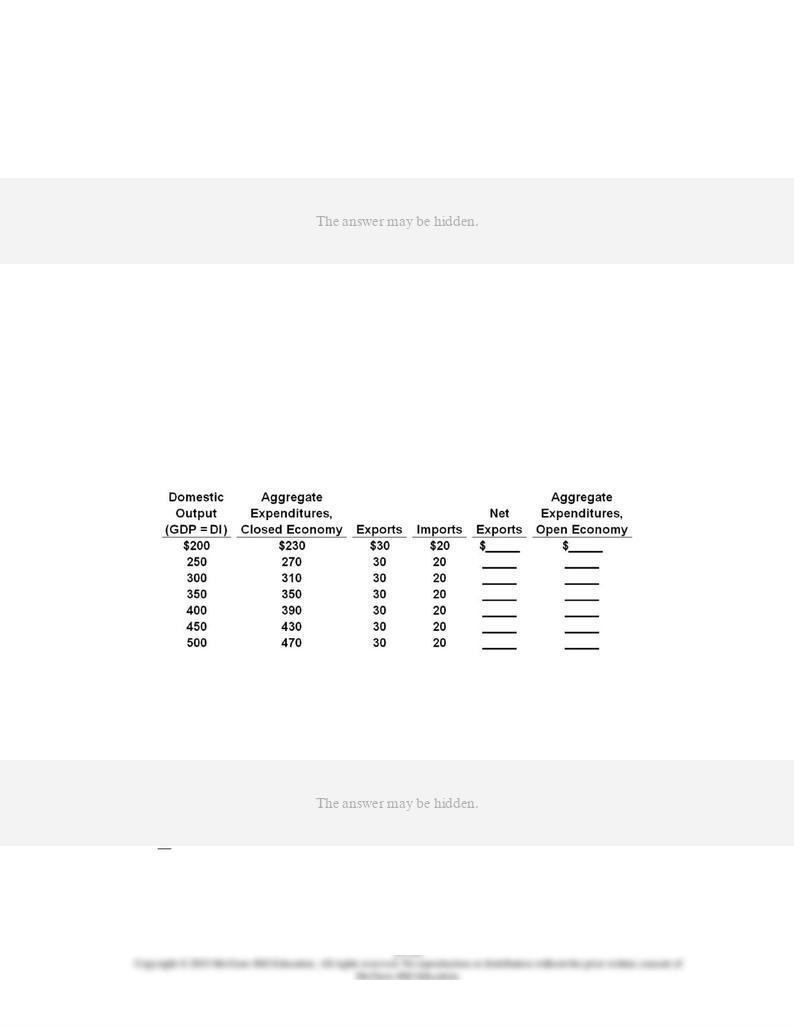
95.
Other things equal, if a change in the tastes of American consumers causes them to
purchase more foreign goods at each level of U.S. GDP, then:
AACSB: Reflective Thinking
Accessibility: Keyboard Navigation
Blooms: Analyze
Difficulty: 3 Hard
Learning Objective: 29-06 Explain how economists integrate the international sector (exports and imports) into the
aggregate expenditures model.
Topic: Adding international trade
96.
Complete the following table and answer the question on the basis of the resulting data.
All figures are in billions of dollars.
If the economy was closed to international trade, the equilibrium GDP and the multiplier
would be:
AACSB: Analytic
Blooms: Analyze
Difficulty: 3 Hard
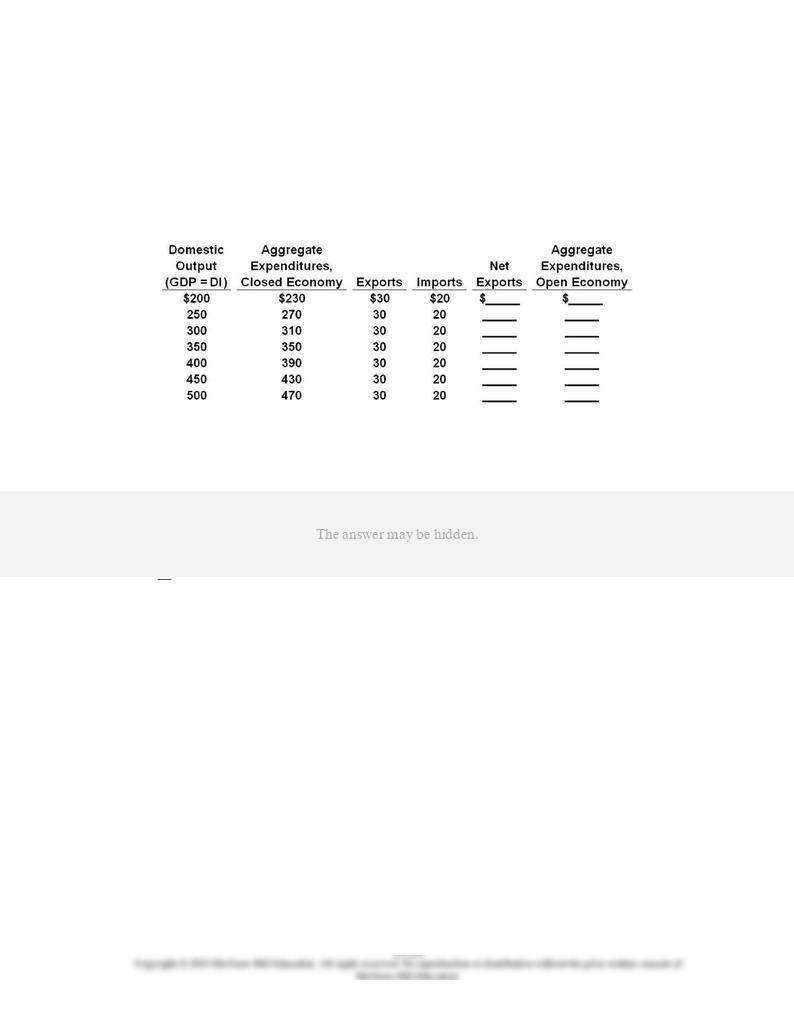
Learning Objective: 29-06 Explain how economists integrate the international sector (exports and imports) into the
aggregate expenditures model.
Topic: Adding international trade
Type: Table
97.
Complete the following table and answer the question on the basis of the resulting data.
All figures are in billions of dollars.
Refer to the table. For the open economy, the equilibrium GDP and the multiplier are:
AACSB: Analytic
Blooms: Analyze
Difficulty: 3 Hard
Learning Objective: 29-06 Explain how economists integrate the international sector (exports and imports) into the
aggregate expenditures model.
Topic: Adding international trade
Type: Table

98.
If net exports decline from zero to some negative amount, the aggregate expenditures
schedule would:
AACSB: Reflective Thinking
Accessibility: Keyboard Navigation
Blooms: Understand
Difficulty: 2 Medium
Learning Objective: 29-06 Explain how economists integrate the international sector (exports and imports) into the
aggregate expenditures model.
Topic: Adding international trade
99.
If net exports are positive:
AACSB: Analytic
Accessibility: Keyboard Navigation
Blooms: Understand
Difficulty: 2 Medium
Learning Objective: 29-06 Explain how economists integrate the international sector (exports and imports) into the
aggregate expenditures model.
Topic: Adding international trade
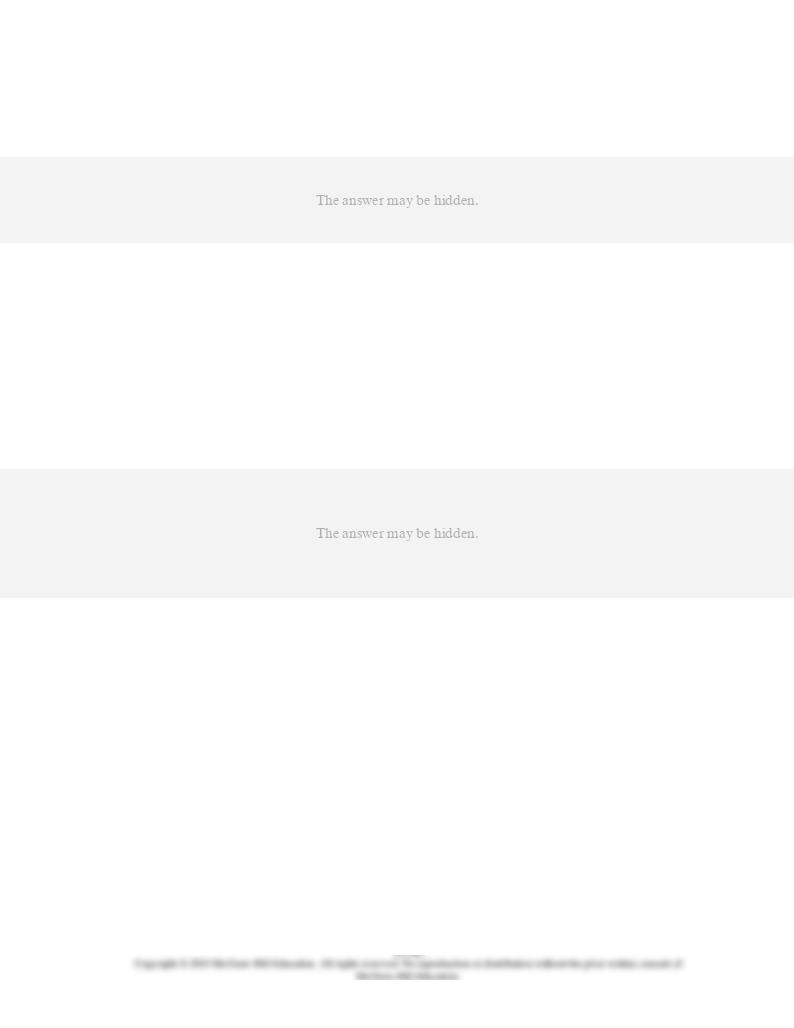
100.
An upward shift of the aggregate expenditures schedule might be caused by:
AACSB: Reflective Thinking
Accessibility: Keyboard Navigation
Blooms: Understand
Difficulty: 2 Medium
Learning Objective: 29-06 Explain how economists integrate the international sector (exports and imports) into the
aggregate expenditures model.
Topic: Adding international trade
101.
Other things equal, an increase in an economy's exports will:
AACSB: Reflective Thinking
Accessibility: Keyboard Navigation
Blooms: Understand
Difficulty: 2 Medium
Learning Objective: 29-06 Explain how economists integrate the international sector (exports and imports) into the
aggregate expenditures model.
Topic: Adding international trade
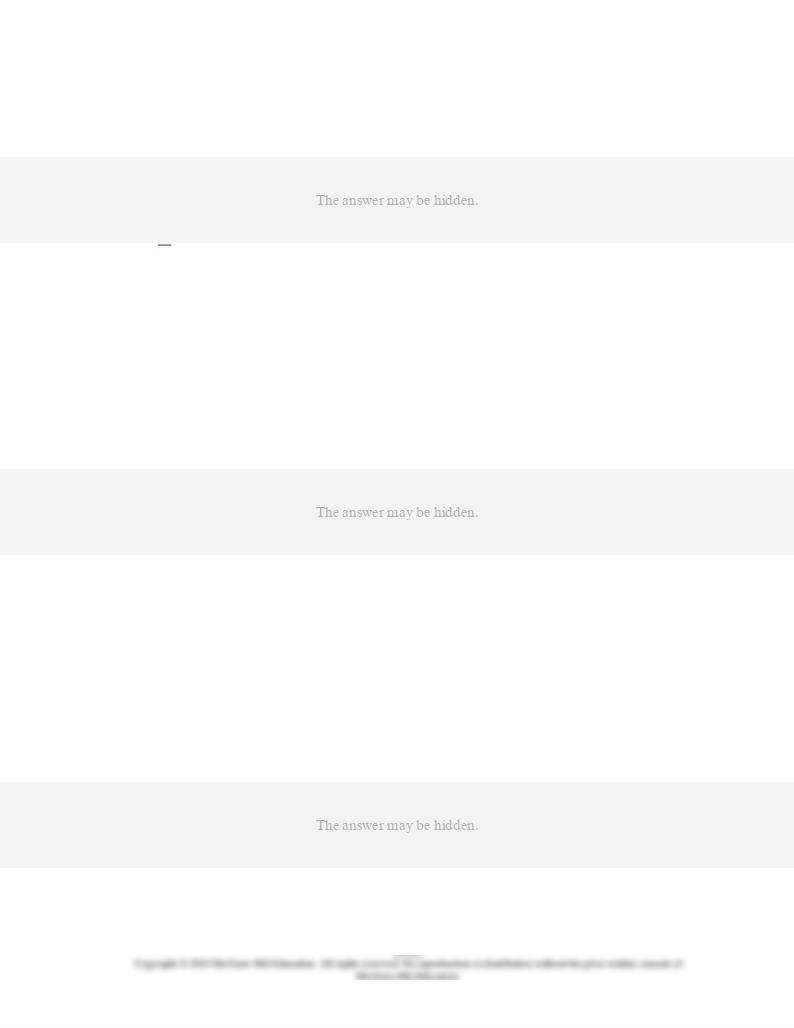
102.
If the dollar appreciates relative to foreign currencies, we would expect:
AACSB: Reflective Thinking
Accessibility: Keyboard Navigation
Blooms: Understand
Difficulty: 2 Medium
Learning Objective: 29-06 Explain how economists integrate the international sector (exports and imports) into the
aggregate expenditures model.
Topic: Adding international trade
103.
If a nation imposes tariffs and quotas on foreign products, the
immediate
effect will be to:
AACSB: Reflective Thinking
Accessibility: Keyboard Navigation
Blooms: Understand
Difficulty: 2 Medium
Learning Objective: 29-06 Explain how economists integrate the international sector (exports and imports) into the
aggregate expenditures model.
Topic: Adding international trade
104.
If the multiplier in an economy is 5, a $20 billion increase in net exports will:
AACSB: Analytic
Accessibility: Keyboard Navigation
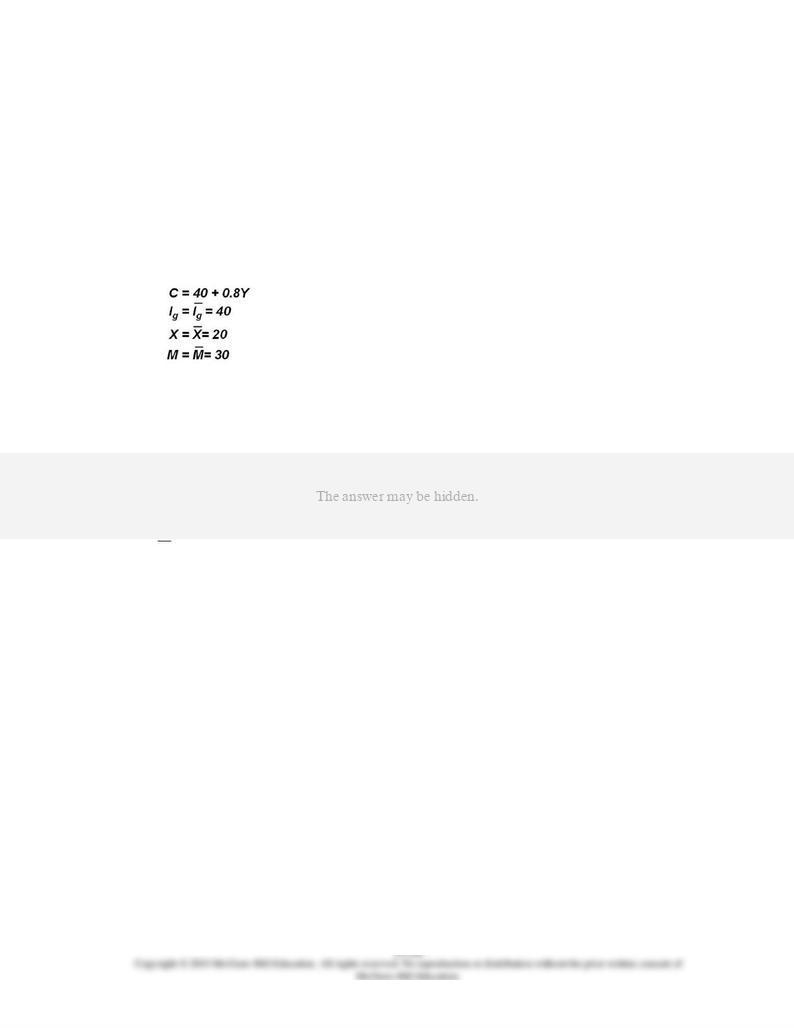
Blooms: Apply
Difficulty: 2 Medium
Learning Objective: 29-06 Explain how economists integrate the international sector (exports and imports) into the
aggregate expenditures model.
Topic: Adding international trade
105.
(Advanced analysis) Answer the question on the basis of the following information for a
private open economy. The letters
Y
,
C
,
Ig
,
X
, and
M
stand for GDP, consumption, gross
investment, exports, and imports respectively. Figures are in billions of dollars.
The equilibrium GDP (=
Y
) in the economy is:
AACSB: Analytic
Blooms: Analyze
Difficulty: 3 Hard
Learning Objective: 29-06 Explain how economists integrate the international sector (exports and imports) into the
aggregate expenditures model.
Topic: Adding international trade
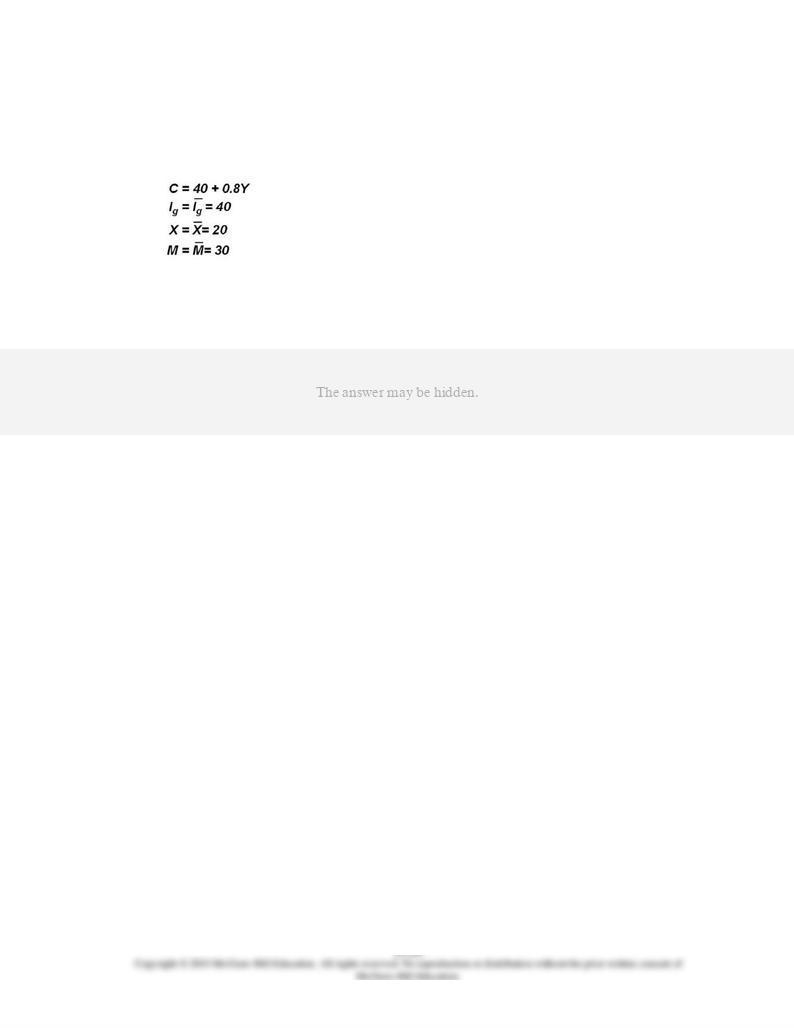
106.
(Advanced analysis) Answer the question on the basis of the following information for a
private open economy. The letters
Y
,
C
,
Ig
,
X
, and
M
stand for GDP, consumption, gross
investment, exports, and imports respectively. Figures are in billions of dollars.
Refer to the information. In equilibrium, saving is:
AACSB: Analytic
Blooms: Analyze
Difficulty: 3 Hard
Learning Objective: 29-06 Explain how economists integrate the international sector (exports and imports) into the
aggregate expenditures model.
Topic: Adding international trade

107.
(Advanced analysis) Answer the question on the basis of the following information for a
private open economy. The letters
Y
,
C
,
Ig
,
X
, and
M
stand for GDP, consumption, gross
investment, exports, and imports respectively. Figures are in billions of dollars.
Refer to the information. This nation is incurring:
AACSB: Analytic
Blooms: Apply
Difficulty: 2 Medium
Learning Objective: 29-06 Explain how economists integrate the international sector (exports and imports) into the
aggregate expenditures model.
Topic: Adding international trade
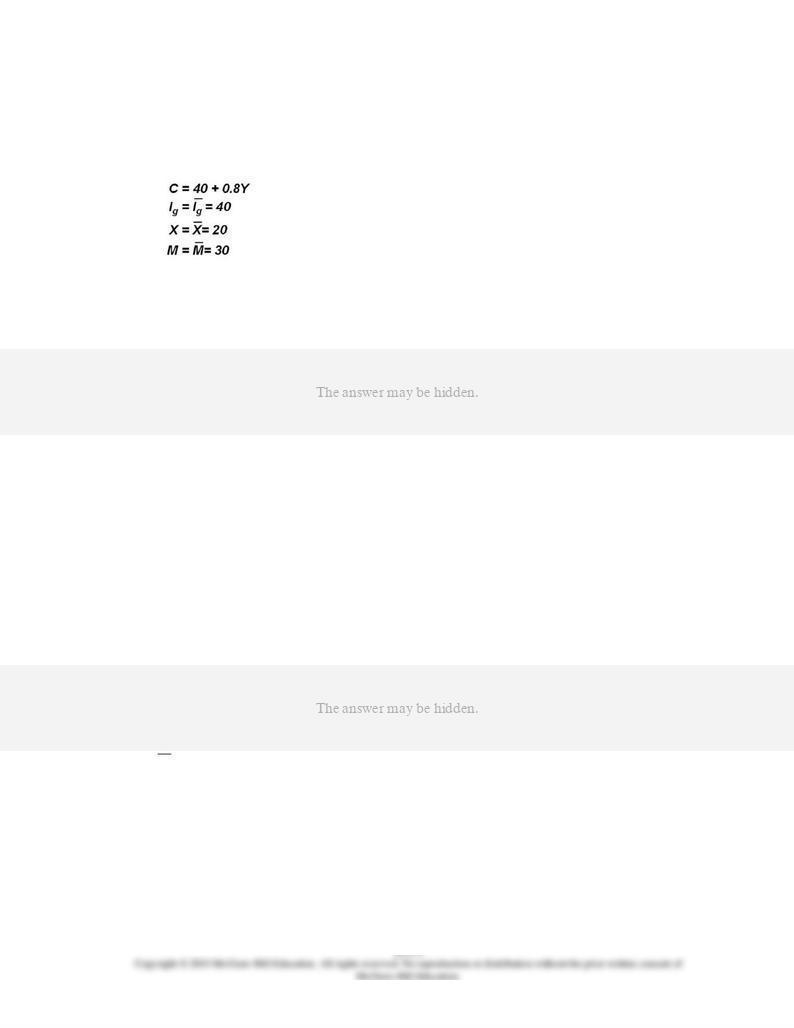
108.
(Advanced analysis) Answer the question on the basis of the following information for a
private open economy. The letters
Y
,
C
,
Ig
,
X
, and
M
stand for GDP, consumption, gross
investment, exports, and imports respectively. Figures are in billions of dollars.
Refer to the information. International trade in this case:
AACSB: Reflective Thinking
Blooms: Apply
Difficulty: 2 Medium
Learning Objective: 29-06 Explain how economists integrate the international sector (exports and imports) into the
aggregate expenditures model.
Topic: Adding international trade
109.
If the equilibrium level of GDP in a private open economy is $1,000 billion and
consumption is $700 billion at that level of GDP, then:
AACSB: Analytic
Accessibility: Keyboard Navigation
Blooms: Apply
Difficulty: 2 Medium
Learning Objective: 29-06 Explain how economists integrate the international sector (exports and imports) into the
aggregate expenditures model.
Topic: Adding international trade

110.
An exchange rate:
AACSB: Analytic
Accessibility: Keyboard Navigation
Blooms: Remember
Difficulty: 1 Easy
Learning Objective: 29-06 Explain how economists integrate the international sector (exports and imports) into the
aggregate expenditures model.
Topic: Adding international trade
111.
If the United States wants to increase its net exports in the short term, it might take steps
to:
AACSB: Reflective Thinking
Accessibility: Keyboard Navigation
Blooms: Understand
Difficulty: 2 Medium
Learning Objective: 29-06 Explain how economists integrate the international sector (exports and imports) into the
aggregate expenditures model.
Topic: Adding international trade
112.
Other things equal, a serious recession in the economies of U.S. trading partners will:
AACSB: Reflective Thinking
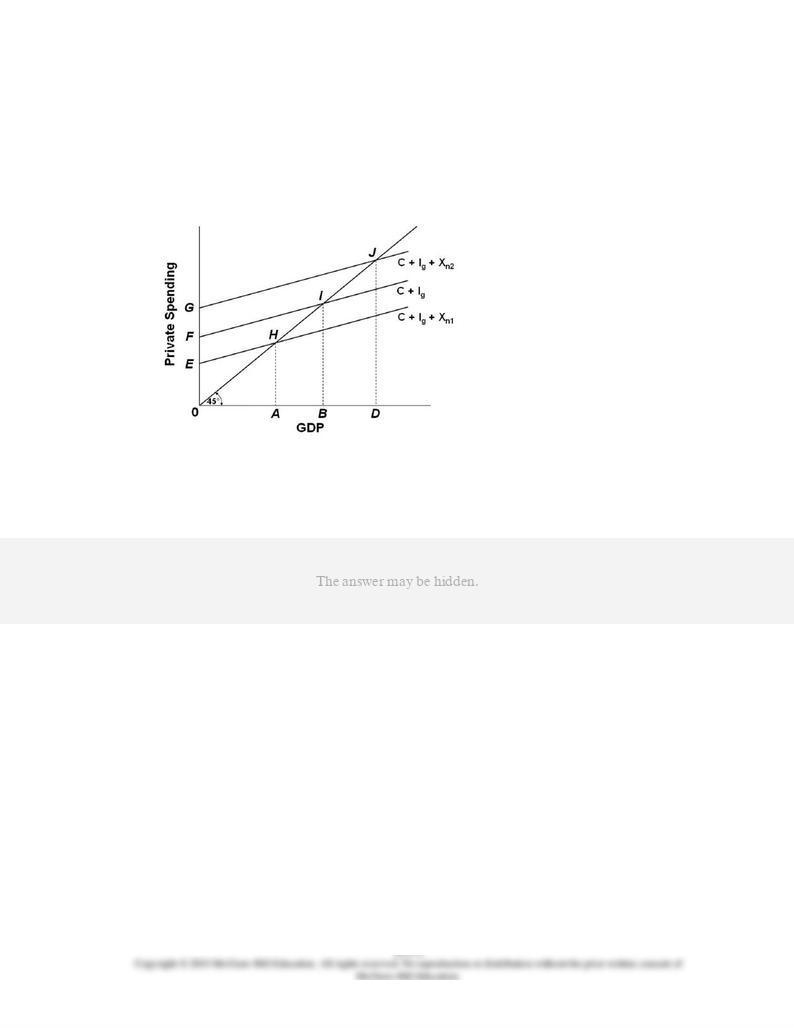
Accessibility: Keyboard Navigation
Blooms: Understand
Difficulty: 2 Medium
Learning Objective: 29-06 Explain how economists integrate the international sector (exports and imports) into the
aggregate expenditures model.
Topic: Adding international trade
113.
Refer to the diagram. If (
C
+
Ig
) are the private expenditures in the closed economy and
Xn
2
are the net exports in the open economy, we can conclude that:
AACSB: Reflective Thinking
Blooms: Apply
Difficulty: 2 Medium
Learning Objective: 29-06 Explain how economists integrate the international sector (exports and imports) into the
aggregate expenditures model.
Topic: Adding international trade
Type: Graph
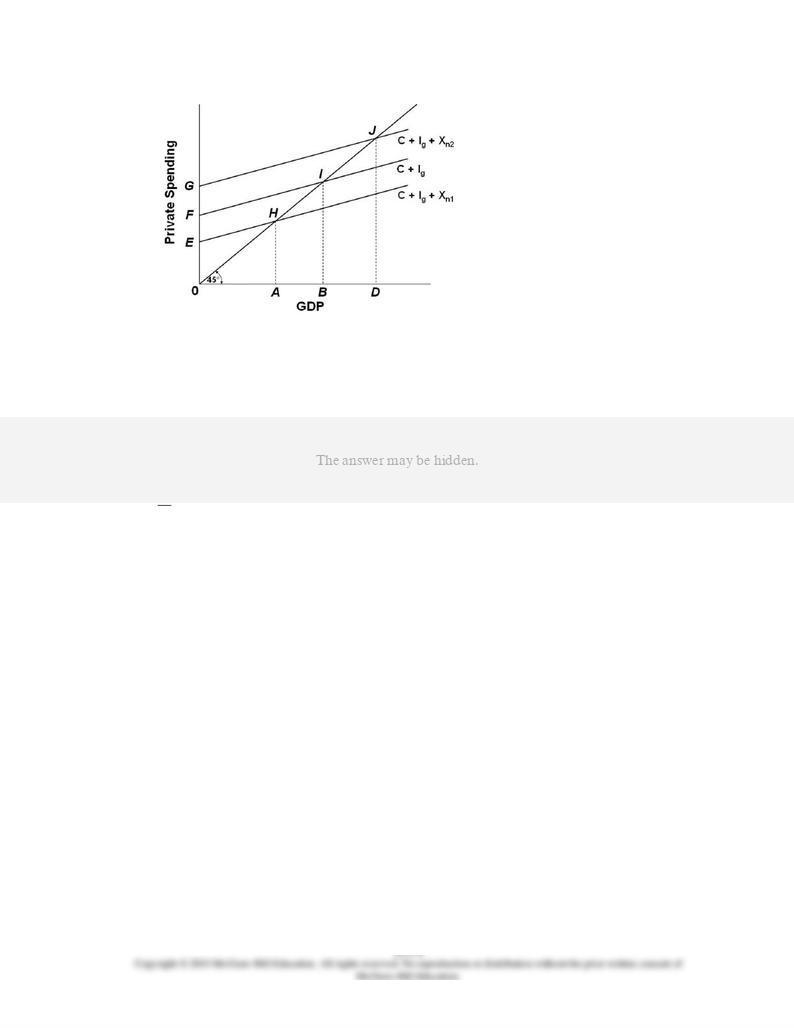
114.
Refer to the diagram. If net exports are
Xn
2, the GDP in the open economy will exceed GDP
in the closed economy by:
AACSB: Reflective Thinking
Blooms: Analyze
Difficulty: 3 Hard
Learning Objective: 29-06 Explain how economists integrate the international sector (exports and imports) into the
aggregate expenditures model.
Topic: Adding international trade
Type: Graph

115.
Refer to the diagram. The multiplier in this economy is:
AACSB: Analytic
Blooms: Apply
Difficulty: 2 Medium
Learning Objective: 29-06 Explain how economists integrate the international sector (exports and imports) into the
aggregate expenditures model.
Topic: Adding international trade
Type: Graph
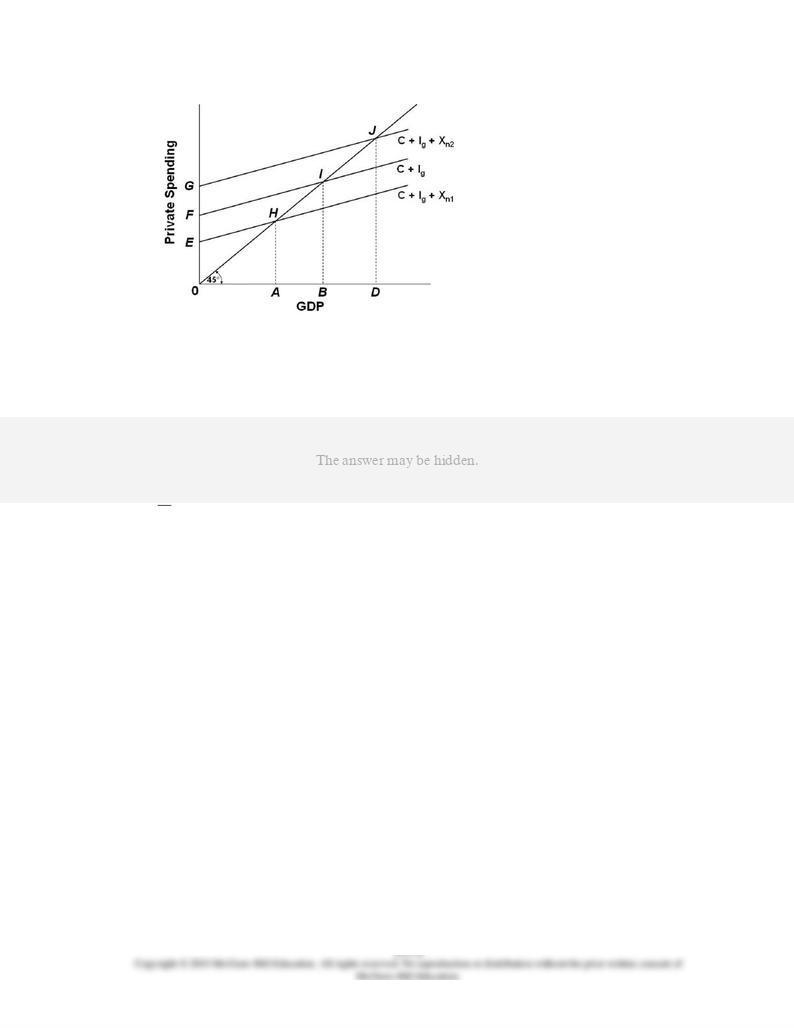
116.
Refer to the diagram. If aggregate expenditures in this economy are (
C
+
Ig
+
Xn
2), then the
equilibrium levels of GDP and aggregate expenditures respectively will be:
AACSB: Reflective Thinking
Blooms: Analyze
Difficulty: 3 Hard
Learning Objective: 29-06 Explain how economists integrate the international sector (exports and imports) into the
aggregate expenditures model.
Topic: Adding international trade
Type: Graph

117.
Refer to the diagram. The change in aggregate expenditures as shown from (
C
+
Ig
+
Xn
2)
to (
C
+
Ig
+
Xn
1) might be caused by:
AACSB: Reflective Thinking
Blooms: Apply
Difficulty: 2 Medium
Learning Objective: 29-06 Explain how economists integrate the international sector (exports and imports) into the
aggregate expenditures model.
Topic: Adding international trade
Type: Graph
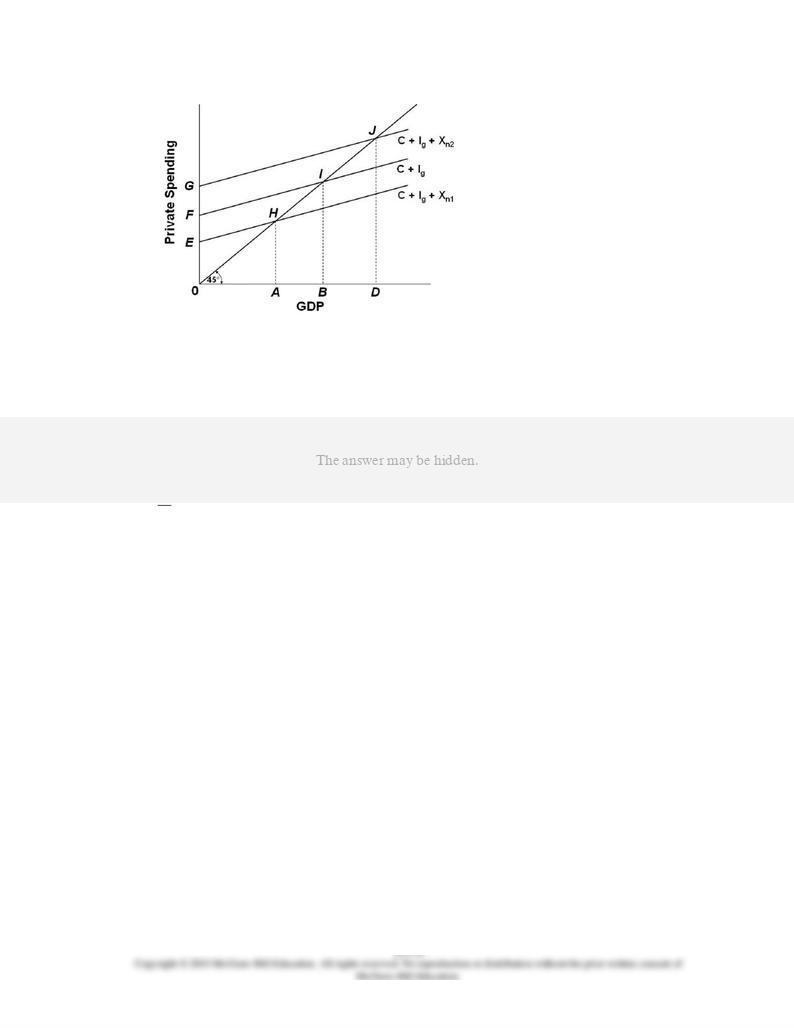
118.
Refer to the diagram. The change in aggregate expenditures as shown from (
C
+
Ig
+
Xn
1)
to (
C
+
Ig
+
Xn
2) will produce:
AACSB: Reflective Thinking
Blooms: Analyze
Difficulty: 3 Hard
Learning Objective: 29-08 Differentiate between equilibrium GDP and full-employment GDP and identify and describe the
nature and causes of "recessionary expenditure gaps" and "inflationary expenditure gaps."
Topic: Equilibrium versus full-employment GDP
Type: Graph
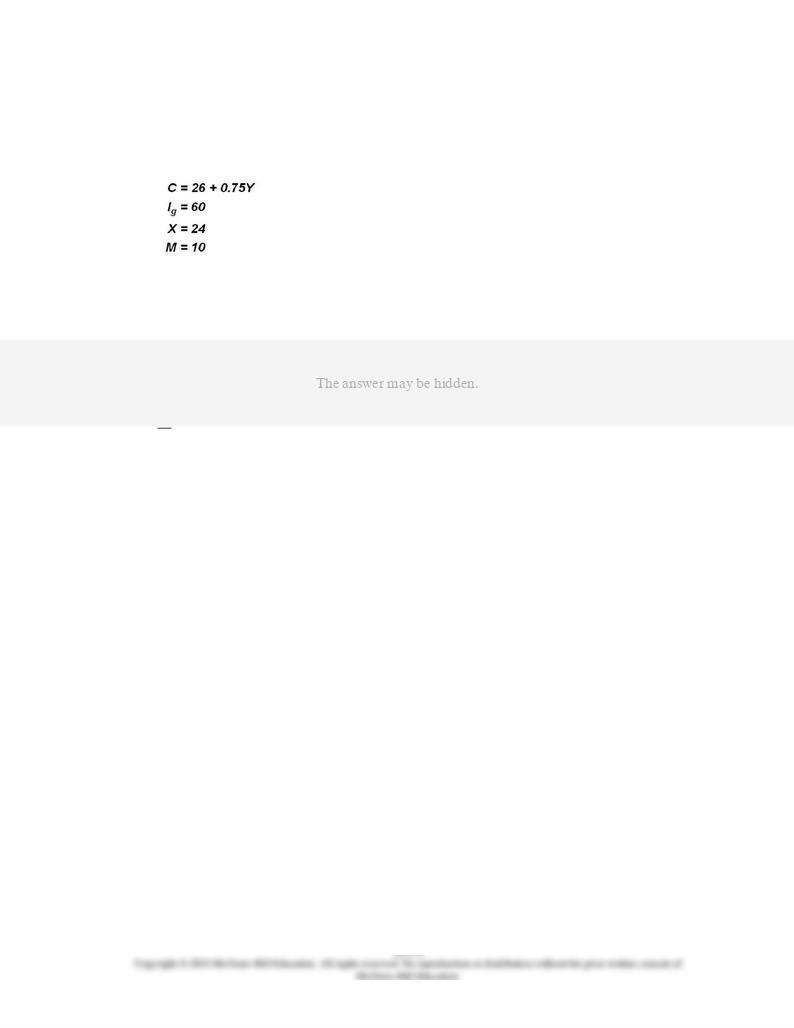
119.
(Advanced analysis) Answer the question on the basis of the following information for a
private open economy. The letters
Y
,
C
,
Ig
,
X
, and
M
stand for GDP, consumption, gross
investment, exports, and imports respectively. Figures are in billions of dollars.
The equilibrium GDP for the open economy is:
AACSB: Analytic
Blooms: Analyze
Difficulty: 3 Hard
Learning Objective: 29-06 Explain how economists integrate the international sector (exports and imports) into the
aggregate expenditures model.
Topic: Adding international trade

120.
(Advanced analysis) Answer the question on the basis of the following information for a
private open economy. The letters
Y
,
C
,
Ig
,
X
, and
M
stand for GDP, consumption, gross
A.
4.6.
B.
3.33.
C.
5.0.
D.
4.0.
AACSB: Analytic
Blooms: Apply
Difficulty: 2 Medium
Learning Objective: 29-06 Explain how economists integrate the international sector (exports and imports) into the
aggregate expenditures model.
Topic: Adding international trade
121.
In a mixed open economy, the equilibrium GDP exists where:
AACSB: Analytic
Accessibility: Keyboard Navigation
Blooms: Remember
Difficulty: 1 Easy
Learning Objective: 29-07 Explain how economists integrate the public sector (government expenditures and taxes) into
the aggregate expenditures model.
Topic: Adding the public sector

122.
In a mixed open economy, the equilibrium GDP is determined at that point where:
AACSB: Analytic
Accessibility: Keyboard Navigation
Blooms: Remember
Difficulty: 1 Easy
Learning Objective: 29-07 Explain how economists integrate the public sector (government expenditures and taxes) into
the aggregate expenditures model.
Topic: Adding the public sector
123.
Suppose that a mixed open economy is producing at its equilibrium income and that net
exports are zero. If at the equilibrium income the public sector's budget shows a surplus:
AACSB: Reflective Thinking
Accessibility: Keyboard Navigation
Blooms: Understand
Difficulty: 2 Medium
Learning Objective: 29-07 Explain how economists integrate the public sector (government expenditures and taxes) into
the aggregate expenditures model.
Topic: Adding the public sector

124.
Other things equal, if $100 billion of government purchases (
G
) is added to private
spending (
C
+
Ig
+
Xn
), GDP will:
AACSB: Analytic
Accessibility: Keyboard Navigation
Blooms: Understand
Difficulty: 2 Medium
Learning Objective: 29-07 Explain how economists integrate the public sector (government expenditures and taxes) into
the aggregate expenditures model.
Topic: Adding the public sector
125.
Suppose the economy's multiplier is 2. Other things equal, a $25 billion decrease in
government expenditures on national defense will cause equilibrium GDP to:
AACSB: Analytic
Accessibility: Keyboard Navigation
Blooms: Apply
Difficulty: 2 Medium
Learning Objective: 29-07 Explain how economists integrate the public sector (government expenditures and taxes) into
the aggregate expenditures model.
Topic: Adding the public sector

126.
Assume the MPC is .8. If government were to impose $50 billion of new taxes on
household income, consumption spending would initially decrease by:
AACSB: Analytic
Accessibility: Keyboard Navigation
Blooms: Apply
Difficulty: 2 Medium
Learning Objective: 29-07 Explain how economists integrate the public sector (government expenditures and taxes) into
the aggregate expenditures model.
Topic: Adding the public sector
127.
Refer to the diagram. The level of government spending:
AACSB: Analytic
Blooms: Apply
Difficulty: 2 Medium
Learning Objective: 29-07 Explain how economists integrate the public sector (government expenditures and taxes) into
the aggregate expenditures model.
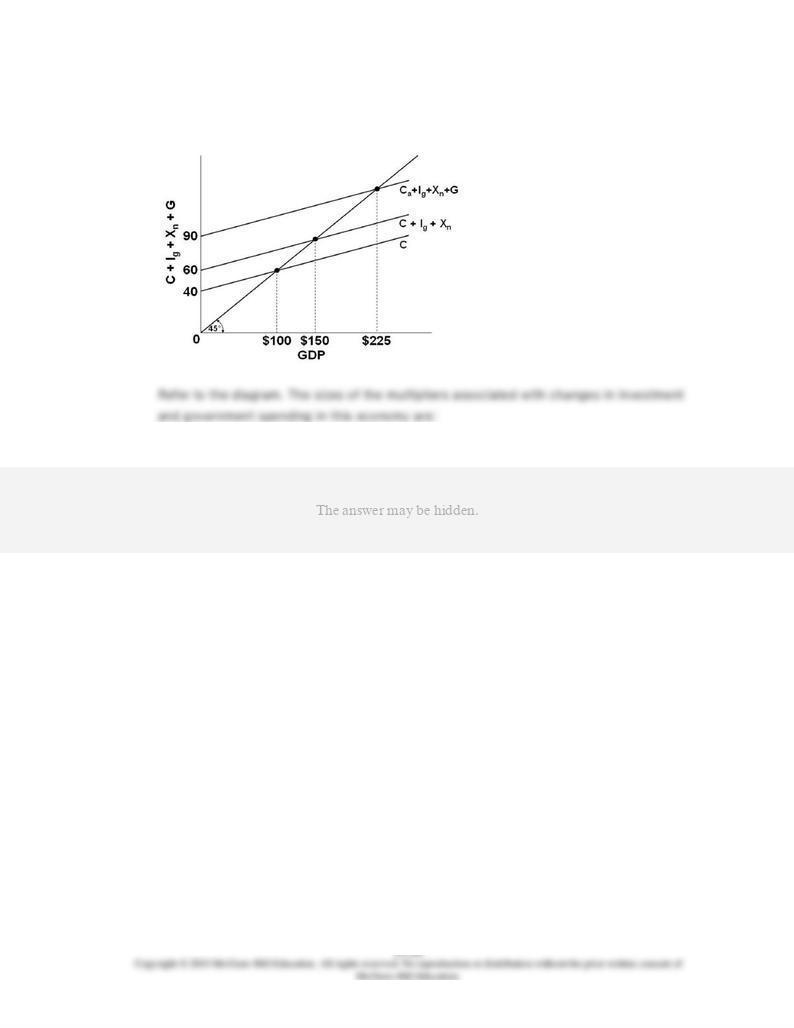
Topic: Adding the public sector
Type: Graph
128.
AACSB: Analytic
Blooms: Apply
Difficulty: 2 Medium
Learning Objective: 29-07 Explain how economists integrate the public sector (government expenditures and taxes) into
the aggregate expenditures model.
Topic: Adding the public sector
Type: Graph

129.
Refer to the diagram. The impact of the public sector on the equilibrium GDP:
AACSB: Reflective Thinking
Blooms: Apply
Difficulty: 2 Medium
Learning Objective: 29-07 Explain how economists integrate the public sector (government expenditures and taxes) into
the aggregate expenditures model.
Topic: Adding the public sector
Type: Graph
130.
Other things equal, the multiplier effect associated with a change in government spending
is:
AACSB: Reflective Thinking
Accessibility: Keyboard Navigation
Blooms: Understand
Difficulty: 2 Medium
Learning Objective: 29-07 Explain how economists integrate the public sector (government expenditures and taxes) into

the aggregate expenditures model.
Topic: Adding the public sector
131.
In which of the following situations for a mixed open economy will the level of GDP
expand?
AACSB: Reflective Thinking
Accessibility: Keyboard Navigation
Blooms: Understand
Difficulty: 2 Medium
Learning Objective: 29-07 Explain how economists integrate the public sector (government expenditures and taxes) into
the aggregate expenditures model.
Topic: Adding the public sector
132.
If a lump-sum income tax of $25 billion is levied and the MPS is .20, the:
AACSB: Analytic
Accessibility: Keyboard Navigation
Blooms: Apply
Difficulty: 2 Medium
Learning Objective: 29-07 Explain how economists integrate the public sector (government expenditures and taxes) into
the aggregate expenditures model.
Topic: Adding the public sector

133.
Which of the following statements is
incorrect
?
AACSB: Analytic
Accessibility: Keyboard Navigation
Blooms: Apply
Difficulty: 2 Medium
Learning Objective: 29-07 Explain how economists integrate the public sector (government expenditures and taxes) into
the aggregate expenditures model.
Topic: Adding the public sector
134.
Suppose the economy is operating at its full-employment-noninflationary GDP and the
MPC is .75. The federal government now finds that it must increase spending on military
goods by $21 billion in response to deterioration in the international political situation. To
sustain full-employment-noninflationary GDP, government must:
AACSB: Analytic
Accessibility: Keyboard Navigation
Blooms: Apply
Difficulty: 2 Medium
Learning Objective: 29-07 Explain how economists integrate the public sector (government expenditures and taxes) into
the aggregate expenditures model.
Topic: Adding the public sector

135.
A $1 increase in government spending on goods and services will have a greater impact on
the equilibrium GDP than will a $1 decline in taxes because:
AACSB: Reflective Thinking
Accessibility: Keyboard Navigation
Blooms: Understand
Difficulty: 2 Medium
Learning Objective: 29-07 Explain how economists integrate the public sector (government expenditures and taxes) into
the aggregate expenditures model.
Topic: Adding the public sector
136.
In a mixed open economy, if aggregate expenditures exceed GDP:
AACSB: Reflective Thinking
Accessibility: Keyboard Navigation
Blooms: Understand
Difficulty: 2 Medium
Learning Objective: 29-07 Explain how economists integrate the public sector (government expenditures and taxes) into
the aggregate expenditures model.
Topic: Adding the public sector
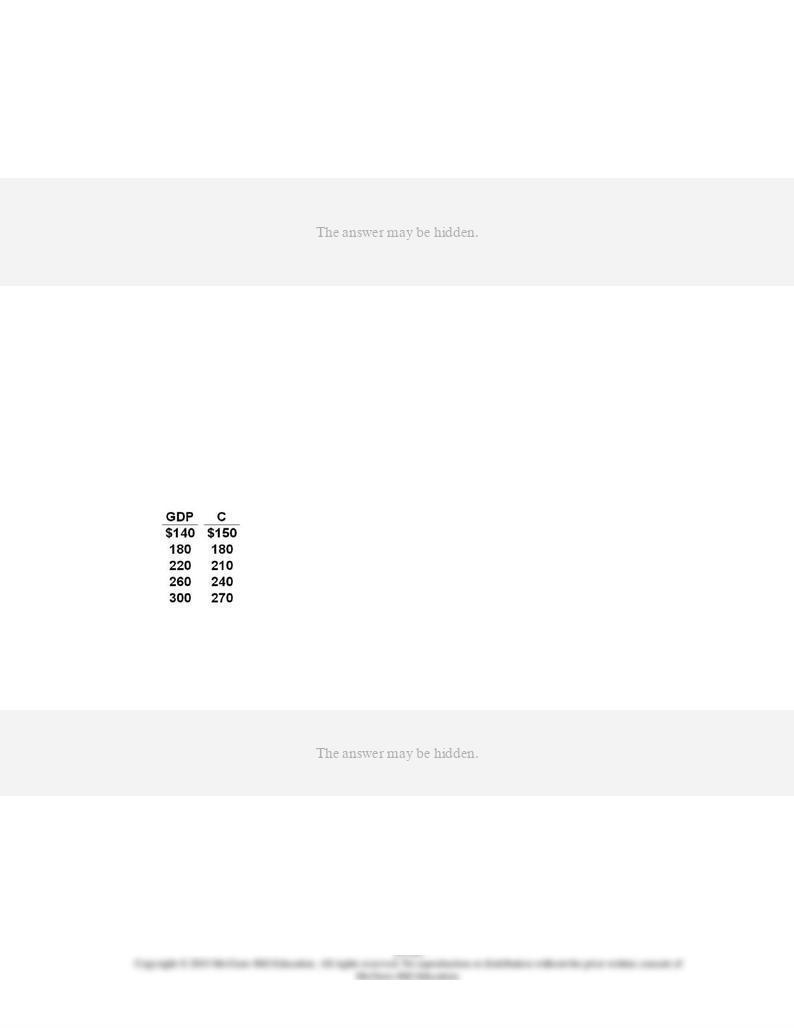
137.
An increase in taxes of a specific amount will have a smaller impact on the equilibrium
GDP than will a decline in government spending of the same amount because:
AACSB: Reflective Thinking
Accessibility: Keyboard Navigation
Blooms: Understand
Difficulty: 2 Medium
Learning Objective: 29-07 Explain how economists integrate the public sector (government expenditures and taxes) into
the aggregate expenditures model.
Topic: Adding the public sector
138.
The following schedule contains data for a private closed economy. All figures are in
billions. Use these data in answering the question.
Refer to the data. If gross investment is $10 at all levels of GDP, the equilibrium GDP will
be:
AACSB: Analytic
Blooms: Apply
Difficulty: 2 Medium
Learning Objective: 29-07 Explain how economists integrate the public sector (government expenditures and taxes) into
the aggregate expenditures model.
Topic: Adding the public sector
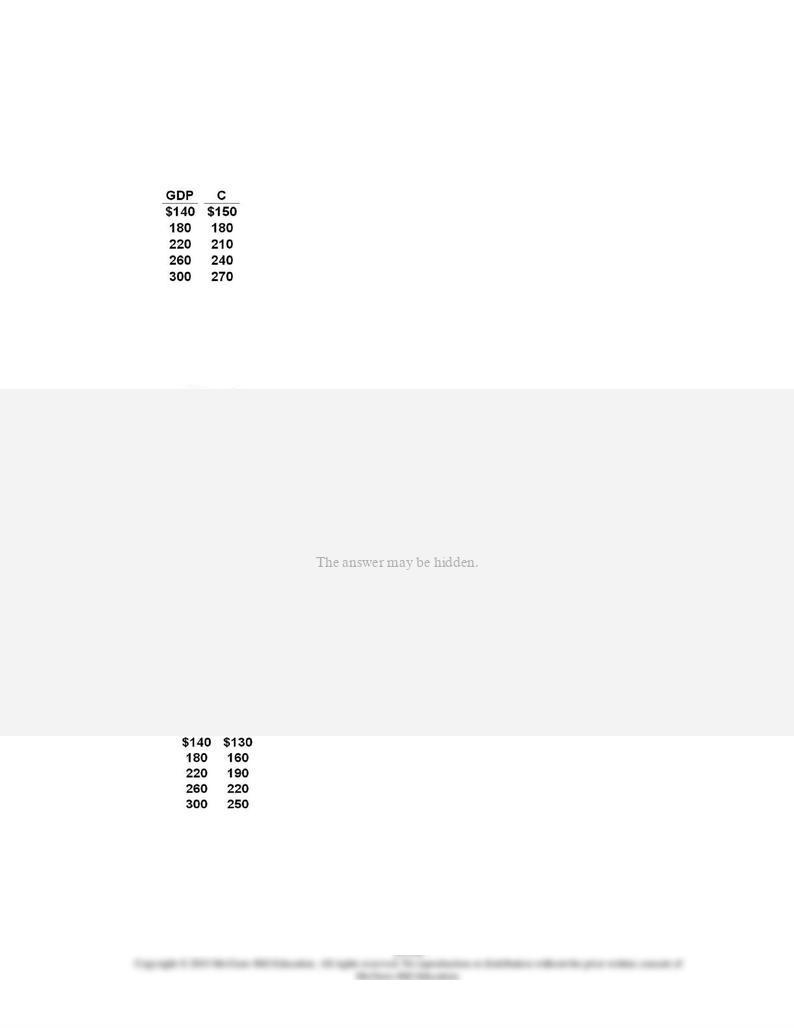
Type: Table
139.
The following schedule contains data for a private closed economy. All figures are in
billions. Use these data in answering the question.
Refer to the data. If a lump-sum tax of $20 is imposed, the consumption schedule will
become:
AACSB: Analytic
Blooms: Apply
Difficulty: 2 Medium
Learning Objective: 29-07 Explain how economists integrate the public sector (government expenditures and taxes) into
the aggregate expenditures model.

Topic: Adding the public sector
Type: Table
140.
Which of the following is a correct statement of the impacts of a lump-sum tax?
AACSB: Reflective Thinking
Accessibility: Keyboard Navigation
Blooms: Understand
Difficulty: 2 Medium
Learning Objective: 29-07 Explain how economists integrate the public sector (government expenditures and taxes) into
the aggregate expenditures model.
Topic: Adding the public sector
141.
The level of aggregate expenditures in a mixed open economy is comprised of:
AACSB: Analytic
Accessibility: Keyboard Navigation
Blooms: Remember
Difficulty: 1 Easy
Learning Objective: 29-07 Explain how economists integrate the public sector (government expenditures and taxes) into
the aggregate expenditures model.
Topic: Adding the public sector

142.
If the MPC is 2/3, the initial impact of an increase of $12 billion in lump-sum taxes will be
to cause:
AACSB: Analytic
Accessibility: Keyboard Navigation
Blooms: Apply
Difficulty: 2 Medium
Learning Objective: 29-07 Explain how economists integrate the public sector (government expenditures and taxes) into
the aggregate expenditures model.
Topic: Adding the public sector
143.
In a mixed closed economy:
AACSB: Analytic
Accessibility: Keyboard Navigation
Blooms: Remember
Difficulty: 1 Easy
Learning Objective: 29-07 Explain how economists integrate the public sector (government expenditures and taxes) into
the aggregate expenditures model.
Topic: Adding the public sector
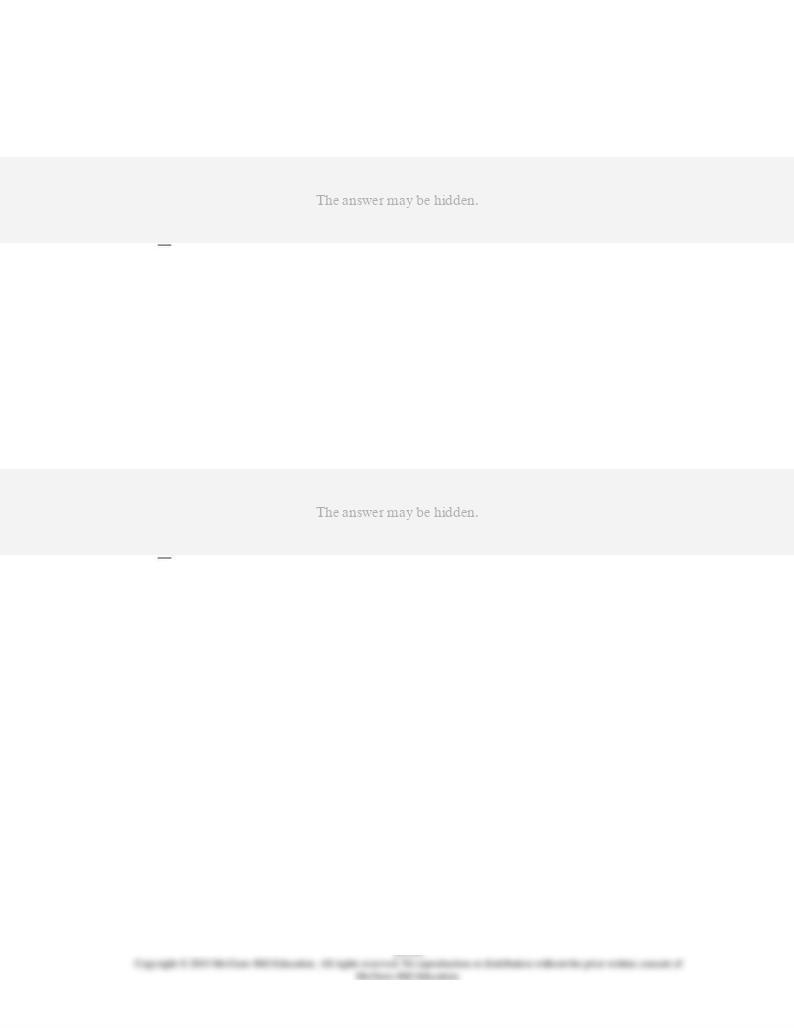
144.
An increase in taxes will have a greater effect on the equilibrium GDP:
AACSB: Reflective Thinking
Accessibility: Keyboard Navigation
Blooms: Understand
Difficulty: 2 Medium
Learning Objective: 29-07 Explain how economists integrate the public sector (government expenditures and taxes) into
the aggregate expenditures model.
Topic: Adding the public sector
145.
A lump-sum tax causes the after-tax consumption schedule:
AACSB: Reflective Thinking
Accessibility: Keyboard Navigation
Blooms: Understand
Difficulty: 2 Medium
Learning Objective: 29-07 Explain how economists integrate the public sector (government expenditures and taxes) into
the aggregate expenditures model.
Topic: Adding the public sector

146.
(Advanced analysis) Answer the question on the basis of the following information for a
mixed open economy. The letters
Y
,
Ca
,
Ig
,
Xn
,
G
, and
T
stand for GDP, consumption, gross
investment, net exports, government purchases, and net taxes respectively. Figures are in
billions of dollars.
Refer to the information. The equilibrium level of GDP for this economy is:
AACSB: Analytic
Blooms: Analyze
Difficulty: 3 Hard
Learning Objective: 29-07 Explain how economists integrate the public sector (government expenditures and taxes) into
the aggregate expenditures model.
Topic: Adding the public sector

147.
(Advanced analysis) Answer the question on the basis of the following information for a
mixed open economy. The letters
Y
,
Ca
,
Ig
,
Xn
,
G
, and
T
stand for GDP, consumption, gross
A.
4.
B.
3.
C.
2.
D.
2.33.
AACSB: Analytic
Blooms: Apply
Difficulty: 2 Medium
Learning Objective: 29-07 Explain how economists integrate the public sector (government expenditures and taxes) into
the aggregate expenditures model.
Topic: Adding the public sector

148.
(Advanced analysis) Answer the question on the basis of the following information for a
mixed open economy. The letters
Y
,
Ca
,
Ig
,
Xn
,
G
, and
T
stand for GDP, consumption, gross
investment, net exports, government purchases, and net taxes respectively. Figures are in
billions of dollars.
Refer to the information. If government desired to raise the equilibrium GDP to $650, it
could:
AACSB: Analytic
Blooms: Analyze
Difficulty: 3 Hard
Learning Objective: 29-07 Explain how economists integrate the public sector (government expenditures and taxes) into
the aggregate expenditures model.
Topic: Adding the public sector
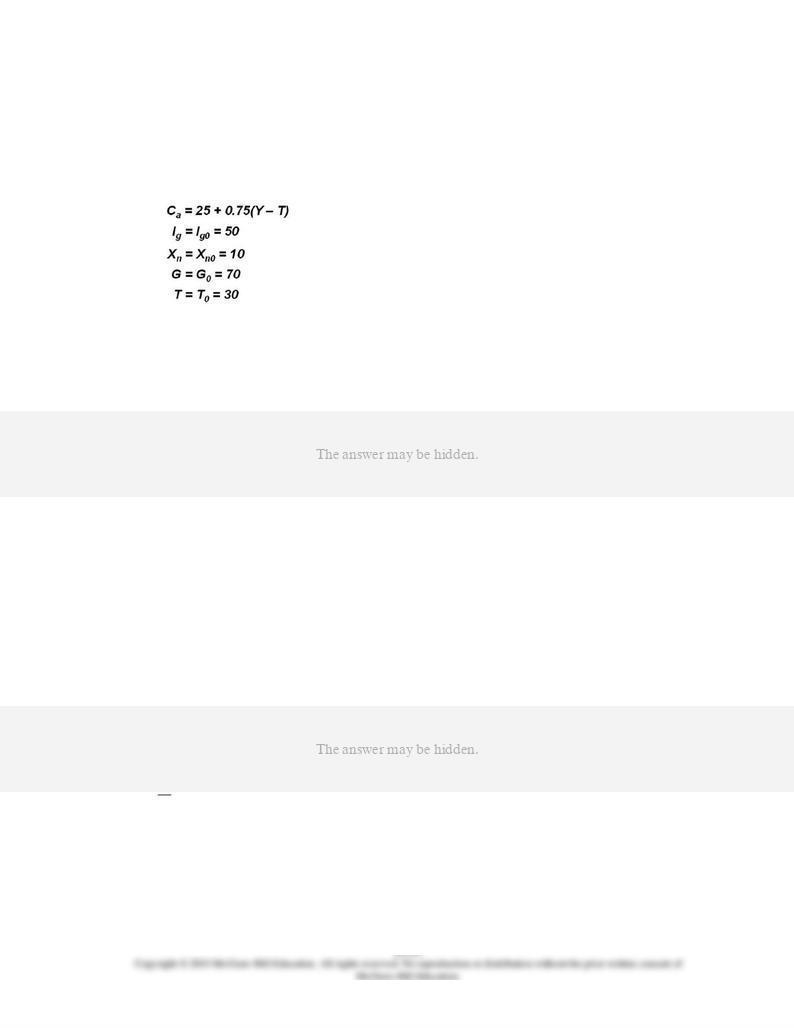
149.
(Advanced analysis) Answer the question on the basis of the following information for a
mixed open economy. The letters
Y
,
Ca
,
Ig
,
Xn
,
G
, and
T
stand for GDP, consumption, gross
investment, net exports, government purchases, and net taxes respectively. Figures are in
billions of dollars.
Refer to the information. If the economy's tax schedule was
T
= .2
Y
rather than
T
=
T
0 =
30, the equilibrium GDP would be:
AACSB: Analytic
Blooms: Analyze
Difficulty: 3 Hard
Learning Objective: 29-07 Explain how economists integrate the public sector (government expenditures and taxes) into
the aggregate expenditures model.
Topic: Adding the public sector
150.
Which of the following would increase GDP by the greatest amount?
AACSB: Analytic
Accessibility: Keyboard Navigation
Blooms: Understand
Difficulty: 2 Medium
Learning Objective: 29-07 Explain how economists integrate the public sector (government expenditures and taxes) into
the aggregate expenditures model.

Topic: Adding the public sector
151.
Which of the following would reduce GDP by the greatest amount?
AACSB: Analytic
Accessibility: Keyboard Navigation
Blooms: Understand
Difficulty: 2 Medium
Learning Objective: 29-07 Explain how economists integrate the public sector (government expenditures and taxes) into
the aggregate expenditures model.
Topic: Adding the public sector
152.
What do investment and government expenditures have in common?
AACSB: Reflective Thinking
Accessibility: Keyboard Navigation
Blooms: Understand
Difficulty: 2 Medium
Learning Objective: 29-07 Explain how economists integrate the public sector (government expenditures and taxes) into
the aggregate expenditures model.
Topic: Adding the public sector
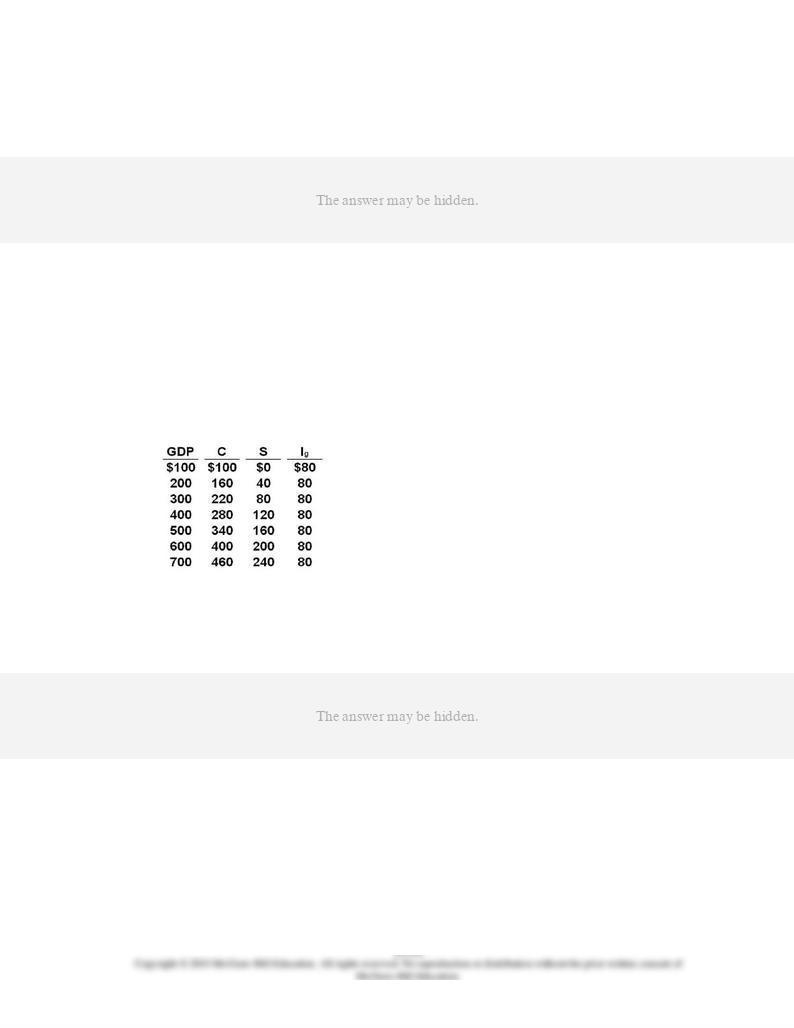
153.
Taxes represent:
AACSB: Reflective Thinking
Accessibility: Keyboard Navigation
Blooms: Understand
Difficulty: 2 Medium
Learning Objective: 29-07 Explain how economists integrate the public sector (government expenditures and taxes) into
the aggregate expenditures model.
Topic: Adding the public sector
154.
The following information is for a closed economy:
Refer to the information. If both government spending and taxes are zero, the equilibrium
level of GDP is:
AACSB: Analytic
Blooms: Analyze
Difficulty: 3 Hard
Learning Objective: 29-07 Explain how economists integrate the public sector (government expenditures and taxes) into
the aggregate expenditures model.
Topic: Adding the public sector
Type: Table

155.
The following information is for a closed economy:
Refer to the information. If government now spends $80 billion at each level of GDP and
taxes remain at zero, the equilibrium GDP:
AACSB: Analytic
Blooms: Analyze
Difficulty: 3 Hard
Learning Objective: 29-07 Explain how economists integrate the public sector (government expenditures and taxes) into
the aggregate expenditures model.
Topic: Adding the public sector
Type: Table
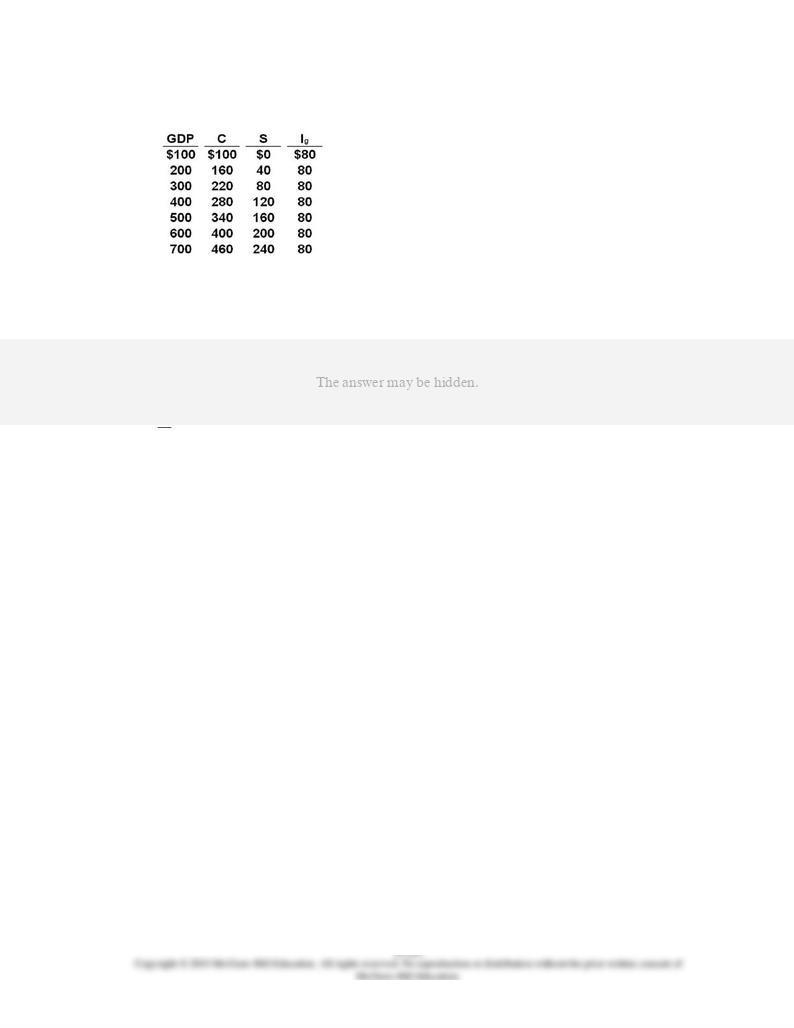
156.
The following information is for a closed economy:
Refer to the information. The introduction of $80 billion of government spending would:
AACSB: Analytic
Blooms: Apply
Difficulty: 2 Medium
Learning Objective: 29-07 Explain how economists integrate the public sector (government expenditures and taxes) into
the aggregate expenditures model.
Topic: Adding the public sector
Type: Table
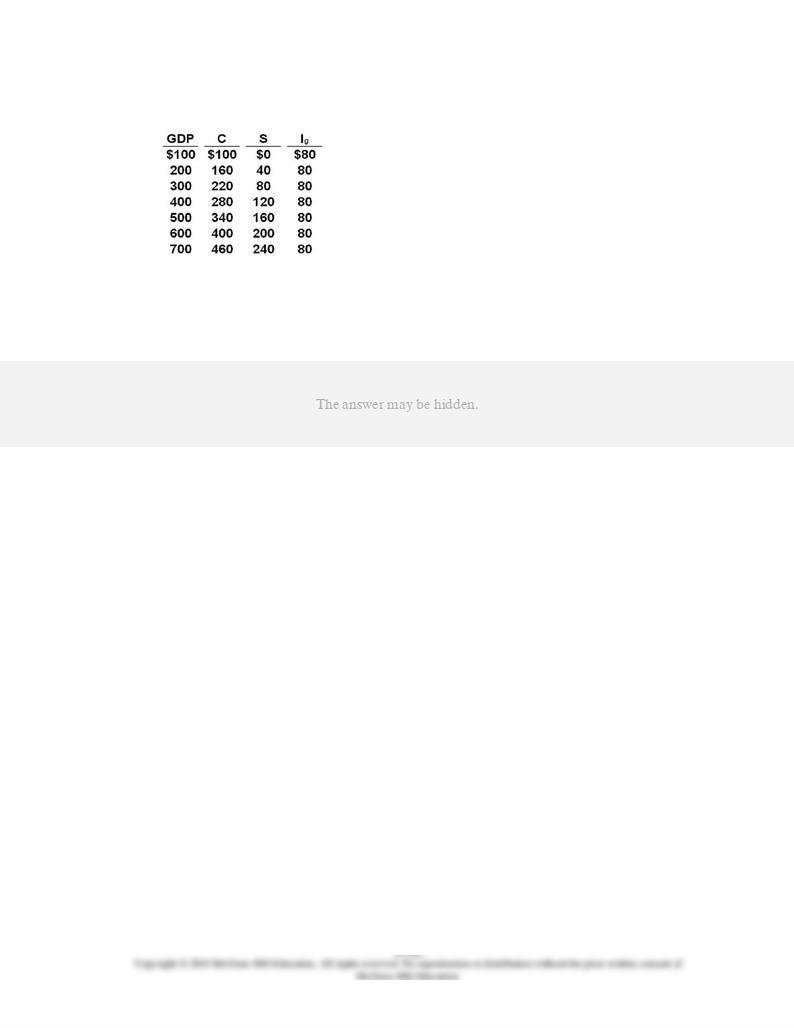
157.
The following information is for a closed economy:
Refer to the information. If government spends $80 billion at each level of GDP, and
imposes a lump-sum tax of $100:
AACSB: Analytic
Blooms: Analyze
Difficulty: 3 Hard
Learning Objective: 29-07 Explain how economists integrate the public sector (government expenditures and taxes) into
the aggregate expenditures model.
Topic: Adding the public sector
Type: Table
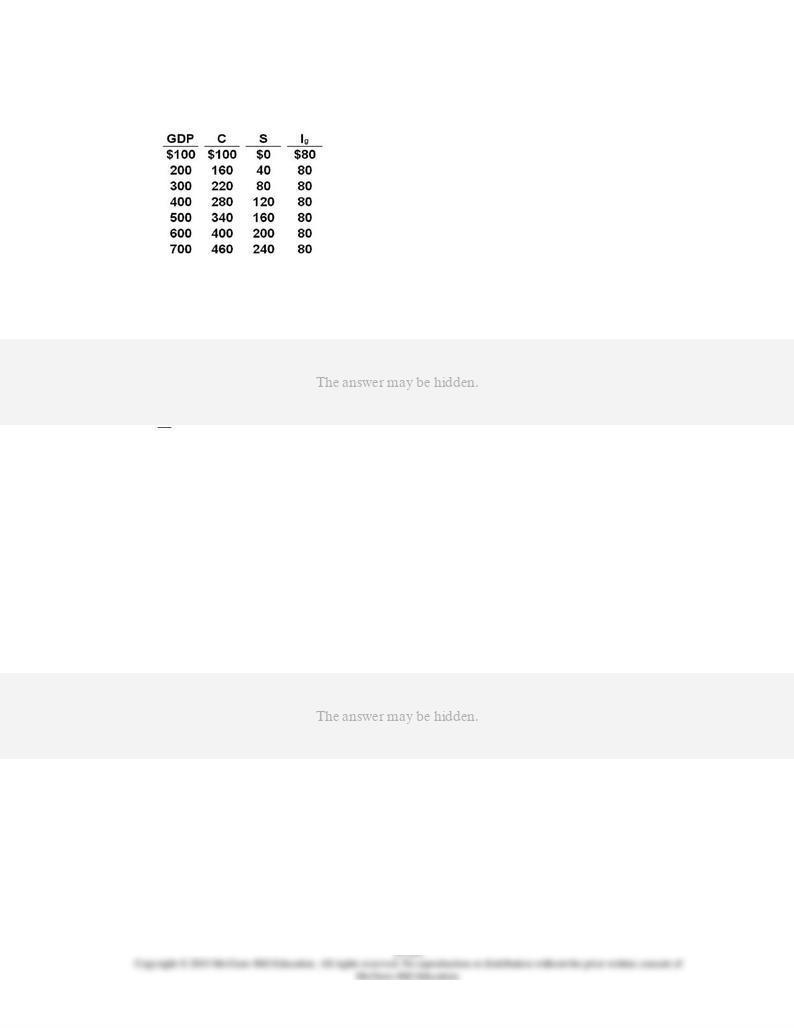
158.
The following information is for a closed economy:
Refer to the information. The addition of a $100 billion lump-sum tax:
AACSB: Analytic
Blooms: Apply
Difficulty: 2 Medium
Learning Objective: 29-07 Explain how economists integrate the public sector (government expenditures and taxes) into
the aggregate expenditures model.
Topic: Adding the public sector
Type: Table
159.
In moving from a private closed to a mixed closed economy in the aggregate expenditures
model, taxes:
AACSB: Analytic
Accessibility: Keyboard Navigation
Blooms: Remember
Difficulty: 1 Easy
Learning Objective: 29-07 Explain how economists integrate the public sector (government expenditures and taxes) into
the aggregate expenditures model.
Topic: Adding the public sector
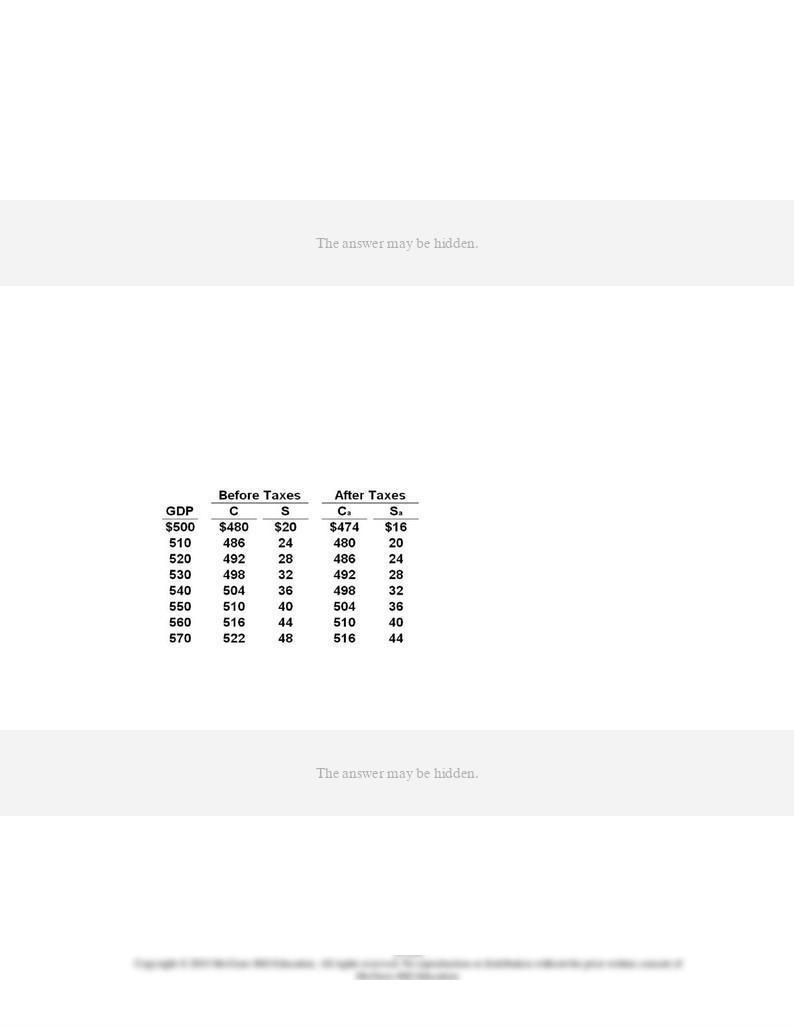
160.
Suppose government finds it can increase the equilibrium real GDP $45 billion by
increasing government purchases by $18 billion. On the basis of this information, we can
say that the:
AACSB: Analytic
Accessibility: Keyboard Navigation
Blooms: Apply
Difficulty: 2 Medium
Learning Objective: 29-07 Explain how economists integrate the public sector (government expenditures and taxes) into
the aggregate expenditures model.
Topic: Adding the public sector
161.
Answer the question on the basis of the following table:
The tax in the economy is a:
AACSB: Analytic
Blooms: Apply
Difficulty: 2 Medium
Learning Objective: 29-07 Explain how economists integrate the public sector (government expenditures and taxes) into
the aggregate expenditures model.

Topic: Adding the public sector
Type: Table
162.
Answer the question on the basis of the following table:
The MPC and MPS in the economy:
AACSB: Analytic
Blooms: Apply
Difficulty: 2 Medium
Learning Objective: 29-07 Explain how economists integrate the public sector (government expenditures and taxes) into
the aggregate expenditures model.
Topic: Adding the public sector
Type: Table

163.
Answer the question on the basis of the following table:
Refer to the table. If an additional lump-sum tax of $20 were imposed, we would expect:
AACSB: Analytic
Blooms: Apply
Difficulty: 2 Medium
Learning Objective: 29-07 Explain how economists integrate the public sector (government expenditures and taxes) into
the aggregate expenditures model.
Topic: Adding the public sector
Type: Table
164.
In a mixed open economy, which of the following all affect the equilibrium GDP in the
same direction?
A.
Ca
,
Ig
,
Sa
, and
M.
B.
Sa
,
T
, and
M.
AACSB: Analytic
Accessibility: Keyboard Navigation
Blooms: Understand
Difficulty: 2 Medium
Learning Objective: 29-07 Explain how economists integrate the public sector (government expenditures and taxes) into
the aggregate expenditures model.

Topic: Adding the public sector
165.
In the aggregate expenditures model, a reduction in taxes may:
AACSB: Reflective Thinking
Accessibility: Keyboard Navigation
Blooms: Understand
Difficulty: 2 Medium
Learning Objective: 29-07 Explain how economists integrate the public sector (government expenditures and taxes) into
the aggregate expenditures model.
Topic: Adding the public sector
166.
In the aggregate expenditures model, an increase in government spending may:
AACSB: Reflective Thinking
Accessibility: Keyboard Navigation
Blooms: Understand
Difficulty: 2 Medium
Learning Objective: 29-07 Explain how economists integrate the public sector (government expenditures and taxes) into
the aggregate expenditures model.
Topic: Adding the public sector

167.
If a $20 billion increase in government expenditures increases equilibrium GDP by $50
billion, then:
AACSB: Analytic
Accessibility: Keyboard Navigation
Blooms: Apply
Difficulty: 2 Medium
Learning Objective: 29-07 Explain how economists integrate the public sector (government expenditures and taxes) into
the aggregate expenditures model.
Topic: Adding the public sector
168.
If a $10 billion decrease in lump-sum taxes increases equilibrium GDP by $40 billion,
then:
AACSB: Analytic
Accessibility: Keyboard Navigation
Blooms: Apply
Difficulty: 2 Medium
Learning Objective: 29-07 Explain how economists integrate the public sector (government expenditures and taxes) into
the aggregate expenditures model.
Topic: Adding the public sector

169.
A lump-sum tax means that:
AACSB: Analytic
Accessibility: Keyboard Navigation
Blooms: Remember
Difficulty: 1 Easy
Learning Objective: 29-07 Explain how economists integrate the public sector (government expenditures and taxes) into
the aggregate expenditures model.
Topic: Adding the public sector
170.
In an aggregate expenditures diagram, a lump-sum tax (
T
) will:
AACSB: Reflective Thinking
Accessibility: Keyboard Navigation
Blooms: Understand
Difficulty: 2 Medium
Learning Objective: 29-07 Explain how economists integrate the public sector (government expenditures and taxes) into
the aggregate expenditures model.
Topic: Adding the public sector

171.
The effect of imposing a lump-sum tax is to:
AACSB: Reflective Thinking
Accessibility: Keyboard Navigation
Blooms: Understand
Difficulty: 2 Medium
Learning Objective: 29-07 Explain how economists integrate the public sector (government expenditures and taxes) into
the aggregate expenditures model.
Topic: Adding the public sector
172.
Suppose that unintended increases in inventories are occurring in a mixed closed
economy. We can surmise that:
AACSB: Reflective Thinking
Accessibility: Keyboard Navigation
Blooms: Understand
Difficulty: 2 Medium
Learning Objective: 29-07 Explain how economists integrate the public sector (government expenditures and taxes) into
the aggregate expenditures model.
Topic: Adding the public sector

173.
If a lump-sum tax of $40 billion is imposed and the MPC is .6, the saving schedule will
shift:
AACSB: Analytic
Accessibility: Keyboard Navigation
Blooms: Apply
Difficulty: 2 Medium
Learning Objective: 29-07 Explain how economists integrate the public sector (government expenditures and taxes) into
the aggregate expenditures model.
Topic: Adding the public sector
174.
If the MPC in an economy is .75, a $1 billion increase in taxes will ultimately reduce
consumption by:
AACSB: Analytic
Accessibility: Keyboard Navigation
Blooms: Apply
Difficulty: 2 Medium
Learning Objective: 29-07 Explain how economists integrate the public sector (government expenditures and taxes) into
the aggregate expenditures model.
Topic: Adding the public sector

175.
If the MPC in an economy is .9, a $1 billion increase in government spending will
ultimately increase consumption by:
AACSB: Analytic
Accessibility: Keyboard Navigation
Blooms: Apply
Difficulty: 2 Medium
Learning Objective: 29-07 Explain how economists integrate the public sector (government expenditures and taxes) into
the aggregate expenditures model.
Topic: Adding the public sector
176.
If the marginal propensity to save in a closed economy is .25 and a lump-sum tax is
imposed, the slope of the economy's aggregate expenditures schedule will be:
AACSB: Analytic
Accessibility: Keyboard Navigation
Blooms: Apply
Difficulty: 2 Medium
Learning Objective: 29-07 Explain how economists integrate the public sector (government expenditures and taxes) into
the aggregate expenditures model.
Topic: Adding the public sector

177.
If the marginal propensity to consume in an economy is .8, net exports are zero, and
government spending is $33 billion at each level of real GDP, the slope of the economy's
C.
5.
AACSB: Analytic
Accessibility: Keyboard Navigation
Blooms: Apply
Difficulty: 2 Medium
Learning Objective: 29-07 Explain how economists integrate the public sector (government expenditures and taxes) into
the aggregate expenditures model.
Topic: Adding the public sector
178.
If MPC = .5, a simultaneous increase in both taxes and government spending of $20 will:
AACSB: Analytic
Accessibility: Keyboard Navigation
Blooms: Analyze
Difficulty: 3 Hard
Learning Objective: 29-07 Explain how economists integrate the public sector (government expenditures and taxes) into
the aggregate expenditures model.
Topic: Adding the public sector

179.
If government increases its purchases by $15 billion and the MPC is 2/3, then we would
expect the equilibrium GDP to:
AACSB: Analytic
Accessibility: Keyboard Navigation
Blooms: Analyze
Difficulty: 3 Hard
Learning Objective: 29-07 Explain how economists integrate the public sector (government expenditures and taxes) into
the aggregate expenditures model.
Topic: Adding the public sector
180.
If government increases its tax revenues by $15 billion and the MPC is 2/3, then we can
expect the equilibrium GDP to:
AACSB: Analytic
Accessibility: Keyboard Navigation
Blooms: Analyze
Difficulty: 3 Hard
Learning Objective: 29-07 Explain how economists integrate the public sector (government expenditures and taxes) into
the aggregate expenditures model.
Topic: Adding the public sector

181.
It is true that:
AACSB: Reflective Thinking
Accessibility: Keyboard Navigation
Blooms: Understand
Difficulty: 2 Medium
Learning Objective: 29-07 Explain how economists integrate the public sector (government expenditures and taxes) into
the aggregate expenditures model.
Topic: Adding the public sector
182.
In an aggregate expenditures diagram, equal increases in government spending and in
lump-sum taxes will:
AACSB: Reflective Thinking
Accessibility: Keyboard Navigation
Blooms: Understand
Difficulty: 2 Medium
Learning Objective: 29-07 Explain how economists integrate the public sector (government expenditures and taxes) into
the aggregate expenditures model.
Topic: Adding the public sector

183.
Equal increases in government purchases and taxes will:
AACSB: Reflective Thinking
Accessibility: Keyboard Navigation
Blooms: Understand
Difficulty: 2 Medium
Learning Objective: 29-07 Explain how economists integrate the public sector (government expenditures and taxes) into
the aggregate expenditures model.
Topic: Adding the public sector
184.
Assume in a private closed economy that the equilibrium level of income is $380 and the
MPS is .25. Now suppose government collects taxes of $50 and spends the entire amount.
As a result:
AACSB: Analytic
Accessibility: Keyboard Navigation
Blooms: Analyze
Difficulty: 3 Hard
Learning Objective: 29-07 Explain how economists integrate the public sector (government expenditures and taxes) into
the aggregate expenditures model.
Topic: Adding the public sector

185.
An inflationary expenditure gap is the amount by which:
AACSB: Analytic
Accessibility: Keyboard Navigation
Blooms: Remember
Difficulty: 1 Easy
Learning Objective: 29-08 Differentiate between equilibrium GDP and full-employment GDP and identify and describe the
nature and causes of "recessionary expenditure gaps" and "inflationary expenditure gaps."
Topic: Equilibrium versus full-employment GDP
186.
A recessionary expenditure gap is:
AACSB: Analytic
Accessibility: Keyboard Navigation
Blooms: Remember
Difficulty: 1 Easy
Learning Objective: 29-08 Differentiate between equilibrium GDP and full-employment GDP and identify and describe the
nature and causes of "recessionary expenditure gaps" and "inflationary expenditure gaps."
Topic: Equilibrium versus full-employment GDP
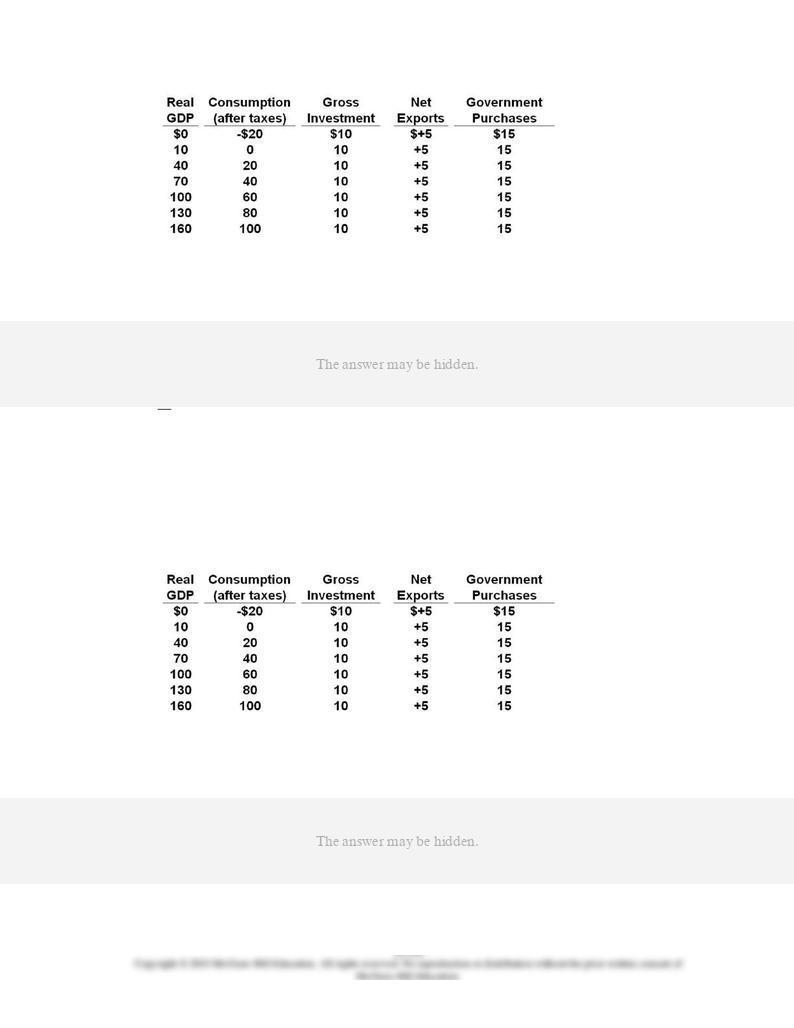
187.
Refer to the table. The economy shown is a:
AACSB: Analytic
Blooms: Apply
Difficulty: 2 Medium
Learning Objective: 29-08 Differentiate between equilibrium GDP and full-employment GDP and identify and describe the
nature and causes of "recessionary expenditure gaps" and "inflationary expenditure gaps."
Topic: Equilibrium versus full-employment GDP
Type: Table
188.
Refer to the table. The after-tax MPC in the economy shown is:
AACSB: Analytic

Blooms: Apply
Difficulty: 2 Medium
Learning Objective: 29-08 Differentiate between equilibrium GDP and full-employment GDP and identify and describe the
nature and causes of "recessionary expenditure gaps" and "inflationary expenditure gaps."
Topic: Equilibrium versus full-employment GDP
Type: Table
189.
Refer to the table. The after-tax MPS shown is:
AACSB: Analytic
Blooms: Apply
Difficulty: 2 Medium
Learning Objective: 29-08 Differentiate between equilibrium GDP and full-employment GDP and identify and describe the
nature and causes of "recessionary expenditure gaps" and "inflationary expenditure gaps."
Topic: Equilibrium versus full-employment GDP
Type: Table
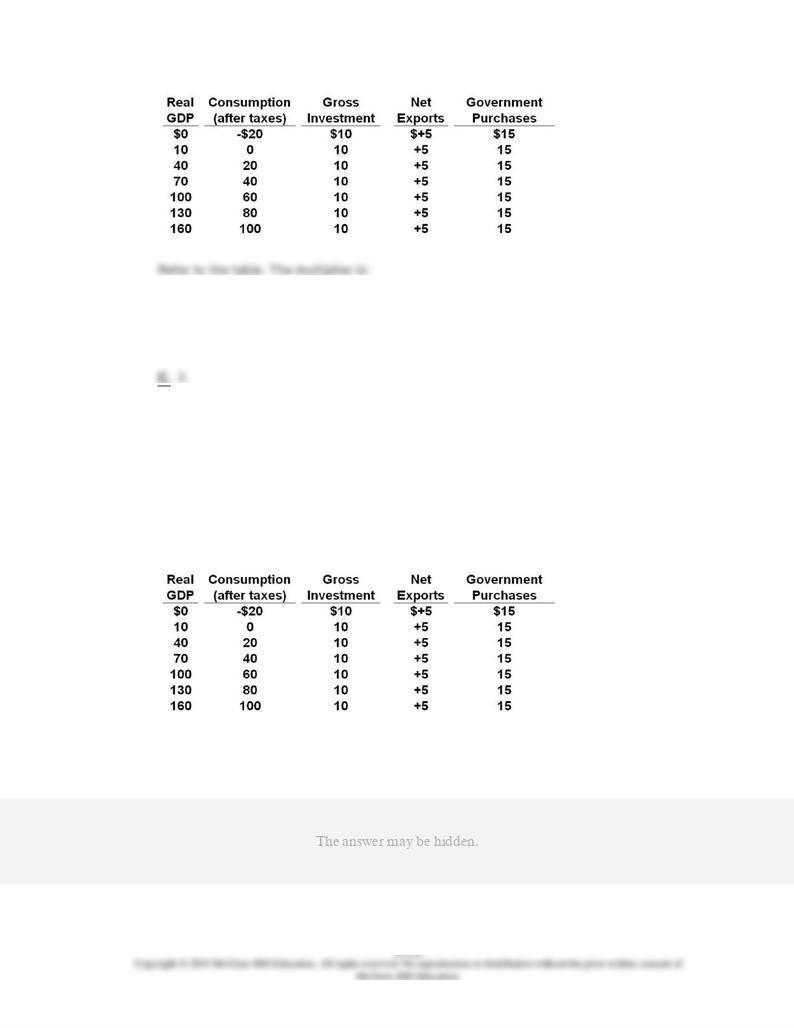
190.
A.
5.
B.
4.
D.
2.
AACSB: Analytic
Blooms: Apply
Difficulty: 2 Medium
Learning Objective: 29-08 Differentiate between equilibrium GDP and full-employment GDP and identify and describe the
nature and causes of "recessionary expenditure gaps" and "inflationary expenditure gaps."
Topic: Equilibrium versus full-employment GDP
Type: Table
191.
Refer to the table. Equilibrium GDP is:
AACSB: Analytic

Blooms: Analyze
Difficulty: 3 Hard
Learning Objective: 29-08 Differentiate between equilibrium GDP and full-employment GDP and identify and describe the
nature and causes of "recessionary expenditure gaps" and "inflationary expenditure gaps."
Topic: Equilibrium versus full-employment GDP
Type: Table
192.
Refer to the table. If the full-employment real GDP is $100, the:
AACSB: Analytic
Blooms: Analyze
Difficulty: 3 Hard
Learning Objective: 29-08 Differentiate between equilibrium GDP and full-employment GDP and identify and describe the
nature and causes of "recessionary expenditure gaps" and "inflationary expenditure gaps."
Topic: Equilibrium versus full-employment GDP
Type: Table
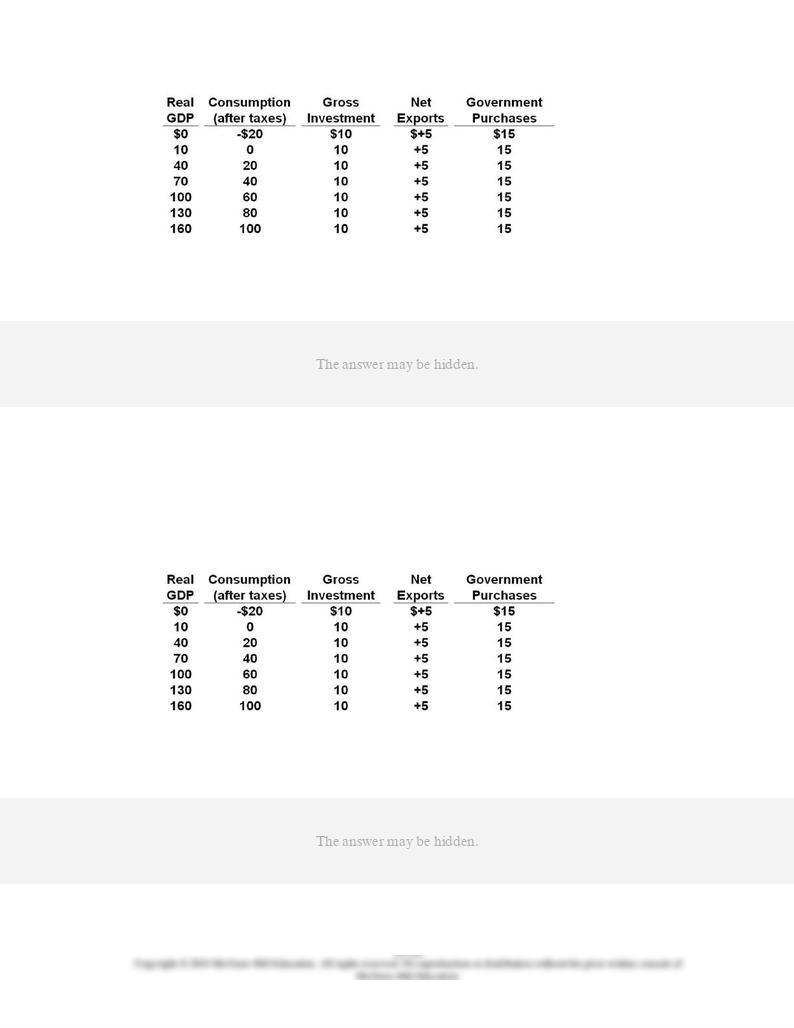
193.
Refer to the table. If the full-employment real GDP is $40, the:
AACSB: Analytic
Blooms: Analyze
Difficulty: 3 Hard
Learning Objective: 29-08 Differentiate between equilibrium GDP and full-employment GDP and identify and describe the
nature and causes of "recessionary expenditure gaps" and "inflationary expenditure gaps."
Topic: Equilibrium versus full-employment GDP
Type: Table
194.
Refer to the table. If the full-employment real GDP is $70, the:
AACSB: Analytic
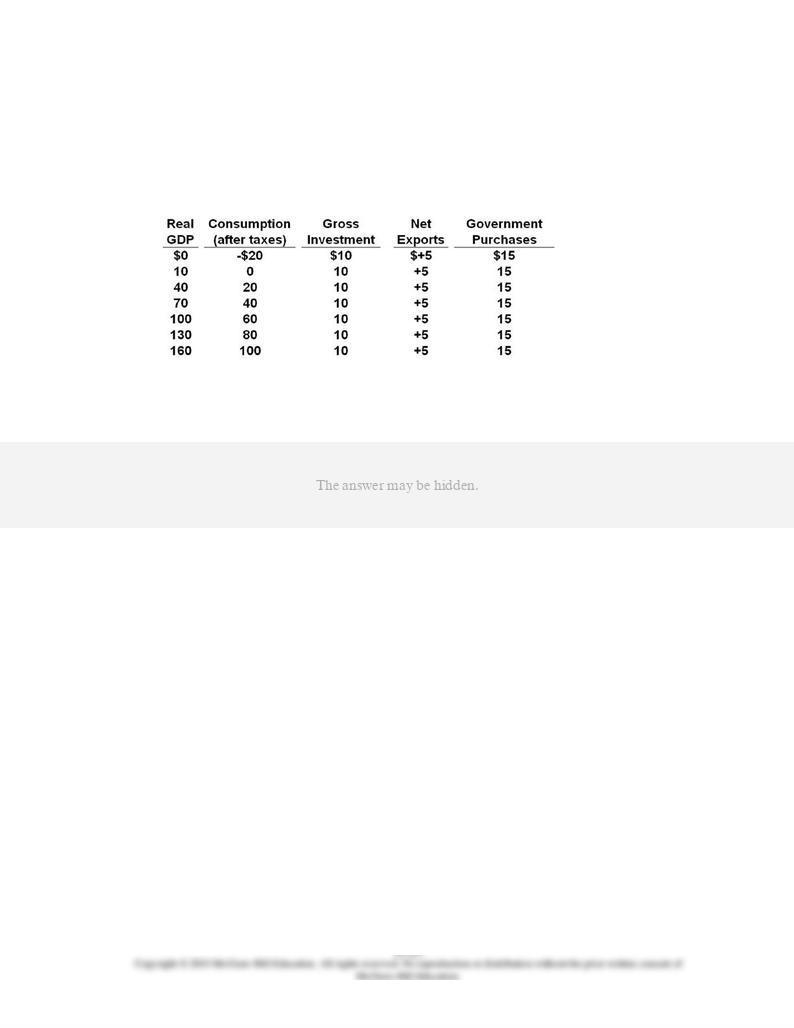
Blooms: Analyze
Difficulty: 3 Hard
Learning Objective: 29-08 Differentiate between equilibrium GDP and full-employment GDP and identify and describe the
nature and causes of "recessionary expenditure gaps" and "inflationary expenditure gaps."
Topic: Equilibrium versus full-employment GDP
Type: Table
195.
Refer to the table. Exports might be ____ and imports ____.
AACSB: Analytic
Blooms: Apply
Difficulty: 2 Medium
Learning Objective: 29-08 Differentiate between equilibrium GDP and full-employment GDP and identify and describe the
nature and causes of "recessionary expenditure gaps" and "inflationary expenditure gaps."
Topic: Equilibrium versus full-employment GDP
Type: Table

196.
Refer to the table. An increase in net exports of $10 would:
AACSB: Analytic
Blooms: Analyze
Difficulty: 3 Hard
Learning Objective: 29-08 Differentiate between equilibrium GDP and full-employment GDP and identify and describe the
nature and causes of "recessionary expenditure gaps" and "inflationary expenditure gaps."
Topic: Equilibrium versus full-employment GDP
Type: Table
197.
Refer to the table. A decrease in government purchases of $5 would:
AACSB: Analytic
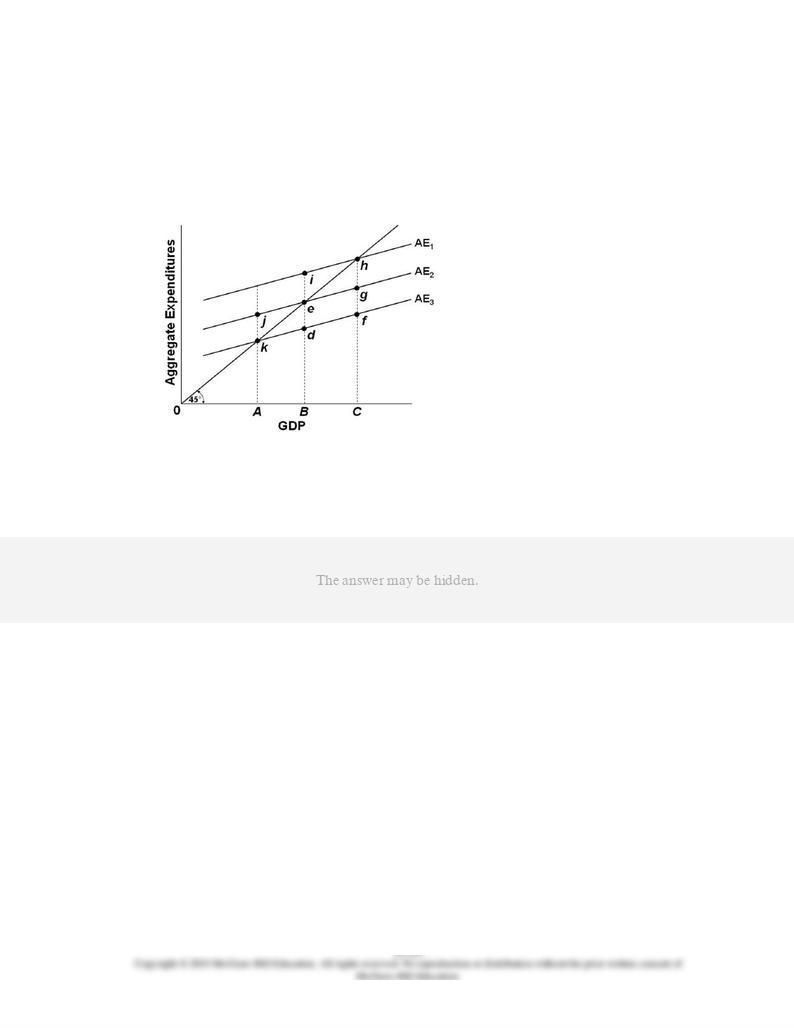
Blooms: Analyze
Difficulty: 3 Hard
Learning Objective: 29-08 Differentiate between equilibrium GDP and full-employment GDP and identify and describe the
nature and causes of "recessionary expenditure gaps" and "inflationary expenditure gaps."
Topic: Equilibrium versus full-employment GDP
Type: Table
198.
Refer to the diagram. If the full-employment level of GDP is
B
and aggregate expenditures
are at
AE
3, the:
AACSB: Reflective Thinking
Blooms: Analyze
Difficulty: 3 Hard
Learning Objective: 29-08 Differentiate between equilibrium GDP and full-employment GDP and identify and describe the
nature and causes of "recessionary expenditure gaps" and "inflationary expenditure gaps."
Topic: Equilibrium versus full-employment GDP
Type: Graph
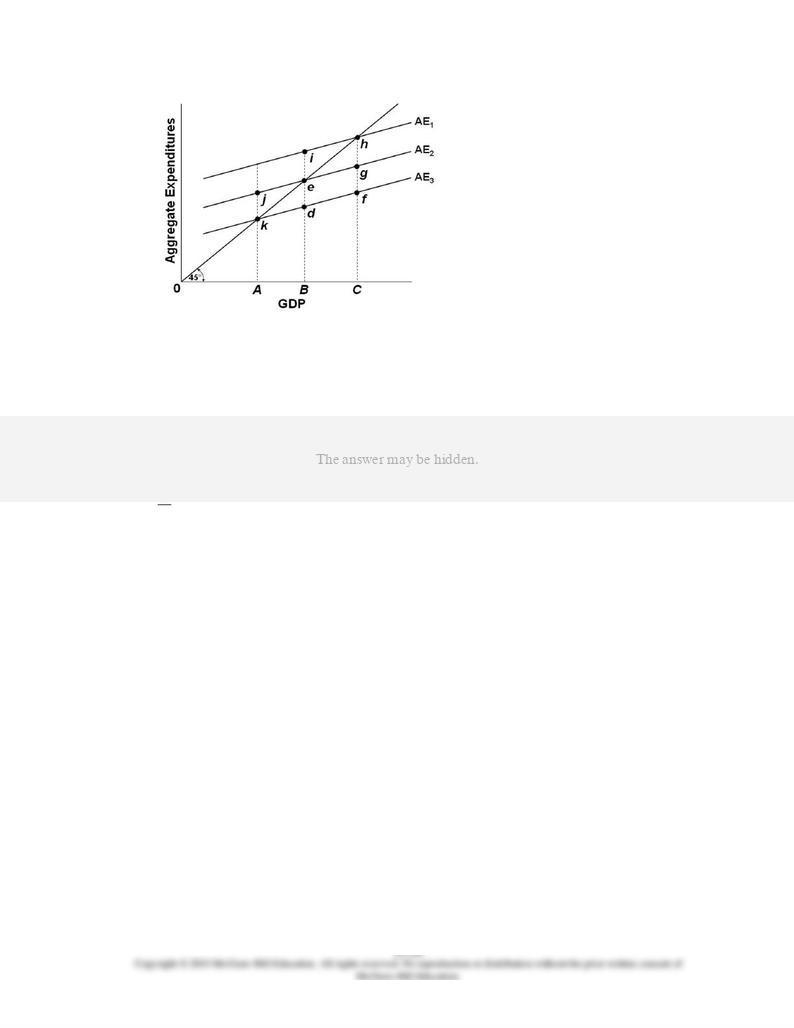
199.
Refer to the diagram. If the full-employment level of GDP is
B
and aggregate expenditures
are at
AE
1, the:
AACSB: Reflective Thinking
Blooms: Analyze
Difficulty: 3 Hard
Learning Objective: 29-08 Differentiate between equilibrium GDP and full-employment GDP and identify and describe the
nature and causes of "recessionary expenditure gaps" and "inflationary expenditure gaps."
Topic: Equilibrium versus full-employment GDP
Type: Graph

200.
Refer to the diagram. If the full-employment level of GDP is
B
and aggregate expenditures
are at
AE
2, the:
AACSB: Reflective Thinking
Blooms: Analyze
Difficulty: 3 Hard
Learning Objective: 29-08 Differentiate between equilibrium GDP and full-employment GDP and identify and describe the
nature and causes of "recessionary expenditure gaps" and "inflationary expenditure gaps."
Topic: Equilibrium versus full-employment GDP
Type: Graph
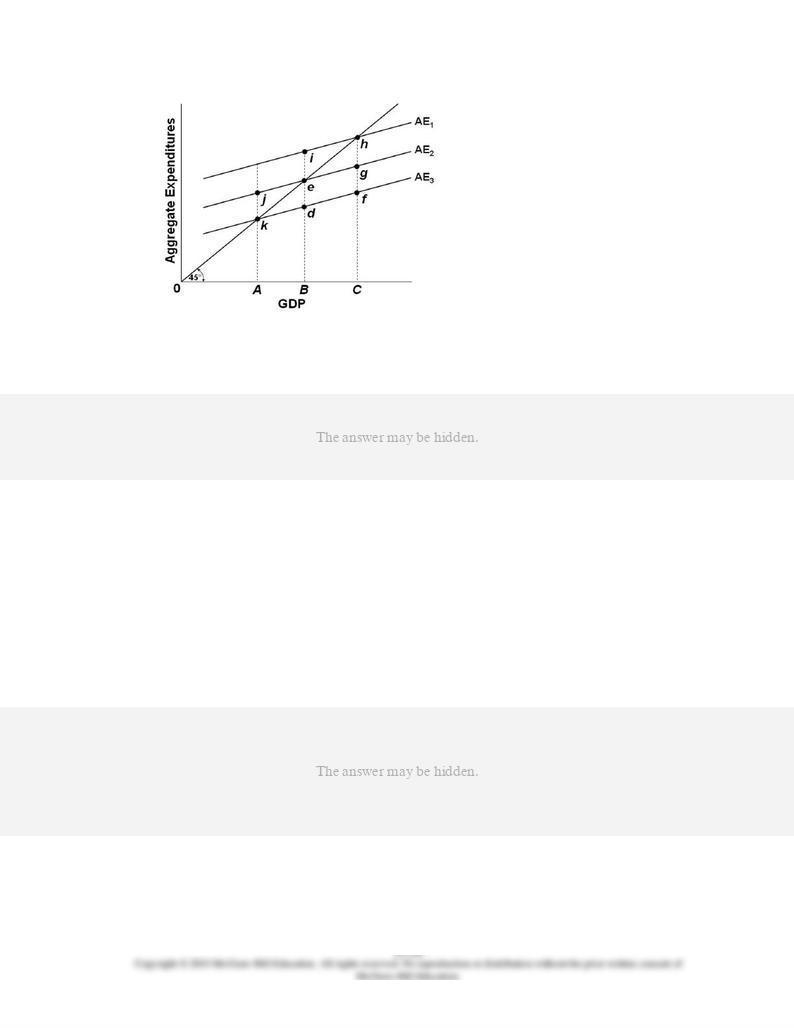
201.
Refer to the diagram. The value of the multiplier for this economy is:
AACSB: Analytic
Blooms: Apply
Difficulty: 2 Medium
Learning Objective: 29-08 Differentiate between equilibrium GDP and full-employment GDP and identify and describe the
nature and causes of "recessionary expenditure gaps" and "inflationary expenditure gaps."
Topic: Equilibrium versus full-employment GDP
Type: Graph
202.
A recessionary expenditure gap exists if:
AACSB: Reflective Thinking
Accessibility: Keyboard Navigation
Blooms: Understand
Difficulty: 2 Medium

Learning Objective: 29-08 Differentiate between equilibrium GDP and full-employment GDP and identify and describe the
nature and causes of "recessionary expenditure gaps" and "inflationary expenditure gaps."
Topic: Equilibrium versus full-employment GDP
203.
Assume the current equilibrium level of income is $200 billion as compared to the full-
employment income level of $240 billion. If the MPC is .625, what change in aggregate
expenditures is needed to achieve full employment?
AACSB: Analytic
Accessibility: Keyboard Navigation
Blooms: Analyze
Difficulty: 3 Hard
Learning Objective: 29-08 Differentiate between equilibrium GDP and full-employment GDP and identify and describe the
nature and causes of "recessionary expenditure gaps" and "inflationary expenditure gaps."
Topic: Equilibrium versus full-employment GDP
204.
If the MPS is .25 and the economy has a recessionary expenditure gap of $5 billion, then
equilibrium GDP is:
AACSB: Analytic
Accessibility: Keyboard Navigation
Blooms: Apply
Difficulty: 2 Medium
Learning Objective: 29-08 Differentiate between equilibrium GDP and full-employment GDP and identify and describe the
nature and causes of "recessionary expenditure gaps" and "inflationary expenditure gaps."
Topic: Equilibrium versus full-employment GDP
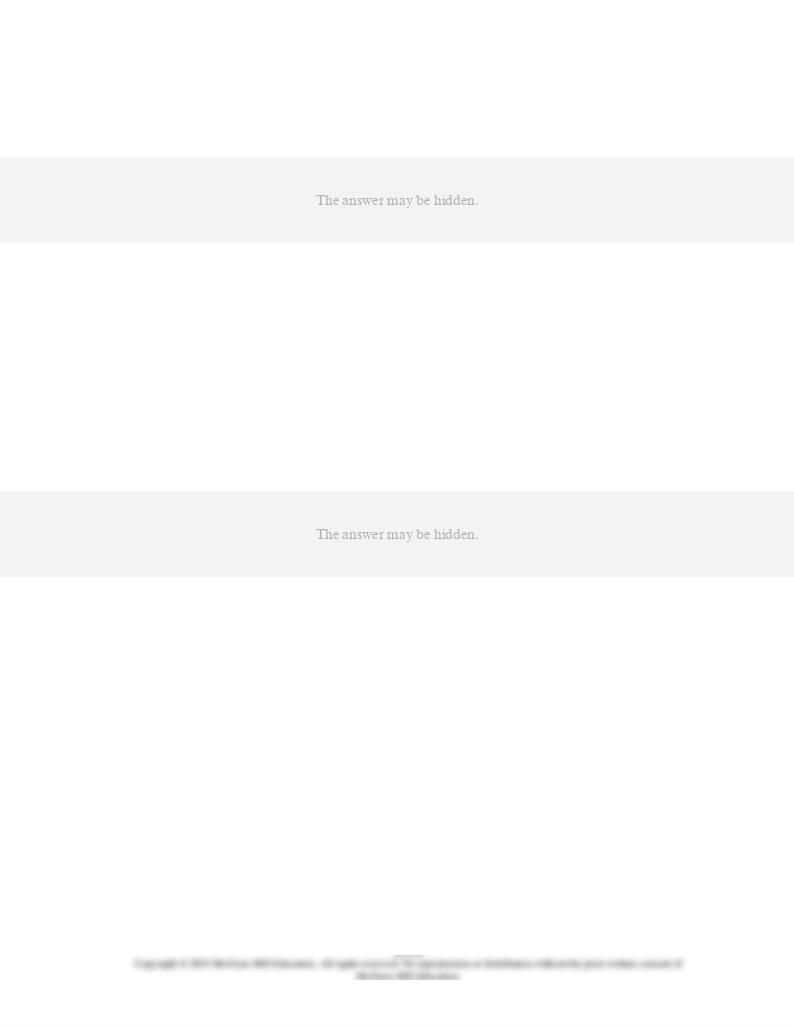
205.
Which of the following statements concerning the equilibrium level of GDP is
incorrect
?
AACSB: Reflective Thinking
Accessibility: Keyboard Navigation
Blooms: Understand
Difficulty: 2 Medium
Learning Objective: 29-08 Differentiate between equilibrium GDP and full-employment GDP and identify and describe the
nature and causes of "recessionary expenditure gaps" and "inflationary expenditure gaps."
Topic: Equilibrium versus full-employment GDP
206.
If the economy is in equilibrium at $400 billion of GDP and the full-employment GDP is
$500 billion:
AACSB: Analytic
Accessibility: Keyboard Navigation
Blooms: Understand
Difficulty: 2 Medium
Learning Objective: 29-08 Differentiate between equilibrium GDP and full-employment GDP and identify and describe the
nature and causes of "recessionary expenditure gaps" and "inflationary expenditure gaps."
Topic: Equilibrium versus full-employment GDP

207.
If an increase in aggregate expenditures results in no increase in real GDP, we can
surmise that the:
AACSB: Reflective Thinking
Accessibility: Keyboard Navigation
Blooms: Understand
Difficulty: 2 Medium
Learning Objective: 29-08 Differentiate between equilibrium GDP and full-employment GDP and identify and describe the
nature and causes of "recessionary expenditure gaps" and "inflationary expenditure gaps."
Topic: Equilibrium versus full-employment GDP
208.
If the MPC is .50 and the equilibrium GDP is $40 billion below the full-employment GDP,
then the size of the recessionary expenditure gap is:
AACSB: Analytic
Accessibility: Keyboard Navigation
Blooms: Apply
Difficulty: 2 Medium
Learning Objective: 29-08 Differentiate between equilibrium GDP and full-employment GDP and identify and describe the
nature and causes of "recessionary expenditure gaps" and "inflationary expenditure gaps."
Topic: Equilibrium versus full-employment GDP

209.
The recessionary expenditure gap associated with the recession of 2007-2009 resulted
from:
AACSB: Reflective Thinking
Accessibility: Keyboard Navigation
Blooms: Apply
Difficulty: 2 Medium
Learning Objective: 29-08 Differentiate between equilibrium GDP and full-employment GDP and identify and describe the
nature and causes of "recessionary expenditure gaps" and "inflationary expenditure gaps."
Topic: Equilibrium versus full-employment GDP
210.
In an effort to stop the U.S. recession of 2007-2009, the federal government:
AACSB: Reflective Thinking
Accessibility: Keyboard Navigation
Blooms: Apply
Difficulty: 2 Medium
Learning Objective: 29-08 Differentiate between equilibrium GDP and full-employment GDP and identify and describe the
nature and causes of "recessionary expenditure gaps" and "inflationary expenditure gaps."
Topic: Equilibrium versus full-employment GDP
211.
The U.S. recession of 2007-2009 provides a good example of:
AACSB: Reflective Thinking

Accessibility: Keyboard Navigation
Blooms: Apply
Difficulty: 2 Medium
Learning Objective: 29-08 Differentiate between equilibrium GDP and full-employment GDP and identify and describe the
nature and causes of "recessionary expenditure gaps" and "inflationary expenditure gaps."
Topic: Equilibrium versus full-employment GDP
212.
Viewed through the aggregate expenditures model, the U.S. recession of 2007-2009
resulted mainly from:
AACSB: Reflective Thinking
Accessibility: Keyboard Navigation
Blooms: Apply
Difficulty: 2 Medium
Learning Objective: 29-08 Differentiate between equilibrium GDP and full-employment GDP and identify and describe the
nature and causes of "recessionary expenditure gaps" and "inflationary expenditure gaps."
Topic: Equilibrium versus full-employment GDP
213.
(Last Word) Say's law and classical macroeconomics were disputed by:
AACSB: Reflective Thinking
Accessibility: Keyboard Navigation
Blooms: Remember
Difficulty: 1 Easy
Learning Objective: 29-01 Explain how sticky prices relate to the aggregate expenditures model.
Topic: Assumptions and simplifications
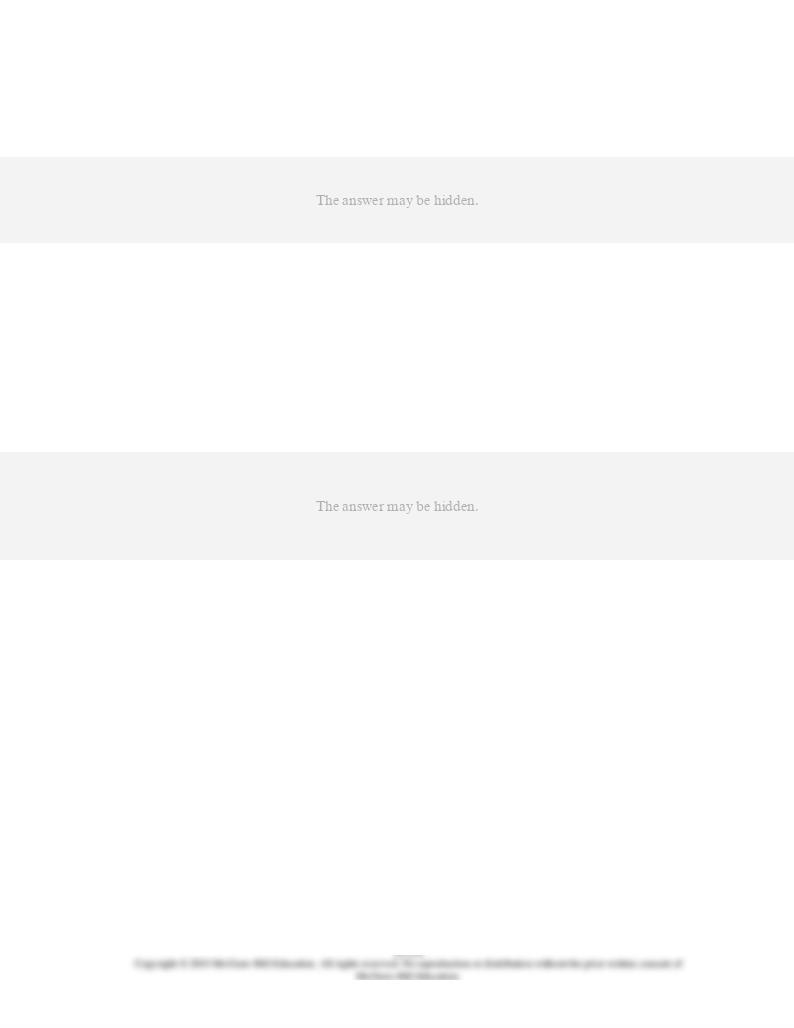
214.
(Last Word) Classical macroeconomics was dealt severe blows by:
AACSB: Reflective Thinking
Accessibility: Keyboard Navigation
Blooms: Remember
Difficulty: 1 Easy
Learning Objective: 29-01 Explain how sticky prices relate to the aggregate expenditures model.
Topic: Assumptions and simplifications
215.
(Last Word) In
The
General
Theory
of
Employment,
Interest,
and
Money
:
AACSB: Reflective Thinking
Accessibility: Keyboard Navigation
Blooms: Remember
Difficulty: 1 Easy
Learning Objective: 29-01 Explain how sticky prices relate to the aggregate expenditures model.
Topic: Assumptions and simplifications
True / False Questions
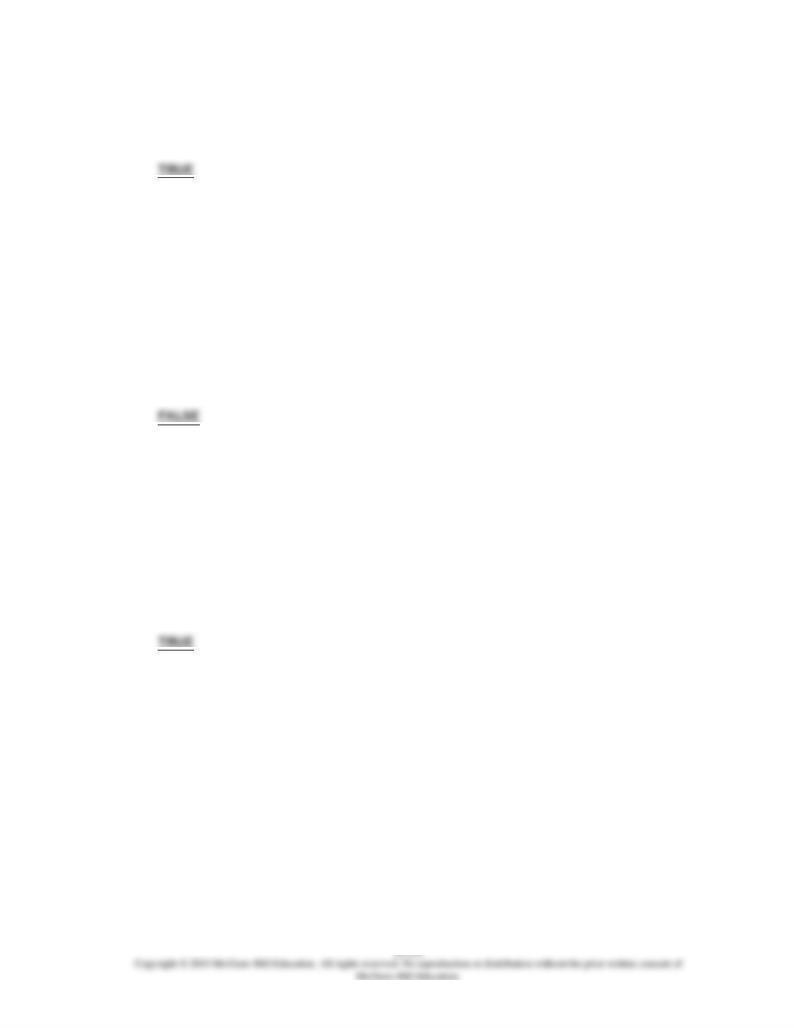
216.
Graphically, the height of the investment schedule depends on the real interest rate,
together with the location of the investment demand curve.
AACSB: Reflective Thinking
Accessibility: Keyboard Navigation
Blooms: Understand
Difficulty: 2 Medium
Learning Objective: 29-02 Explain how an economy's investment schedule is derived from the investment demand curve
and an interest rate.
Topic: Consumption and investment schedules
217.
In the aggregate expenditures model presented in the textbook, investment is assumed to
rise with increases in real GDP and fall with decreases in real GDP.
AACSB: Reflective Thinking
Accessibility: Keyboard Navigation
Blooms: Remember
Difficulty: 1 Easy
Learning Objective: 29-02 Explain how an economy's investment schedule is derived from the investment demand curve
and an interest rate.
Topic: Consumption and investment schedules
218.
In the private closed economy, equilibrium GDP occurs where
C
+
Ig
= GDP.
AACSB: Analytic
Accessibility: Keyboard Navigation
Blooms: Remember
Difficulty: 1 Easy
Learning Objective: 29-03 Illustrate how economists combine consumption and investment to depict an aggregate
expenditures schedule for a private closed economy and how that schedule can be used to demonstrate the economy's
equilibrium level of output (where the total quantity of goods produced equals the total quantity of goods purchased).
Topic: Equilibrium GDP: C + Ig = GDP
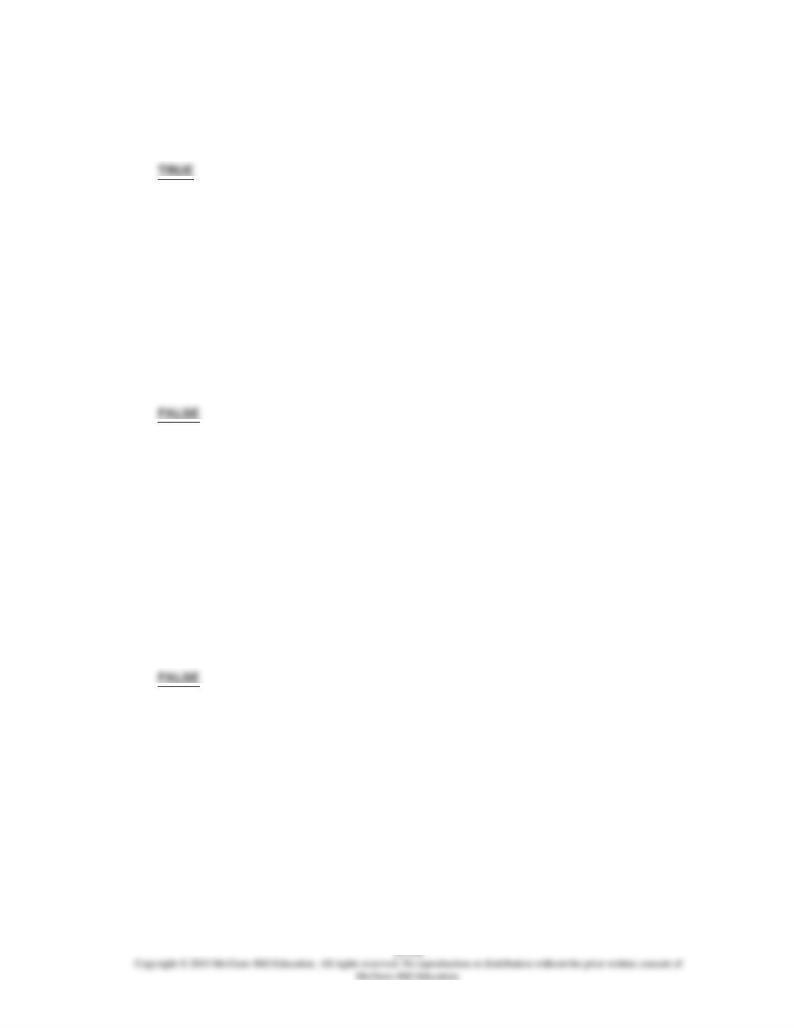
219.
When
C
+
Ig
= GDP in a private closed economy,
S
=
Ig
and there are no unplanned
changes in inventories.
AACSB: Analytic
Accessibility: Keyboard Navigation
Blooms: Understand
Difficulty: 2 Medium
Learning Objective: 29-03 Illustrate how economists combine consumption and investment to depict an aggregate
expenditures schedule for a private closed economy and how that schedule can be used to demonstrate the economy's
equilibrium level of output (where the total quantity of goods produced equals the total quantity of goods purchased).
Topic: Equilibrium GDP: C + Ig = GDP
220.
If
C
+
Ig
exceeds GDP in a private closed economy, GDP will decline.
AACSB: Reflective Thinking
Accessibility: Keyboard Navigation
Blooms: Understand
Difficulty: 2 Medium
Learning Objective: 29-03 Illustrate how economists combine consumption and investment to depict an aggregate
expenditures schedule for a private closed economy and how that schedule can be used to demonstrate the economy's
equilibrium level of output (where the total quantity of goods produced equals the total quantity of goods purchased).
Topic: Equilibrium GDP: C + Ig = GDP
221.
If the MPC is .8 in a private closed economy, a $30 billion increase in planned investment
will increase equilibrium real GDP by $120 billion.
AACSB: Analytic
Accessibility: Keyboard Navigation
Blooms: Apply
Difficulty: 2 Medium
Learning Objective: 29-03 Illustrate how economists combine consumption and investment to depict an aggregate
expenditures schedule for a private closed economy and how that schedule can be used to demonstrate the economy's
equilibrium level of output (where the total quantity of goods produced equals the total quantity of goods purchased).
Topic: Equilibrium GDP: C + Ig = GDP

222.
Actual investment consists of planned investment plus unplanned changes in inventories
(plus or minus).
AACSB: Analytic
Accessibility: Keyboard Navigation
Blooms: Remember
Difficulty: 1 Easy
Learning Objective: 29-03 Illustrate how economists combine consumption and investment to depict an aggregate
expenditures schedule for a private closed economy and how that schedule can be used to demonstrate the economy's
equilibrium level of output (where the total quantity of goods produced equals the total quantity of goods purchased).
Topic: Equilibrium GDP: C + Ig = GDP
223.
A $20 billion decrease in investment in a private closed economy that has an MPS of .5
will reduce saving by $10 billion once the multiplier process has ended.
AACSB: Analytic
Accessibility: Keyboard Navigation
Blooms: Apply
Difficulty: 2 Medium
Learning Objective: 29-03 Illustrate how economists combine consumption and investment to depict an aggregate
expenditures schedule for a private closed economy and how that schedule can be used to demonstrate the economy's
equilibrium level of output (where the total quantity of goods produced equals the total quantity of goods purchased).
Topic: Equilibrium GDP: C + Ig = GDP
224.
Exports are added to, and imports are subtracted from, aggregate expenditures in moving
from a closed to an open economy.
AACSB: Analytic
Accessibility: Keyboard Navigation
Blooms: Remember
Difficulty: 1 Easy
Learning Objective: 29-06 Explain how economists integrate the international sector (exports and imports) into the
aggregate expenditures model.
Topic: Adding international trade

225.
For an open mixed economy, the equilibrium level of GDP is determined where
Sa
+
Ig
+
X
AACSB: Analytic
Accessibility: Keyboard Navigation
Blooms: Remember
Difficulty: 1 Easy
Learning Objective: 29-06 Explain how economists integrate the international sector (exports and imports) into the
aggregate expenditures model.
Topic: Adding international trade
226.
Equal increases in government expenditures and tax collections will leave the equilibrium
GDP unchanged.
AACSB: Reflective Thinking
Accessibility: Keyboard Navigation
Blooms: Understand
Difficulty: 2 Medium
Learning Objective: 29-07 Explain how economists integrate the public sector (government expenditures and taxes) into
the aggregate expenditures model.
Topic: Adding the public sector
227.
A $10 billion decrease in taxes will increase the equilibrium GDP by more than would a
$10 billion increase in government expenditures.
AACSB: Analytic
Accessibility: Keyboard Navigation
Blooms: Apply
Difficulty: 2 Medium
Learning Objective: 29-07 Explain how economists integrate the public sector (government expenditures and taxes) into
the aggregate expenditures model.
Topic: Adding the public sector
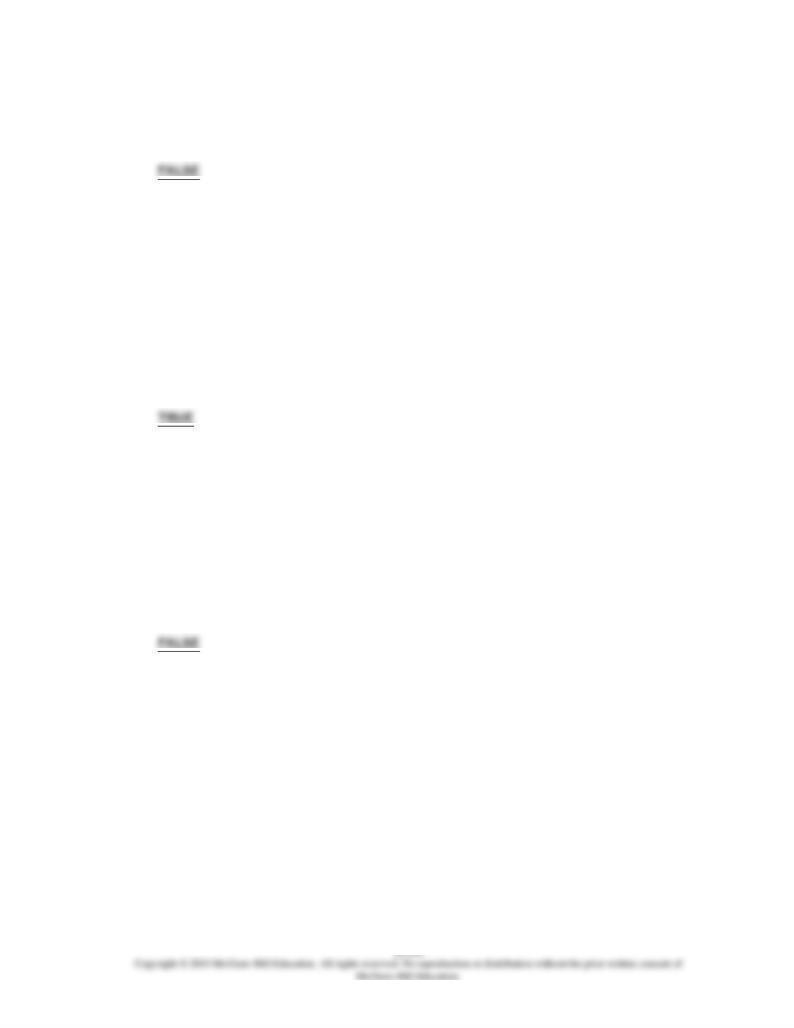
228.
A lump-sum tax causes the after-tax consumption schedule to be flatter than the before-
tax consumption schedule.
AACSB: Reflective Thinking
Accessibility: Keyboard Navigation
Blooms: Understand
Difficulty: 2 Medium
Learning Objective: 29-07 Explain how economists integrate the public sector (government expenditures and taxes) into
the aggregate expenditures model.
Topic: Adding the public sector
229.
If government decreases its purchases by $20 billion and the MPC is .8, equilibrium GDP
will decrease by $100 billion.
AACSB: Analytic
Accessibility: Keyboard Navigation
Blooms: Analyze
Difficulty: 3 Hard
Learning Objective: 29-07 Explain how economists integrate the public sector (government expenditures and taxes) into
the aggregate expenditures model.
Topic: Adding the public sector
230.
If the MPC is .9, a $20 billion increase in a lump-sum tax will reduce GDP by $200 billion.
AACSB: Analytic
Accessibility: Keyboard Navigation
Blooms: Analyze
Difficulty: 3 Hard
Learning Objective: 29-07 Explain how economists integrate the public sector (government expenditures and taxes) into
the aggregate expenditures model.
Topic: Adding the public sector
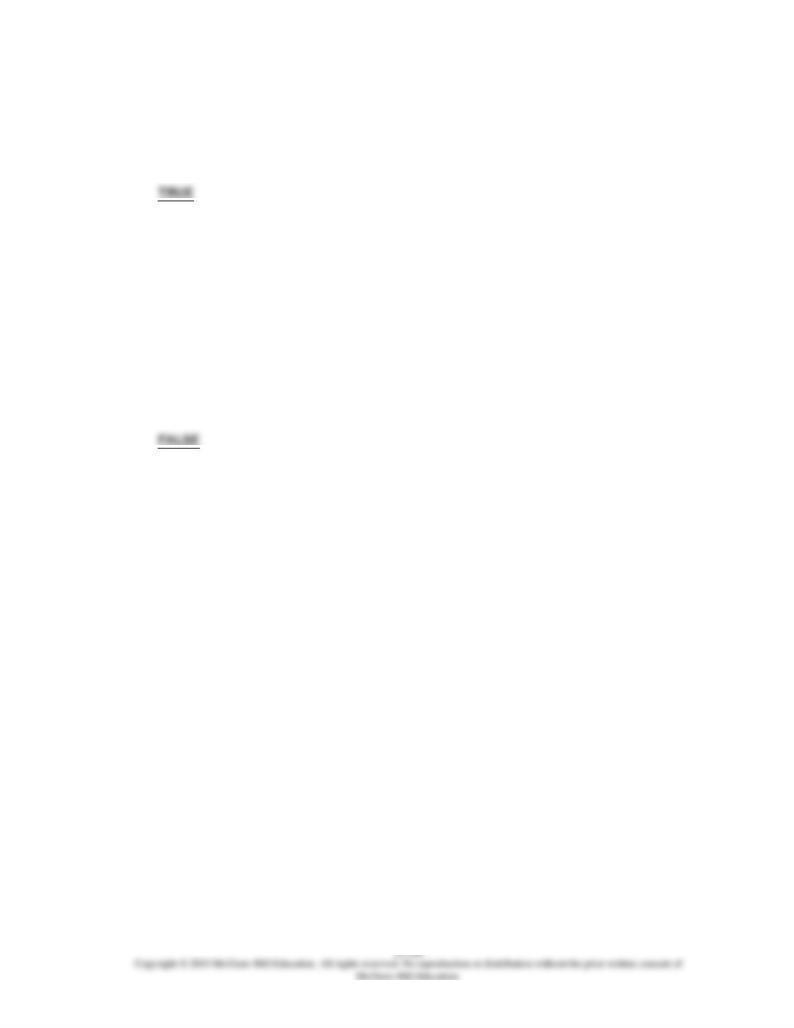
231.
A recessionary expenditure gap in a mixed open economy can be measured as the extent
to which aggregate expenditures (
Ca
+
Ig
+
Xn
+
G
) fall short of real GDP at the full-
employment level of real GDP.
AACSB: Analytic
Accessibility: Keyboard Navigation
Blooms: Remember
Difficulty: 1 Easy
Learning Objective: 29-08 Differentiate between equilibrium GDP and full-employment GDP and identify and describe the
nature and causes of "recessionary expenditure gaps" and "inflationary expenditure gaps."
Topic: Equilibrium versus full-employment GDP
232.
The recessionary expenditure gap is the amount by which the equilibrium GDP and the
full-employment GDP differ.
AACSB: Analytic
Accessibility: Keyboard Navigation
Blooms: Remember
Difficulty: 1 Easy
Learning Objective: 29-08 Differentiate between equilibrium GDP and full-employment GDP and identify and describe the
nature and causes of "recessionary expenditure gaps" and "inflationary expenditure gaps."
Topic: Equilibrium versus full-employment GDP